A travel & food blog
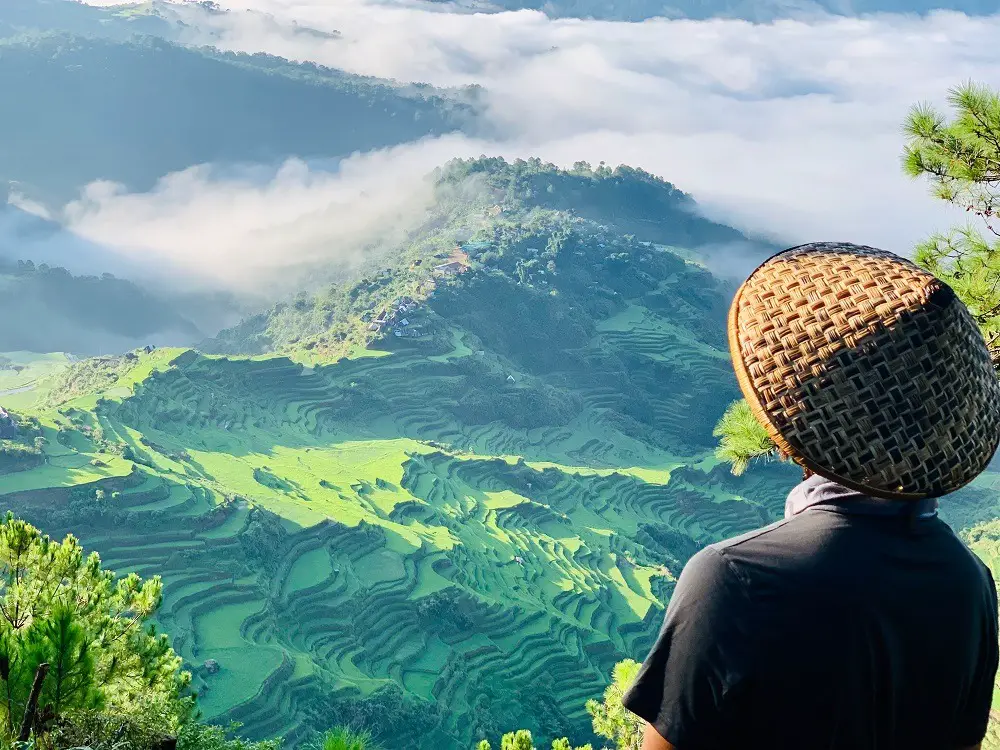

A First-Timer’s Guide to the Philippines
Are you traveling to the Philippines for the first time? Here’s a guide that covers everything you need to know about the Philippines — including currency, weather, things to do and more!
I’ll also be adding personal tips from years of living here as a local.
An Overview of The Philippines
How to get around, is it safe to visit the philippines, how much does it cost to travel around the philippines, how long should you stay in the philippines, what to eat and drink, what to read next:.
The Philippines is an archipelagic country made up of over 7000 islands. It’s made up of 3 main island groups: Luzon , Visayas , and Mindanao. Its capital is Metro Manila , which is located in the NCR Region in Luzon.
This unique geography means several things:
- It has an abundance of natural resources. It has numerous islands which are ideal for water activities such as swimming, snorkeling, diving, and island hopping.
- Because the communities are scattered, you will find that people speak different dialects! However, Filipino and English languages are still the main languages used.
- Different cultures, arts, and cuisine can be found in each province!
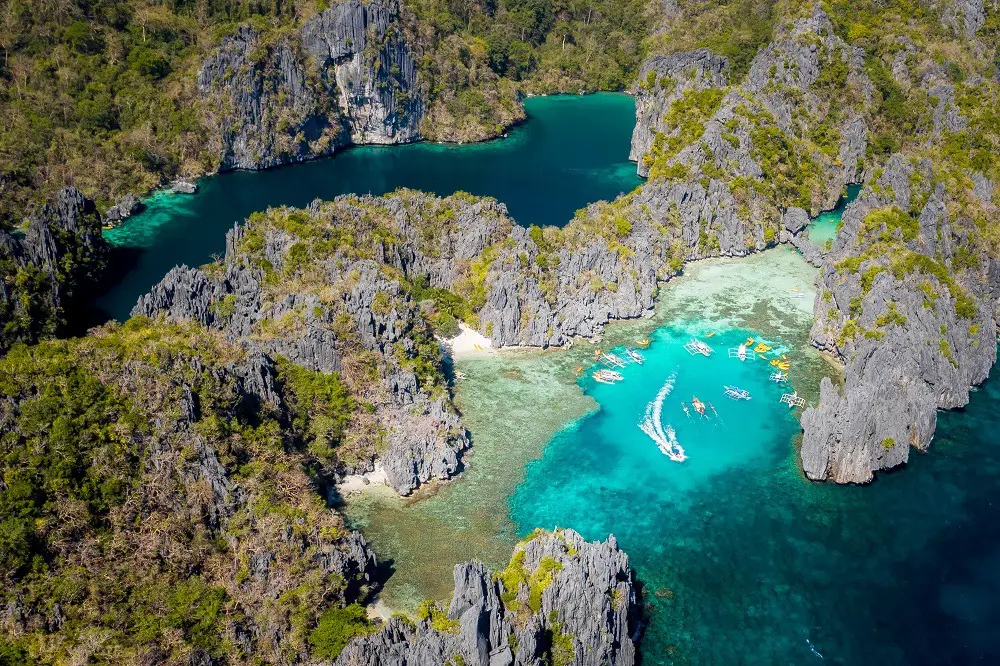
Basic information
For other tips, check out our list of Things To Know Before Visiting the Philippines .
US passport holders do not need to secure a visa before flying in. US and other citizens can enter visa free provided that:
- Stay is no longer than 30 days
- Passport is valid for at least 6 months
- There is proof of onward passage.
The Philippines uses Philippine peso as its currency. Currently, exchange rates are about $1 to P50.
The locals speak both Filipino and English. The Philippines is one of the few countries in Asia with high fluency in the English language, so communication is easy. The locals may not be able to communicate with you perfectly, but you’ll understand each other.
The Philippines is a tropical country with 2 distinct seasons: dry season (November to May) and rainy season (June to October).
The dry season is the best time to visit this country. In particular, December to February are cool months with few rainfall so these are the best months to book your ticket. Take note that December is holiday season, so expect peak rates. April to May is summer time so expect good weather in general, but it also coincides with school break so it’s peak season as well.
Personal Tip : The rainy season is considered off-peak season, so you might choose to visit during this time to experience less tourists and cheaper rates. I like traveling during off-peak season, but it’s a gamble since you’ll never know when a typhoon will enter the country. It’s also worth nothing that some areas in the Philippines aren’t as affected by typhoons due to location or geographical features, such as Palawan.
Because the country is made up of islands, you will need to strategically plan your route (and budget!). For example, if you’re flying from Manila to Boracay or Palawan, you will need to take a local flight. Direct land or sea travel may not always be available or may take too long.
Check out low-cost airlines Cebu Pacific and Airasia . Websites such as Traveloka also offer good rates for flights and accommodations.
On land, public transportation is available in major cities. This includes tricycles, jeepneys, and buses. There are also taxis.
Personal Tips :
- Booking your tickets early makes a huge difference in saving money. Check out our Hacks to Book Cheap Flights in the Philippines .
- Install Angkas (for motorcycles rides) or Grab (car or taxi) for easy transport.
Frequently Asked Questions
Here are some common questions about the Philippines.
Yes. For a more detailed answer, here’s my post on Safety in the Philippines .
The Philippines isn’t as cheap as other places in Southeast Asia — but it’s still cheap if you’re coming from US or other Western countries with high exchange rate.
Here are the general prices:
- Accommodation : Standard room (good for 2 people) – P2000-2500
- Meals : P100 per person
- Activities : Island hopping tour (joiner rate) – P1000-1500 per person
Prices depend on each location. Generally, a day’s budget can be anywhere from P700 to P1500 if you’re traveling with at least one other person (including accommodation, food, and tours). This excludes other extra activities such as diving.
I have written a guide on How to Travel the Philippines on A Budget .
If you’re planning to visit the major tourist attractions, 3 weeks is enough time.
Here’s a suggested 2 weeks itinerary and 3 weeks itinerary in the Philippines .
Best Places to See in the Philippines
This is a general overview of the major tourist attractions in the Philippines. I have written a separate, more in-depth guide about the Best Places to Visit in the Philippines .
This is the capital city of the Philippines. It’s home to NAIA international airport and is often the entry point of tourists. You can take a tour in Manila or proceed directly to connecting flights to other locations.
Manila has a bit of cultural sights, but it also has horrendous traffic and pollution. As most locals will advise you, it’s best to get away from here as quickly as possibly, unless you really want to see Intramuros or the shopping malls.
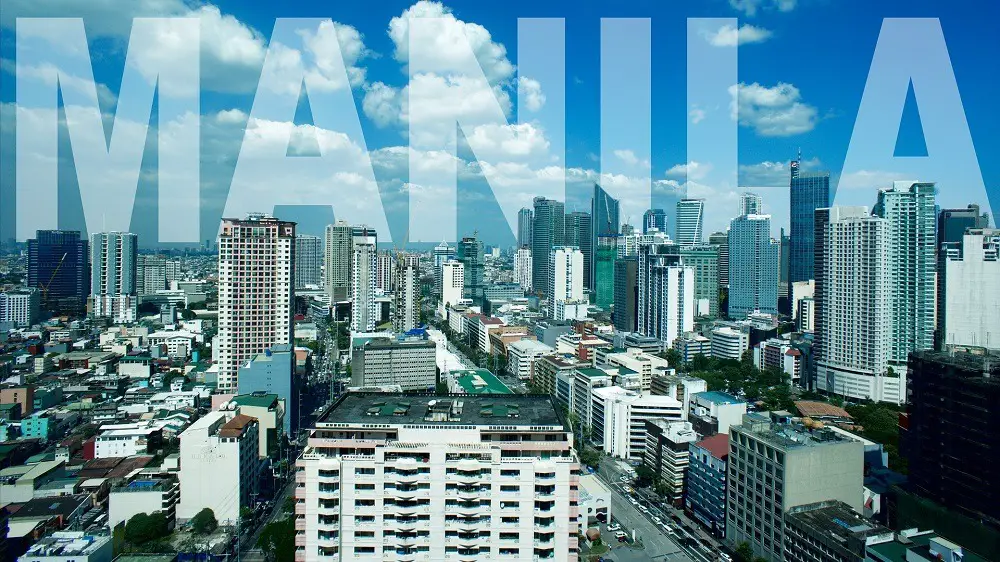
Palawan is top tourist attraction in the Philippines. Even if you’re not a mainstream traveler, don’t skip this yet! Palawan has amazing nature sights and activities that you can’t find anywhere else.
Head to Puerto Princesa to see the Underground River , a UNESCO World Heritage Site. Then proceed to El Nido to see the Small Lagoon, Big Lagoon, and other beautiful islands. Transfer to Coron to see Kayangan Lake (considered the cleanest lake in Asia), Twin Lagoon, and other exotic spots.
If you’re looking for low-key places, Balabac offers gorgeous pristine islands, including Onuk Island . Port Barton offers a quiet beach getaway with island hopping and waterfall activities. Aside from these, you can also visit Dumaran, Linapacan, and Sibaltan.
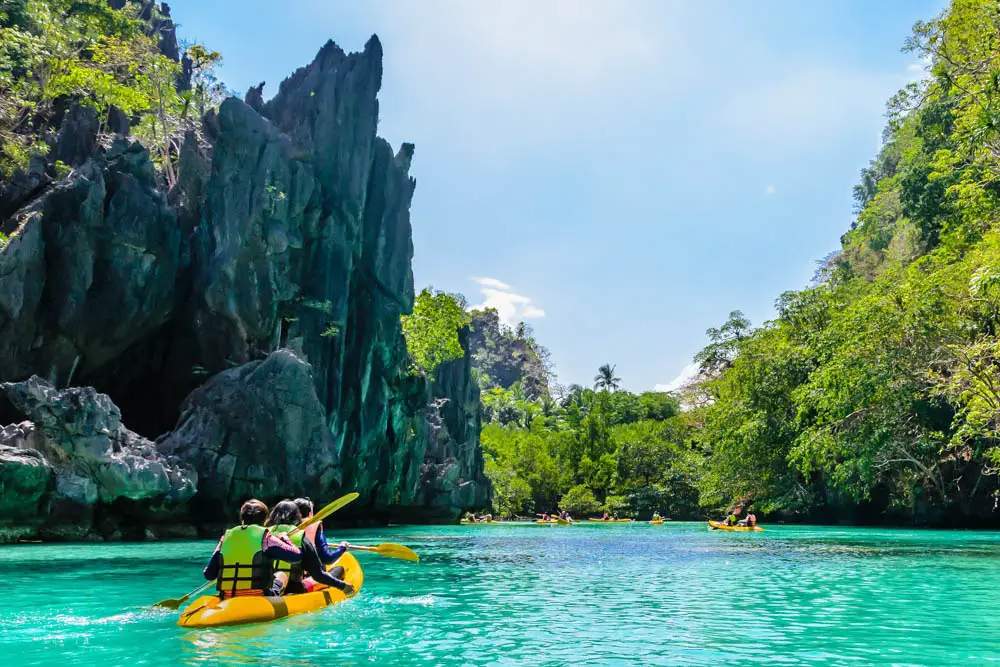
Cebu is another main tourist attraction in the Philippines.
While in Cebu City, you can do a city tour, go on food tripping to taste delicacies such as lechon, or island hop. From Cebu City, you can explore other parts of the province.
In the south, you can visit Moalboal to see the sardine run and other diving spots. Then to Oslob for Kawasan Falls. (Please skip whale shark watching in Oslob as it’s not an eco-friendly activity .) In the north, you’ll find Bantayan Island which is famous for its white-sand beaches and Malapascua Island , another island for diving. If you’re after a quiet beach vacation, head to the east to Camotes Island.
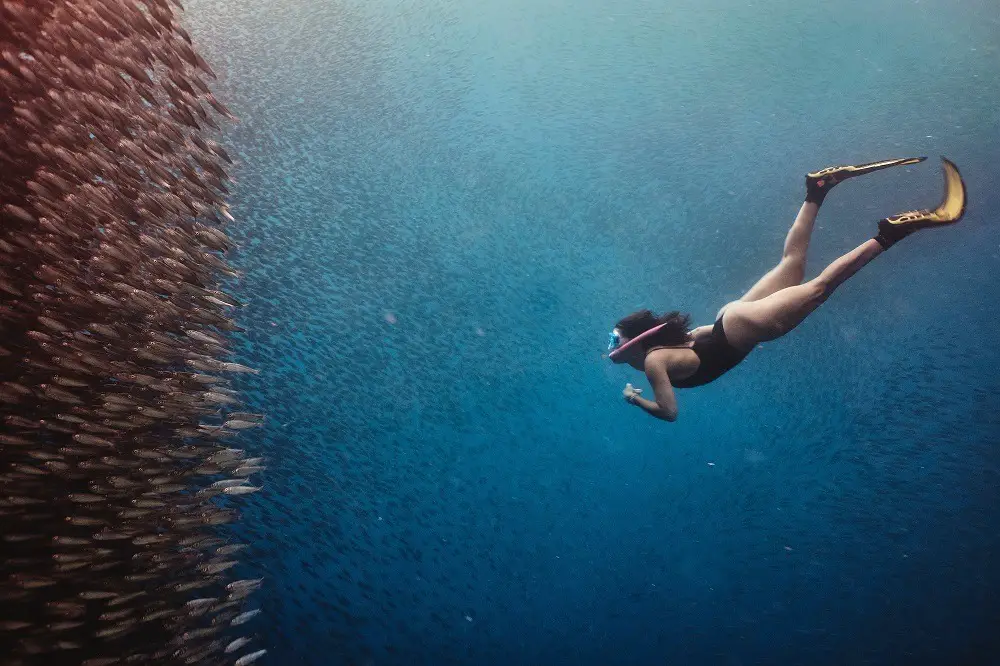
While in Cebu, you may drop by its sister province. Bohol features the famous Chocolate Hills. It also has white-sand beaches, particularly in Panglao.
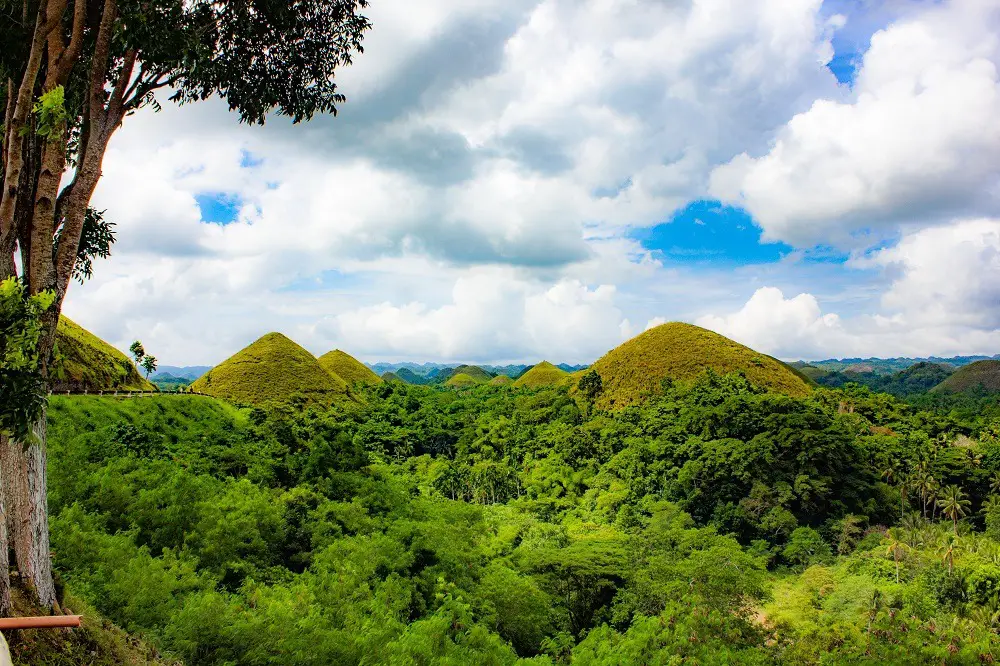
Boracay is a world-famous island beach. My experience is that it’s a love-it or hate-it type.
Here you can see White Beach, which is one of the most beautiful beaches in the country. You can also do numerous watersport activities such as snorkeling, diving, and even mermaid swimming.
Tourists may skip Boracay in favor of other less-commercial areas, but if you’re looking for a place that’s easy to travel to (especially if you’re with a family or special someone), this is still a good place to consider.
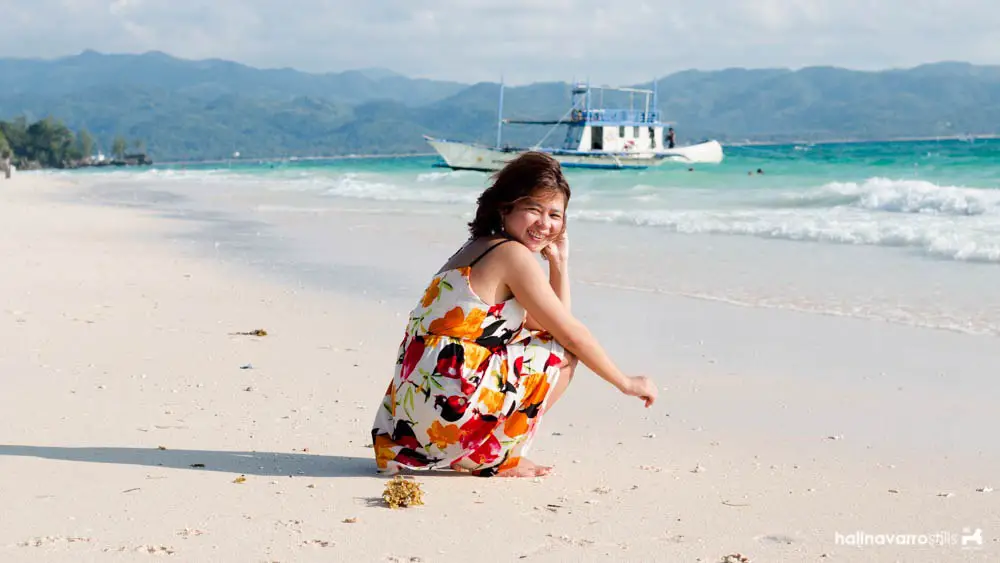
Siargao is known as the Surfing Capital of the Philippines . With different surf breaks around the island, it’s popular among amateur and professional surfers.
Siargao is a gorgeous tropical island which I highly recommend you visit. Aside from surfing, you can also explore land attractions including coconut farms, rivers, and caves. You can also go island hopping or charter a boat to the nearby Sohoton Cove.
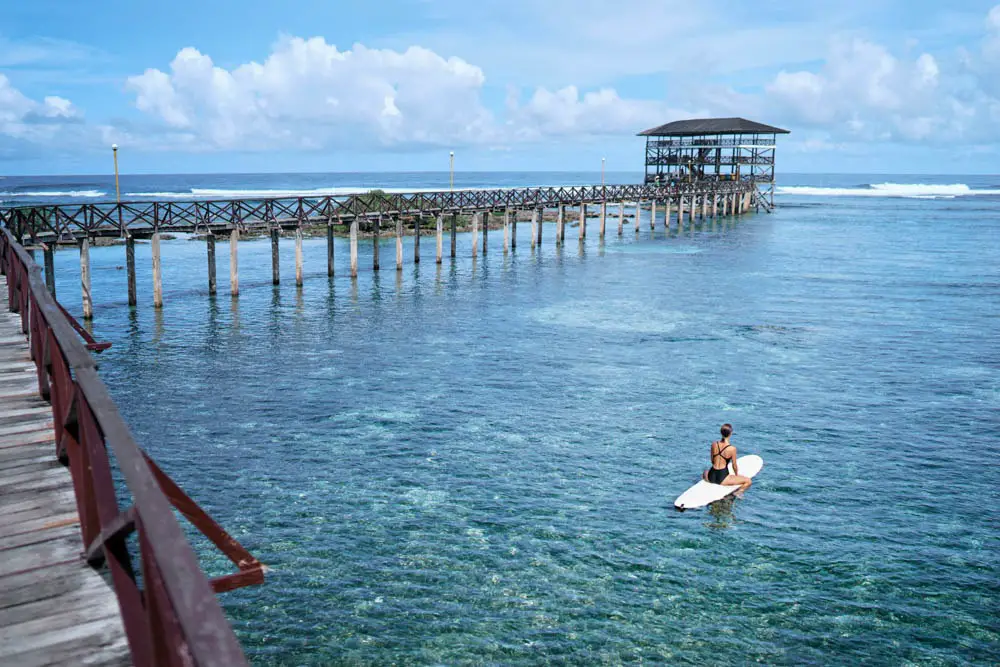
Other Recommended Places to See
Here are relatively less-visited places that you may also consider on your visit to the Philippines. These are places I’d gone to and which I can recommend whole-heartedly.
Sorsogon is one of my favorite places in the Philippines. There is a lot of things to do in Sorsogon , including island hopping , surfing, and even whale shark watching. Take note that the whale shark activity here is considered more ethical than that in Oslob (Cebu) and even promoted by WWF.
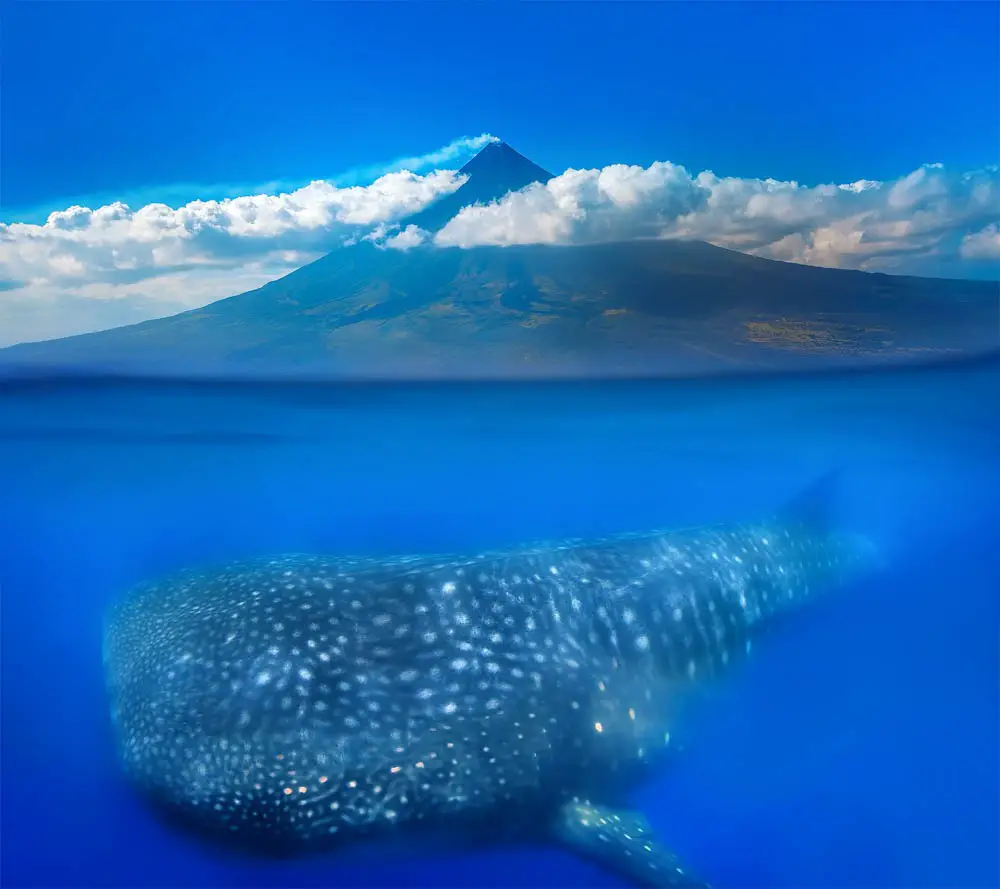
Camiguin is an underrated island in Mindanao. Its more primarily known for White Island, but if you explore further you will see amazing diving locations and even a marine sanctuary home to thousands of giant clams .
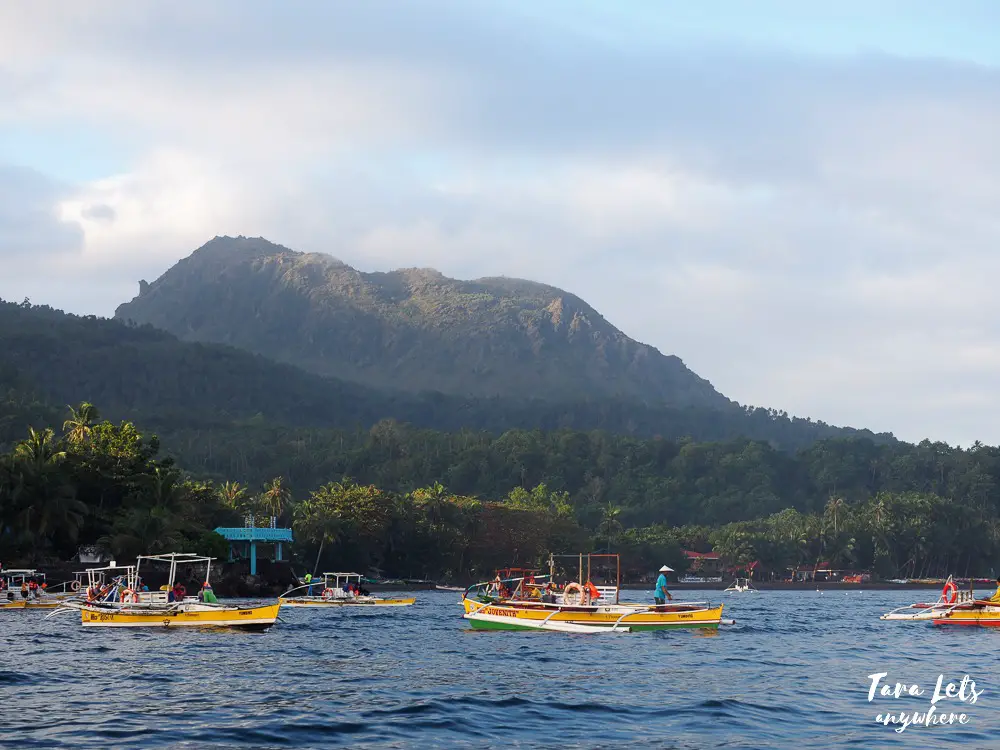
Zamboanga isn’t often visited by foreign tourists because of the reputation of Mindanao as an unsafe area. This is saddening to know, as in my experience based on the two trips I’d been here (and conversations I’d made with the locals), Zamboanga City is perfectly safe.
Not only that, the city also has a colorful history, architecture, and one of the best cuisines in the country.
It’s also the gateway to other places in Mindanao, including the next item on my list — Tawi-Tawi.
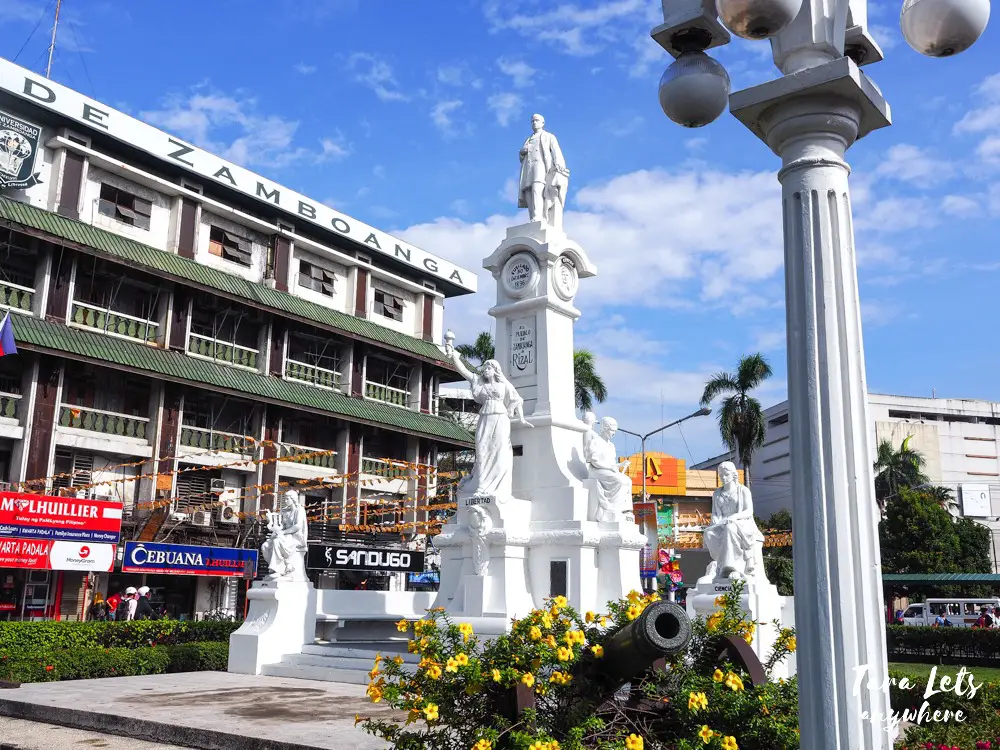
Tawi-Tawi is one of the best places you can visit in the Philippines! I only spent a short time here, but every time I remember about my experiences I still can’t help but smile.
There are a lot of things you can do in Tawi-Tawi . You can immerse with locals, eat fresh seafood to your heart’s content (seafood is fresh and cheap, and yes, you will get fat if you stay here for days), island hop to surrounding islands , snorkel and dive, and more.
Tawi-Tawi is one of my favorite places and I can’t recommend it enough! Due to its location and lack of tourists, it offers a truly authentic experience.
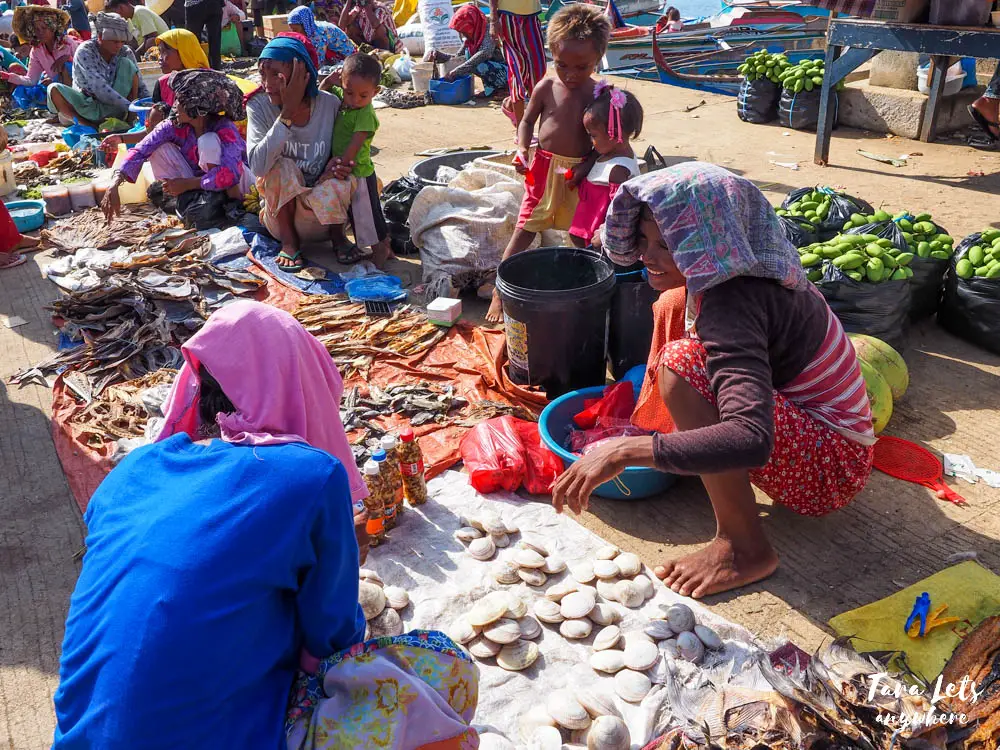
If you’re specifically looking for off-beaten areas, here’s my recommendation on Off-Beaten Destinations in the Philippines .
Filipino food doesn’t really have the best reputation especially in comparison to other countries in Southeast Asia, but you can find remarkable dishes here as well. I’ve made a separate guide on Must-Try Foods in the Philippines .
Some must-try’s include sinigang (soup with sampaloc or other sour fruit), sisig (grilled pork face), kare-kare (stew with peanut sauce), dinuguan (soup with pig’s blood), kilawin (fresh fish marinated in vinegar) and laing (gabi leaves in coconut milk).
For desserts, halo-halo is a summer favorite.
The Philippines also has a street food scene. Try kwek-kwek, inihaw (grilled food such as chicken intenstine), or balut (the infamous boiled duck embryo) .
Here’s a sample video of Filipino street food found in Cebu .
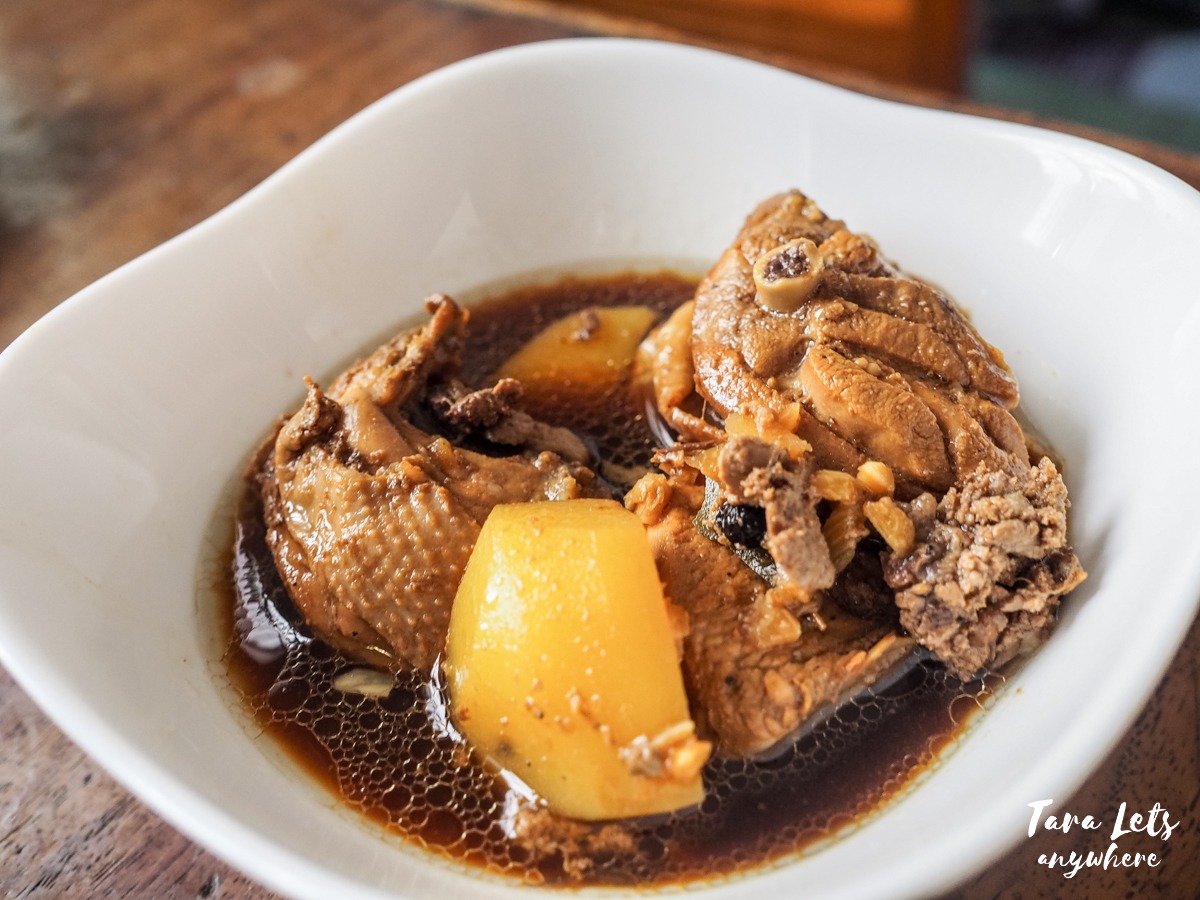
Here are my tips on getting the best out of your food experience:
- It’s a common saying to “Eat where the locals do”. This isn’t necessarily true in the Philippines. Remember that there are a lot of poor areas where eateries use cheap ingredients and shortcuts in cooking. Your best bet is to research on restaurants prior to your trip for reviews. That saying, there are places in the Philippines where the food is good even in ordinary eateries. I find this true particularly in Mindanao ( Zamboanga , Sulu, and Tawi-Tawi).
- Each province has its own specialty dishes, which you should definitely try. For example, in the Bicol Region it’s common to find spicy food such as laing.
- Whether you’re a fan of any of these or not, here’s one thing you need to try: buying seafood! This is one of the things I personally love about out-of-town trips. Seafood is incredibly cheap in provinces, not to mention fresh! For instance, Iloilo and Capiz are famous for the P1 scallops. If you’re staying in the city though, you can still feast on seafood by going to a seafood dampa.
- Don’t miss out on experiencing a boodle fight!
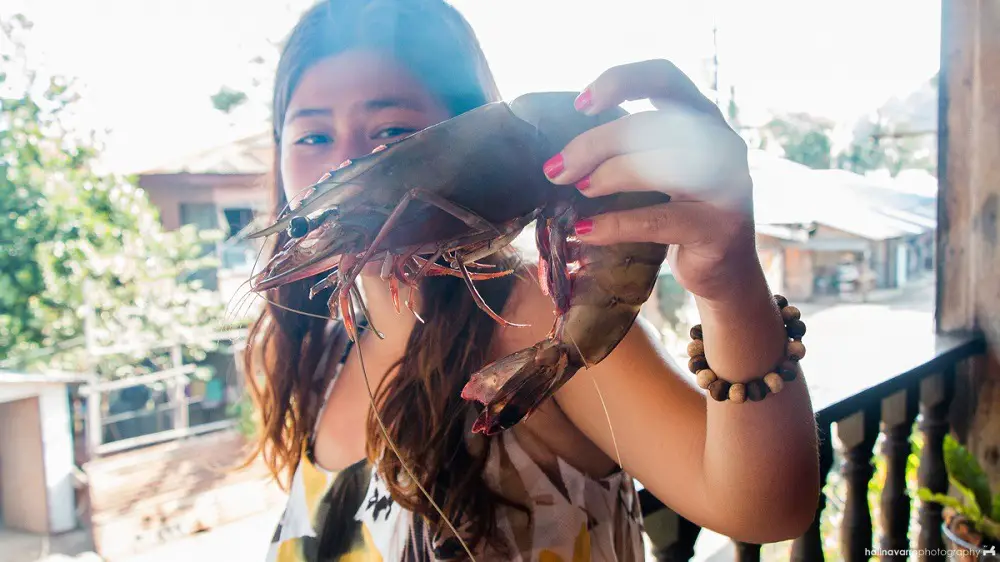
Generally, the Philippines is a great place to travel to! There’s a lot of great sights and activities. The locals are warm and friendly too. 🙂 Don’t miss the opportunity go here when you’re in Southeast Asia!
Has this guide been helpful to you? If you have comments or question about traveling to the Philippines for the first time, let us know in the comment section below.
Planning a trip to the Philippines? Check out these guides!
- First-Timers Guide to the Philippines
- Best Places to Visit in the Philippines
- Things You Need to Know Before Visiting the Philippines
- Is the Philippines Safe to Visit?
- Off-the-Beaten-Track Destinations in the Philippines
- Suggested 2 Weeks Itinerary in the Philippines
- Suggested 3 Weeks Itinerary in the Philippines
- Philippines Packing List
- Must-Try Food in the Philippines
- 21+ Top Adventures in the Philippines
If you like this Philippines travel guide article, feel free to share it in Pinterest! 🙂
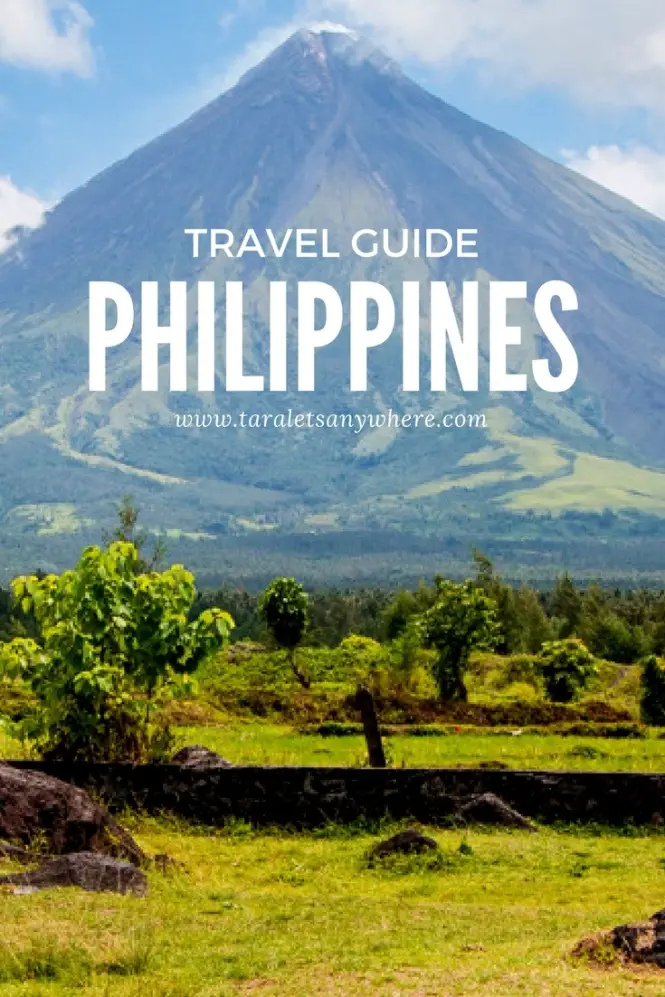
Get discounts on your travels!

Enjoy discounts with KLOOK using our promo code: TARALETSANYWHEREKLOOK

Katherine Cortes is a long-time backpacker and a freelance writer/editor. She likes beaches, snorkeling trips, and relaxing staycations (preferably with bath tubs!).

I love how you’ve listed the spots which aren’t super typical, it refreshing to hear about new places to potentially visit there.
Alle - We are Local Nomads
HI Katherine, I loved reading your guide! It is so difficult to choose where to visit in the philipines. Your post was very helpful narrowing down my wishlist 🙂
Hello guys!! Thank you for all the details in your blog, we found details here about Phillipines that we did not see anywhere else 😀 We came back like a month ago from our trip; we did Coron, El Nido and Boracay. We created a video with our drone with amazing shots of all the places we visited, it will also help you decide what you will like to see. https://www.youtube.com/watch?v=lWo3i0OZBg4&t=1s Hope you like it 😀
liz nichols
So glad I stumbled upon your site. I hear differing comments about safety in the Philippines regarding militant around the South. Your thoughts?
Hi Liz. As of this writing, Marawi City in Mindanao is under martial law. If you steer clear of that and surrounding areas you should be fine.
I’ve only visited almost 20 provinces in the Philippines and I would love to explore some more. I don’t know how to possibly do it especially that I have a little toddler but I would love to visit each province in the future. Maybe I would travel together with my daughter. I’m a little apprehensive of being my husband because of his nationality but let’s see. Thank you for sharing this blog post.
Hi Kessa, what about your husband’s nationality? Filipinos are very welcoming to foreign tourists.
Leave a Reply Cancel reply
Your email address will not be published. Required fields are marked *
Save my name, email, and website in this browser for the next time I comment.
Notify me of follow-up comments by email.
Notify me of new posts by email.
This site uses Akismet to reduce spam. Learn how your comment data is processed .
The Philippines for beginners: 7 first-timer fails to avoid on your trip
Aug 2, 2019 • 5 min read
The Philippines is a relatively easy travel destination by Southeast Asian standards. English is widely spoken, and the country has an endearing don't-worry-be-happy vibe, soothing for first-time visitors. Alas, volatile weather and natural disasters can mess up trips in a hurry, while a menu of 7000-plus islands creates itinerary headaches for even the most seasoned travel planners. Increase your chances of a smooth trip by avoiding the following first-timer fails.

Fail #1: buying into the fear factor
Someone back home said you'd be robbed blind, kidnapped or worse if you dared set foot in the Philippines. So you booked yourself into an all-inclusive resort and didn’t venture out for the whole trip (or worse, decided not to go at all).
Big mistake. The Philippines has an unjustified reputation for being a 'dangerous' place – a myth fuelled both by frequent Western embassy warnings and some skittish Filipino expatriates. But the Philippines is as safe as anywhere in Southeast Asia. And while there has been violence in a few remote provinces in the southern region of Mindanao, it rarely spills over into other parts of the country or affects tourists. Check and be aware of the latest travel advisories , of course, but once you get to the Philippines you’ll likely soon be glad you didn't let any worries hold you back from this experience. Relax and explore.

Fail #2: neglecting to study the weather
You showed up and spent 10 days battling epic monsoon rains – hardly the vacation in paradise you'd banked on.
A common misconception about the Philippines is that the entire country has the same weather. It isn’t that simple. The Philippines has four distinct climate zones. Study the regional forecasts carefully, research when to go and choose your destination accordingly. Manila has a particularly severe wet season (peaking July to September). However, many other areas of the country are dry during this time.
Typhoons are the big wildcard. They typically affect huge swathes of the country and can occur outside the typhoon 'season' (which is roughly June to December). Keep an eye on sites like Typhoon2000 to make sure you're not heading into the teeth of one, and, if you are, reroute.
Fail #3: overplanning
The first rule of travel in the Philippines? Assume things will go awry. Boat and bus schedules are notoriously unreliable and can change at a moment's notice. Weather can throw a damper on the best-laid plans, or maybe the beach you hastily chose just wasn't for you ( don't worry, there are thousands of others ).
Stay flexible so you can easily go somewhere else if your trip goes pear-shaped. Outside of the two 'super-peak' periods (New Year's and Easter), it's rarely difficult to find a room, and indeed you'll generally get better hotel deals at the last minute. Boat and bus tickets can almost always be bought at the station at the time of departure, and a plethora of domestic budget airlines means relatively cheap plane tickets even close to your day of travel.
Fail #4: dissing a person’s karaoke skills
Karaoke is the national pastime in the Philippines and at some point you'll find yourself mic-in-hand making a lame attempt to croon out 'Yesterday' or 'My Heart Will Go on'. Don't worry about sounding like a chicken being strangled. Filipinos aren't judgemental when it comes to singing and will respect your attempt at cultural immersion.
Of course, it goes both ways. Seasoned karaoke practitioners should not dismiss those with inferior skills. Karaoke is serious fun in the Philippines. Have a laugh with it, but don't disrespect it.

Fail #5: losing your cool over a few extra pesos
As in most Asian countries, raising your voice and showing outward frustration in the Philippines causes both parties to 'lose face' and could be taken the wrong way. The Philippines is among the cheapest places in the world to travel , especially when compared with Europe and the US. Dwelling on whether you’ve paid too much for your transport or accommodation after haggling over what might amount to a couple of dollars is hardly worth the anxiety. So when that taxi driver taking you through Manila’s brutal rush hour asks for an extra US$1 to US$2 – a not uncommon peak-hour surcharge elsewhere in the world – it’s best to simply pay up and keep your cool.
Fail #6: arriving on time for a social engagement
A friendly local invited you into their home for dinner, but when you showed up punctually they suddenly seemed less friendly.
There is a reason for this: it's considered impolite to arrive on time in the Philippines. If you do, don't be surprised if you are the only one there and your host seems far from ready. About 15 minutes late is the socially acceptable arrival time.

Fail #7: assuming private accommodation is a better deal than hotels
Trying to save money, you paid US$50 for an AirBnB apartment in Quezon City (a far-flung suburb of Manila).
Bad call. Don't assume big-city Western prices when visiting the Philippines' two major urban hubs, Manila and Cebu . Accommodation in Cebu is exceptional value – think P1500 to P2500 (US$30 to $50) for excellent midrange accommodation. Manila prices are just a notch higher at about P2800 to P3200 for a decent double. Also keep in mind that Manila in particular is a huge, intimidating place for first-time visitors. You'll probably be happy to have a concierge on hand rather than be left to your own devices in a private apartment.
This article was first published in August 2015, last updated August 2019.
Get more travel inspiration, tips and exclusive offers sent straight to your inbox with our weekly newsletter .
Explore related stories

Wildlife & Nature
Apr 13, 2018 • 8 min read
When you live in a country as vast and varied as the US, it’s hard to decide where to spend that oh-so-precious family vacation. And the answer also…

Sep 30, 2024 • 6 min read

Aug 8, 2024 • 7 min read

May 15, 2024 • 3 min read

Mar 4, 2024 • 8 min read

Feb 14, 2024 • 8 min read

Feb 12, 2024 • 10 min read

Nov 24, 2023 • 5 min read
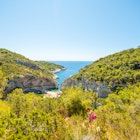
Nov 25, 2022 • 10 min read

Apr 1, 2022 • 5 min read
- Work With Us

The Best 3 Week Philippines Itinerary for Island Hopping

If you’re looking for a route that encompasses the very best of The Philippine’s beaches, scuba diving, wildlife and landscapes (both at sea and inland), then my tried-and-tested 3 week Philippines itinerary could be perfect for you.
After spending 3 weeks in The Philippines, I can safely say it is my new favourite country in the whole entire world. The people are warm and friendly, the scenery is spectacular, the beaches are the definition of paradise and the scuba diving is the best I have ever experienced – I could go on! There are so many positive aspects of this beautiful country, but tourism in the Philippines is still developing – meaning planning a trip here can feel like a bit of a logistical nightmare. I’m here to help! Read on for the most incredible 3 week Philippines itinerary for island hopping.
Last updated July 2024

When preparing for my trip to The Philippines I found that accurate and trustworthy online information was few and far between, so I collected most of my information from my trusty Lonely Planet Philippines book. In this post I’m going to share my amazing 3-week Philippines itinerary for island hopping, which covers 5 of the country’s most spectacular islands (Did you know Borocay and Palawan have just been #1 and #2 in US Conde Nast Traveler’s Best Islands in the World?).
I’m also going to include all of the vital travel information you need to know to make your trip go without a glitch. But before I go on, here are a few key things to know about The Philippines before you travel there.

Very Useful Things to know before travelling to The Philippines
- The Philippines spreads through a vast oceanic region made up of 7,107 islands, 2,000 of which are inhabited. These islands are brilliantly connected by planes and boats, but if you want to island hop, be prepared to loose whole days in transit
- The first language is Tagalog (Filipino) but English is widely spoken by locals
- Free 30-day visas are granted on arrival for most nationalities. They can be extended for a fee
- There are three seasons in The Philippines; rainy season (June to September) shoulder season (May to November) and dry season (December to April). If you want guaranteed sunshine 24/7, don’t visit in rainy or shoulder season.
- Whilst geographically located in South East Asia, The Philippines is a world away from the likes of Thailand and Vietnam. Tourism is still a fairly new concept but locals are embracing it with open arms.
- Wi-Fi and electricity are both commodities in The Philippines, with many of the Islands running with no electricity in the daylight hours.
- ATMs are extremely temperamental in The Philippines so it’s best to carry cash on you at all times
- Being made up of thousands of Islands means that there is no obvious ‘beaten-path’ and quite honestly, the possibilities are endless.

3 Week Philippines Itinerary Overview
- Island 1: Palawan – El Nido
- Island 2: Cebu – Moalboal, Oslob (Tan-awan)
Island 3: Siquijor
- Island 4: Bohol – Alona Beach, The Chocolate Hills
- Island 5: Borocay
Island 1: Palawan
Many domestic flights around The Philippines all run from Manila, so there’s a chance you may need to take 2 flights to reach your starting point. We flew into Manila from Ho Chi Minh City, then immediately took a second flight to Puerto Princesca airport in Palawan. Both flights were with Cebu Pacific, which is a budget domestic carrier in the Philippines and in my experience, this airline is great value for money. In total we took 4 flights with them, none of which were delayed. We decided to bypass Manila all together as our Philippines itinerary is all about beach and sea air, not city and smog.
Travelista Tip: There are two airports in Palawan; Puerto Princesa and El Nido airport. Flights into Puerto Princesa are always the cheapest option, but it means you have to take a 5-6 hour van journey to reach El Nido when you get there. We hadn’t done our research before we travelled which meant we had to take the dreaded van journey there and back.
If you can stretch your budget, I would 100% recommend looking into flights direct to El Nido because it will save you so much time, and a long uncomfortable journey. If you do need to fly into Puerto Princesa, you can book a transfer in advance from the airport to El Nido .
Find out the best ways for getting to and from Palawan.
Best For: Finding an Instagram-worthy paradise Where we stayed; Buena’s Haven Hostel, Corong Corong How many nights: 5
Browse all hotels and hostels in El Nido
Our destination in Palawan was El Nido, where we spent 5 incredible days (if you have more time on this island, check out Port Barton and the Underground River too). Whilst El Nido town itself is nothing to write home about, it’s the magnificent Archipelago of limestone islands that surround it, which attract travellers from around the world. El Nido is first on our itinerary as it is The Philippines biggest WOW-factor, and is guaranteed to set your trip off on the right foot.
The main thing to do in El Nido is to explore the Archipelago on a selection of boat tours. All travel agents in the town sell 4 tour packages which are uncreatively named Tour A, Tour B, Tour C, Tour D. Wherever you book the tours, the package and the price is always exactly the same (no need to shop around). The tours can book up, so if you want to ensure your place before arrival, I recommend booking in advance via GetYourGuide .
“Having done all the tours, I would definitely recommend prioritising Tour A and Tour C, both of which were incredible! I recommend booking your trips in advance to avoid any last-minute hassle or unnecessary price haggling,” says Erika Pacini of Outdoorplay .
I’d also recommend spending the day at Las Cabanas beach , which is one of the quietest and most unspoilt white-sand beaches I’ve ever seen. You can also do an incredible superman Zip Line here over turquoise water to a nearby island and back. End the day watching the sunset with a delicious cocktail at Las Cabanas Beach Resort (located at a peninsular at the far end of the beach).
Travelista Tip; Many of the swim stops on the tours have sharp coral and rocky sea beds with anemones that can sting. Either buy your own surf booties for the trip, or you can hire them from your tour operator in El Nido for a small fee.

Island 2: Cebu
After El Nido, we flew from Puerto Princesa to Cebu City. Cebu City itself is known as a ‘mini-Manila’, with its high rise buildings, traffic jams and numerous Philippines casinos , so again we moved straight on out. From the airport we hopped in a taxi to the South Bus Terminal (located across town, costing about 200 pesos). From the South Bus Terminal we caught a Ceres Liner bus to Moalboal, which took 3-4 hours. Other than private cars, the Ceres Liner buses are by far the cheapest and most convenient way to get around Cebu. Half of them are new, air-conditioned coaches and half of them are hot old-school buses with snug seats and open windows. The air-conditioned coaches are 100 times more comfortable, but you never know which one will turn up first!
Best for: Scuba Diving Where we stayed: T Breeze Coastal Resort, Moalboal How many nights: 3
Browse all hotels and hostels in Moalboal.
Moalboal is one of the best places to scuba dive in the whole of the Philippines, and is famous for its swirling vortexes of sardines and abundance of sea turtles . Whilst most travellers flock to hostels in Pangsama Beach, we based ourselves a little out at T Breeze Coastal Resort (perfect if you want an affordable and secluded hideaway). The best thing about T Breeze Resort was that it was located right next to a fantastic dive resort called Asian Belgian Resort , where we did all our diving. Both resorts are located right by a spectacular coral reef, and a little further down the coast is an open water turtle sanctuary. I’ve dived in Thailand, The Caribbean and The Maldives and the diving experience in Moalboal trumped all of them hands down.

Oslob (Tan-awan)
Best for: Whale shark watching Where we stayed; Sharky Hostel, Tan-awan How many nights: 1
Browse all hotels and hostels in Tan-awan .
Next in our Philippines itinerary we caught the Ceres Liner for a further 2 hours down the coastal road to Tan-awan in Oslob for the once-in-a-life-time experience of whale shark watching .
During the time of my travels, this whale shark watching phenomena was in its peak, but since updating this article in 2024, the experience has been deemed unethical to many. This is because the whale sharks only appear due to daily feedings, which is changing their migration habits. You can absolutely still swim with whales sharks in Oslob – I will admit I did – but now I am older and a little more worldly wise, I would be a little more mindful of my impact. Since the pandemic, swimming with the whale sharks costs 500 pesos for travellers and locals (although we paid 1000 pesos – so the experience has actually become cheaper).
The non-descript roadside town of Tan-awan has financially boomed, purely because of the whale shark activity. The experience includes snorkelling equipment and lasts 30 minutes. A longboat takes you about 50 meters offshore at 6am, where a huge school of whale sharks are being fed by fisherman.
I will admit that the experience of being in the water with these huge, gentle creatures is exhilarating and captivating in equal measure. Unfortunately you do have to share the experience with boat loads of other travellers, making your photos look like a slightly less majestic moment. Other than the whale shark watching there really is nothing else to do in Tan-awan so I would recommend staying for 1 night and then moving straight on.

Best for; A mythical island with witchcraft and magic – off the beaten path Where we stayed; Coral Cay Resort, San Juan How many nights: 3
Browse all hotels and hostels in Siquijor.
Siquijor is the island that feels most ‘off-the-beaten-path’ in this itinerary. To get here from Tan-awan is quite a complicated journey but it can be done in about half a day if you research your ferry times in advance. Firstly, you need to catch another Ceres Liner bus from Tan-awan to Liloan port (30 minutes), where you take a short ferry over to Sibulan port on Negros Island (40 minutes). After arriving at Sibulan port, take a trike across town to Dumagete Port (20 minutes). From here you can catch a ferry to Siquijor (2-4 hours depending on the type of ferry you take).
The mystical island of Siquijor is somewhat of a talking point across The Philippines, as it’s known of the mystical island of witchcraft and magic . The majority of Filipinos on do not dare to ever step foot on this island as they fear paranormal consequences. It’s true that white magic, black magic and ‘spiritial mountain healers’ are all very much still a part of this intriguing island. But if you’re not interested in that sort of thing, a few cocktails on the beach at sunset can also feel equally as healing. Whilst we didn’t go in search of the mountain healers, there was definitely a different energy in Siquijor that made you feel like anything could happen.
Other than a few resorts in Siquijor Town and San Juan, tourism in Siquijor is still in its infancy. The best thing to do in Siquijor is hire a moped and do some independent exploring. Make sure to wear a helmet at all times – the Philippines has different helmet laws than most US states .
You can drive around the whole island in 1 day simply by following the coastal ringroad (the only actual tarmac road on the whole island!). On your tour be sure to go in search of the hidden Lugnason Falls , the larger Kawasan Falls and the 400-year-old enchanted Banyan Tree.

Island 4: Bohol
Up to this point, the itinerary has very much been focused on beaches, but our 4 th island takes you inland to discover the delights of Bohol. From Siquijor we caught an Ocean Jet ferry over to Tagbilaran Port in Bohol which took 3-4 hours. Once in Tagbilaran, we shared a van transfer with another couple over to our base of Alona Beach.
Alona Beach, Panglao Island
Best for: Boat trips, nature and adventure Where we stayed; Chillout Guest House and Villa Kasadya , Panglao Island How many nights: 3
Browse all hotels and hostels in Alona Beach .
Alona Beach is a small, tourist friendly town with plenty of options for accommodation. It’s also a great spot to base yourself to explore the famous Chocolate Hills of Bohol. Depending on the season, the hills are either brown or green and get thei

The Chocolate Hills
Most people visit the Chocolate Hills on day trips from Alona Beach, although there is some accommodation closer to the hills e.g. Nuts Huts. There are a few options for the day trips depending on how much you want to spend (options being private driver, go as a group and split the cost of a private driver or book through an agent and go with a coach tour). Tours can vary slightly but most will factor in adventure activities such as zip lining and quad biking through the Chocolate Hills (we did both).
Book the best tours in the Chocolate Hills .
Another highlight of the Chocolate Hills is going to visit the bug-eyed Tarsiers, which are endemic to The Philippines and now under threat as a species. Tarsiers are nocturnal, solitary animals and if they get distressed they actually commit suicide (I know, can you believe it?). For this reason it’s important that the animals aren’t disturbed by tourists. The Philippine Tarsier Sanctuary in Corella does a great job of controlling the animal’s natural habitat whilst allowing tourists to take a unique glimpse at the animals. This place is by far the most eco-friendly way of viewing these incredible creatures, so make sure it’s on your day trip itinerary.

Island 5: Boracay
Best for: Partying and picture perfect beaches Where we stayed; Shangri La Borocay Resort and Spa How many nights: 3
Browse all hotels and hostels in Boracay.
From Tagbillaran we caught a final ferry back to Cebu City (3 hours) and caught a flight to Boracay. Boracay is a tiny 7km island with no airport, so the only option is to fly into either Kalibo Airport or Caticlan Airport and take a 15 minute ferry from Caticlan Port. Similarly to Palawan, flights in to Kalibo are cheaper because the airport is located further away. The drive from Kalibo Airport to Caticlan port is about 2 hours.
In terms of recommendations for Boracay, I can’t share all that much from personal experience. This is because we spent our time in a secluded part of the island, otherwise known as Shangri La Borocay Resort and Spa! We ended our 6-week trip in total luxury and enjoyed the peaceful amenities of the resort. Whether you want to end your trip chilling out in paradise or partying the night away, Boracay is the perfect place to do both.
Need help or advice on your Philippines visa? Check out eTravel Philippines .
What did you think of our 3 week Philippines itinerary for island hopping? If you enjoyed this post or have any more questions about The Philippines, please leave us a comment below.

Jessica Ruth Gibson
Jessica Ruth Gibson is the Founder and Editor of Travelista and an award-winning travel content creator of 10 years. She lives in York, UK with her son and has travelled to over 50 countries; her favourites being Italy, Canada and Vietnam.
36 Comments
Hi! i was glad that you considered my country to visit in, I have to suggest to visit Hundred Island in Alaminos City Pangasinan, someday 🙂
Jess Gibson
Thanks for the tip!
hey! I was wondering what month you went in? I’m about to finish university and really want to travel in the summer period but since its rainy season i’m put off going to Philippines.
We went in September and October. Even in rainy season, there are downpours, but either side of the downpours you can still have great weather so don’t let it totally put you off.
Giovanni Carlo
You forget to mention that you can buy love potion and ride on a broom stick in Sijuijor he he
Yes indeed! It’s such a magical place.
Scott Langley
Not sure your still get this message but your itinerary is perfect for what my wife and I and our 3 little boys are looking to do. I’ll happily pay you to do all the arranging and booking for me if this interests you? If so please pop me an email. [email protected]
Regards Scott x
Adventurous Couple
Hi Jess, I’m currently booking the Cebu leg of my trip and I need advice on something. Currently, I’m planning on spending 3 nights in Moalboal followed by 3 nights in Siquijor followed by 3 nights in Alona Beach followed by 1 night in Oslob. We will then go from Oslob to Cebu Airport to fly out to Borocay. Do you foresee that this would be logistically possible considering that we would want to do ALL of the attractions in these places? Thanks in advance!
i’m planning a very similar itinerary for my partner’s birthday (as a surprise) in March. I just wondered how far in advance you booked your internal flights? i want to leave this until pretty last minute in case he wants to change anything after opening the tickets and itinerary. It would be ideal to book these just before we go in case he wants to change anything but i of course don’t want to get caught out if they sell out.
Excellent read – please can you confirm how much this itinerary cost? Excluding the flights to the Philippines -?
Hi Jess, loved your blog! Looking at going in march next year! Just wondering did you guys take a malaria prophylaxis? X
Hi Ciara. We did take the malaria tablets but I think we just got the cheaper version and they were fine 🙂
Ok perfect, Thanks so much for getting back to me! can’t wait to go!! x
mbbs in philippines
indeed an essential guide to philippines travellers. thanks for sharing it.
Thanks for your comment!
Hello, myself and my wife fly to the Philippines in May this year. My wife is Filipina though I have never been. Although I have had my Enciphilitis, Typhoid and Hepatitis shots. How safe is it to travel. I’ve not had rabies shots but nurse said wasn’t imperative but keep away from animals in general. However, I’m SO excited to travel there I’m just anxious.
Going in April … this just exciting
Wow have the best time Jen! It’s one of my favourite countries x
This has been really helpful! I am going in September, and have read lonely plant/rough guide and even though they are great there is just too much to choose from and I just cannot make a decision where to go. I think I will follow this itinerary exactly as it involved everything we want to do 🙂 Do you know how much you spent for the 3 weeks including everything? Just trying to budget now to make sure I have enough time to save. Also, the other thing I would love to do is a bit if trekking, is there anywhere you came across where you could do a 1-2 days trek into the jungle/up a volcano?
Hi Louise. Thanks for your comment. Hope you have an amazing time in September! I think we spent about £700 over 3 weeks in fairly budget accommodation (but not lowest of the low). The rooms were still clean and functioning. I recommend everywhere we stayed and I have linked to them in my 3 week itinerary guide. Have an amazing time x
Thanks that’s really helpful. And I assume all your activities were on top of that £700? We were hoping to save about £2500 between 2 of us for all accomodation and activities including at least 1 dive each and definitely want to do the whale shark experience. Do you think that would be enough? X
Also, Bohol is a great place to go trekking and get into the mountains!
Georgia Brown
Hi! Myself and my friend are planning to visit for three weeks in April. Your itinerary looks fantastic and I would actually want to follow this! Do you have any recommendations so that we do not get lost along the way? Also I was wondering if you pre booked all of your flights and accommodation or if you booked whilst you were there? Finally, I wanted to ask about your budget whilst out there (a rough cost) and how much cash you would carry on you at a time?
Sorry for the questions, I am nervous because I’ve not travelled there before!
Hi Georgia! Thanks for your comment. It really is a fantastic route and one of the best ones you can do without having to pay for lots of internal flights which can be expensive. I planned the route to avoid flying, and it means you get to see some of the lesser known islands such as Siquijor (such a special place!). I would also really recommend all of the hostels and hotels we stayed in. We booked all the flights in advance and I would recommend doing this because some of them get booked up and if you only have a limited time there you want to stick to your itinerary. We booked all activities and tours when we arrived, and we booked accommodation a few days before each hotel. Withdrawing cash can be a nightmare in the Philippines as the internet connections can be very bad. I would recommend withdrawing a decent amount of cash on arrival (maybe for 1/2 your time there so you only need to do 1 more withdrawal). I can’t remember exactly how much we budgeted but I think it was around £800. Don’t be nervous! It’s an amazing place and you’ll have a fantastic time. Happy travels. Jess x
Thank you for replying! Is there a website to pre book the flights and do you pre book the ferries? Also… when did you go to Siquijor? I would really like to do the cliff jumping there. Finally do you mean that you booked accom a few days before the trip including hotels? Or a few days before arrival to each place? And did you not struggle for wifi there?
Thanks again!!
Sorry, the last thing is that I can’t ride a moped. So Is there any other suggestions on arrival to Siquijor (also ignore my previous question about when did you go). Finally, do you recommend buying the book that you had?
Your post was extremely interesting. I read it multiple times. I’m planning a three week trip there myself for next summer. Initially I had planned to do 1 week borocay. 1 week el nido and 1 week in cebu. Your two additional locations sound extremely interesting. My only constraint is I’ll be traveling with 4 kids so with this in mind do u think we should stick to 3 or do the others? Or substitute one for another ?
Hi there, I;m planning 3 weeks in the Philippines in March. I was just wondering what budget you wold recommend? Thanks
Angie Silver (@SilverSpoonLDN)
The Philippines is definitely one of the most beautiful places I’ve ever been! We just stayed on one island but I would have loved time to see more of it.
It really is just so beautiful Angie! Which island did you go to? I’m sure you’ll get chance to go back and see more. It’s amazing how undeveloped the tourism still is there. Give it 10 years and it will feel like a different place x
Awesome rundown of your trip – brought back many sunny memories of ours, although now you’ve given me a few more islands to visit! I loved our little jaunt to the tarsier sanctuary though got really worried about disturbing them after finding out about their suicidal tendencies!
Hey Connie! Thanks for your comment. Glad I’ve helped you add a few more islands to your list! Yes it’s a debatable subject with the Tarsiers, they’ve been exploited for far too long but the sanctuary I recommend really does ensure they’re in the very best habitat and you’re taken around by guides in very small groups. It’s well controlled so definitely the best place to do it xxx
What an amazing trip! Beautiful photos, hope to visit one day! x
Thanks Margita! It really was an experience I’ll never forget. Hope to go back one day x
The Lady Voyager
Gosh, I’m a Filipino and I haven’t been in Bohol and Palawan. Thanks for sharing your tips and places where you stayed. So happy you loved Philippines! Pls come back to explore more islands. haha!
Hi! Thanks for your comment 🙂 you’re so lucky to have Bohol and Palawan on your doorstep (in terms of the world!). I hope you get to visit these beautiful parts of your country some day. I’d love to come Back and see more! X
Leave a comment Cancel reply
Related posts.

A Romantic Stay at Hotel Brunelleschi, Florence | Hotel Review

Hiking Through the Nevisian Rainforest in St Nevis, West Indies

The best things to do with your friends in Dubai

Travelista is an online publication and community for the adventurous modern woman covering travel, style, family, home, career and wellbeing.
Philippines Travel Guide
The Philippines is a great place for island hopping and scuba diving, with over 7,000 islands full of white sand beaches, rainbow corals, and turquoise waterfalls.
One of the best known islands is Palawan , which has been ranked as the most beautiful island in the world. The island of Bohol is also popular for its exotic scenery and scuba diving.
Read through this complete Philippines travel guide for more info on what to expect!
Quick Facts
Filipino & English
Christianity
Philippine Peso (PHP)
Visa free access for most nationalities
Tropical; hot & humid year round. Dry season is Nov - May
Power Plugs
Type A / B / C
The main airports in the Philippines are Manila (MNL) and Cebu (CEB), which have direct international flights from many countries in Asia and beyond. There are also domestic airports in popular Filipino tourist spots like Bohol, Coron, El Nido, and Siargao.
You can shop for flights to the Philippines on Skyscanner.
There are a few areas to steer clear of in the Philippines, but according to the UN it has a violent crime rate that is significantly lower than the global average. Some parts of Mindanao can be dangerous due to terrorism and kidnappings.
With that said, I’ve traveled in many parts of the Philippines and haven't witnessed any crime. Popular tourist areas like El Nido and Coron are safe, and attitudes toward foreigners are welcoming.
It's a good idea to wear mosquito spray in rural areas, especially during the rainy season, because some areas have a risk of dengue or malaria.
The climate of the Philippines is tropical, so the weather is warm and humid all year. There's a rainy season that runs from June to October (with the typhoon season generally being September and October), and the sunny season runs from November to May.
It's still possible to visit Philippines in the rainy season, but give yourself some extra days as a buffer in case of bad weather.
The Philippines is a very budget friendly travel destination, with hostels available from 300 Philippine pesos ($5 USD) and private hotels from 600 pesos . Meals are also cheap, costing about 70 to 300 pesos depending on location.
Transportation in the Philippines is generally by motorbike or car, and these can be rented, but hiring a driver is cheap and often preferable. Transportation apps like Grab are great for getting around.
Palawan By Drone
The best Philippines tours & activities
My latest blog posts about the Philippines
Coron vs El Nido: Which Is Better? All Differences Explained
Palawan island has become famous for its tropical scenery and island hopping, but in a head-to-head comparison of Coron vs El Nido which is better? Both of …
Bohol Island Travel Guide For The Philippines
The island of Bohol Philippines is a unique one, with exotic landscapes like the ‘Chocolate Hills,’ and wild tarsiers, the world’s smallest primate. Bohol may not be …
Coron Palawan Travel Guide For The Philippines
Coron Palawan is one of the most amazing islands in the Philippines, with huge limestone peaks, multicolored lagoons, and great snorkeling or scuba diving. Like other islands …
How To Get To El Nido Palawan In The Philippines
El Nido, Palawan is a pristine, exotic island destination in the Philippines that can be reached by air, van, bus, or ferry. It’s not hard to get …
El Nido Palawan Island Travel Guide For The Philippines
For myself and many other travelers, El Nido Palawan island was the place that put the Philippines on the world map (and our bucket lists). El Nido’s …
El Nido Tour A in Palawan: Big Lagoon & Shimizu Island
El Nido’s famous for having some of the finest island scenery in the Philippines, and the best way to see it is on a shared boat tour. …
El Nido To Coron Ferry: How To Use The Palawan Fast Boat
Coron, Palawan is a scenic island destination located just north of the more famous El Nido, and a lot of tourists nowadays like to visit both places …
Coron Ultimate Island Tour In Palawan: What To Expect
The remote Philippine island of Coron may not be as popular as its cousin El Nido, but the scenery here is just as amazing, and it’s great …
El Nido Tour C in Palawan: Hidden Beach & Matinloc Shrine
El nido tour b in palawan: pinagbuyutan island & entalula beach, el nido tour d in palawan: cadlao island & small lagoon, get in touch.
Feel free to contact me if you have travel questions, comments, or suggestions! I'll try to get back to you!

Philippines Travel Guide
Your ultimate philippines travel guide, with tips, and things to see and things to do in philippines. great for first-time and returning travelers..
The Philippines is a former Spanish colony, just like a big part of South America. This gives the Philippines a unique feeling nowhere to be found elsewhere in Asia!
If you are “temple” tired, the Philippines is the perfect place to catch a fresh breath of air as it has some of the best beaches; the water is so blue and makes a beautiful contrast with the white beaches. If you’re looking for postcard perfect places, just visit the Philippines.
This Philippines travel guide will help you plan your next vacation.
Popular Guides
- Carabao Island
- Visit the Philippines
Our Highlight

Table of contents
Table of Contents
Fast Facts about the philippines
- Philippines power voltage is 220 V 60 Hz; Power sockets A, B & C
- The Philippine currency is the Philippine Peso (PHP) and is around 44 PHP for 1 USD
- Travellers are requested to pay an airport tax when departing from Manila’s Ninoy Aquino International Airport, Cebu City or Davao.
- If you are going to Mindanao (southern Philippines) where some areas are predominantly Muslims, dress conservatively.
- If drivers refuse to switch on the meter, get out and catch another taxi as this is a common ploy taxi drivers in Manila indulge in with foreigners.
- Water is NOT potable in Philippines. Drink only bottled water. If you order a mixed drink at a bar, ask that ice not be added, since it may have been made from tap water.
Things to See and Do in The Philippines
- Scuba diving – The Philippines has numerous places to scuba dive. You can enjoy scuba diving through World War II shipwrecks in Coron Palawan.
- Skywalk – The Skywalk allows you to walk on translucent glass (strapped to a safety harness) while getting a birds-eye view of the city.
- Edge Coaster – The Edge Coaster requires you to walk through the edges of the hotel while stunning you with a 360-degree view of Cebu.
- Banaue rice terraces – Banaue rice terraces are often considered the “eighth wonders of the world.” The rice terraces are almost 2000 years old and stunningly carved into the Ifugao mountain range.
- Rizal Park – This historical park in Manila is fun to walk around while you’re in the city.
- Malapascua Island – This is one of the most famous islands found in the Philippines and has amazing beaches.
- Chocolate Hills – This area has strange green mounds throughout the landscape that are unique to see.
Philippines Travel Guides
- All You Need to Know to Visit Boracay
- Carabao Island Philippines – Why it is Not Just a Boracay Island Side Trip
- The Best Things to do in Cebu City – Philippines
Accommodation
Budget – Budget hotels in the Philippines may cost you between $13-38 USD/night. Rooms within this category would come equipped with a fan or air-conditioner and a single bed.
Mid Range – In the Philippines, a mid-range hotel may cost you around $40 USD. Rooms are equipped with a private bathroom with hot water.
High End – You can experience the luxury of high-end hotels in the Philippines starting around $150 USD. Most of the cottages in these high-end hotels are kind of chic apartments, coming along with a separate living area. Apart from the accommodation, you might be getting a buffet breakfast and fitness center.
Check out our favorite booking platforms Booking.com , Tripadvisor and VRBO for the best deals on accommodation in the Philippines.
- Lechon Manok – Lechon Manok is the street-styled roasted chicken that can easily be found around the streets of the Philippines. You can have it for dinner or as a snack with the drinks.
- Puto Bumbong – Puto Bumbong is sticky rice with purple color and generally served with butter or margarine. You can also add crushed coconut mixed with sugar as a topping.
- Bibingka – Bibingka is an egg-based dessert which is served on a banana leaf. It is generally eaten along with another famous Filipino cuisine, Puto Bumbong.
- Sisig – Sisig is a pork-based dish cooked along with the chicken liver. Once cooked, it can be seasoned with red peppers and golden lime (calamansi).
- Halo Halo – Halo Halo is quite popular as the summer dessert in the Philippines. It is made up of skimmed milk and crushed ice while adding some fruits, corn, coconut, or sweet beans.
The Best Ways to Get Around The Philippines
Getting to philippines:.
Flights: Philippines Airlines flies direct from many major cities, including Los Angeles, New York, and London.
You can check for the best flights to the Philippines on Skyscanner .
Transportation:
Buses : Public buses are common in the major cities can start around $1.
Taxis / Uber : A taxi ride in the Philippines may cost you somewhere around $1, but you can also opt for other ride options like Uber and Lyft, which are relatively cheaper.
Car Rental: You can rent a car with a starting price of $30 per day.
You can also compare prices here .
When to go To Philippines
The best time for you to visit the Philippines is between November and April. The weather stays dry during this period, and you can quickly get access to the beautiful islands and other major attractions.
The temperature remains on the higher side during March and April. For this reason, many tourists choose to visit between December and February.
Where to Stay in Philippines
- L’ Fisher Hotel – Located in downtown Bacolod City, this high-end hotel is nearby to tourist places like Capitol Park and Lagoon, The Negros Museum, and Bacolod Public Plaza. You’ll also enjoy amenities such as a spa and fitness center.
- Cummings Highland s – This beautiful hotel is located on Tablas Island and has a view of the water. You’ll have access to beachside dining and outdoor activities.
- Efrena Beach – This beachside hotel is the perfect place to spend a few days relaxing in Palawan. They offer a garden, restaurant, bar, free Wi-Fi, and an airport shuttle.
- Check out our post: Where to Stay in Cebu Philippines – My Top 10 Hotel Picks
Check out our favorite booking platforms Booking.com , Tripadvisor and VRBO for the best deals on accommodation.
What to Pack for Philippines
The Philippines has a tropical climate with three noticeable seasons namely the wet and rainy season (June-October), the cool but dry season (November-February) and the hot and dry season (March-May).
June to August is the typhoon season. Pack lightweight cotton clothing that will allow you to add a layer if you get too cool and a lightweight rain jacket for the rainy season.
- Sarongs – From protecting yourself from the hot island sun, to being used as a towel or keeping warm on a cool night, sarongs are a must-have on your caribbean vacation. On any trips to churches and temples, use it to cover up.
- The protection basics – Travellers should stock up on the essentials: sun block, mosquito/insect repellant containing DEET or a pyrethroid insecticide. A hat, sunscreen and sunglasses will protect you from the strong Philippine sun
- Personal safety products – Before leaving for your trip, make sure to pack some personal safety products , like money belts and locks, so that you can keep your valuables safe on your trip. Also, avoid bringing anything flashy, like rings or necklaces – less is always more.
- A tropical wardrobe. This should include—for both men and women—shorts, T-shirts, breathable rain gear, a warm jacket or fleece, sturdy footwear, and a wrap. Casual clothes with natural fibers – linen, silk, cotton – work well in the heat and humidity.
See our packing tips: packing tips
Philippines Travel Guide: Best Booking Resources
Whenever we travel to we make sure to start with these companies. We have tried a lot of different ones over the years and all of these have consistently proven to be the best when it comes to offering great prices.
We have used every one of these personally and continue to do so.
- Booking.com : This is our go site to when comparing prices for accommodation. It usually has the cheapest prices, especially in Europe and we love their interface. Not to mention you get free cancellation and you are guaranteed the best price.
- Trip Advisor : What we like about Trip Advisor is that we can look at all the reviews and then book our accommodation. TripAdvisor is where we go when we want to compare prices with multiple accommodation providers.
- VRBO : is the main search engine we use when we are looking for a home or apartment rental. It can sometimes be cheaper than hotels and it is the best way to stay in areas that offer a more local feel.
- Hostelworld : With one of the largest databases of hostels in the world, Hostelworld is the go-to site when you are looking for budget accommodation.
- Skyscanner : This is the first place we check for flights. It consistently comes back with the cheapest and best options. It allows us to compare a lot of airlines to get the best price.
- Rome 2 Rio : If you want to see how to get somewhere by plane, train, bus, ferry or car Rome2Rio lays it all out for you as well as related costs.I love how they show it all to you on a Google Map and it works offline.
- Get Your Guide: For all your day trip and city guide needs, we use Get Your Guide. It has the world’s largest collection of things to do with more than 30,000 activities in 7500 destinations.
- World Nomads Insurance: When traveling to Italy you should always have travel insurance. We have found the best bang for your buck is by far World Nomads.
Philippines Travel Guide: Related Articles
To browse all our articles and guides about Philippines click here.
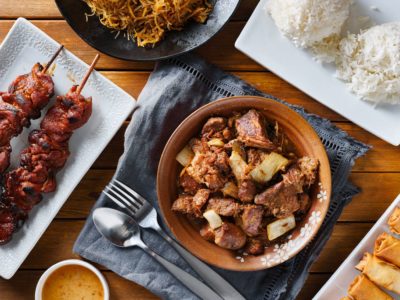
Filipino Food: 20 Best Dishes to Try in the Philippines
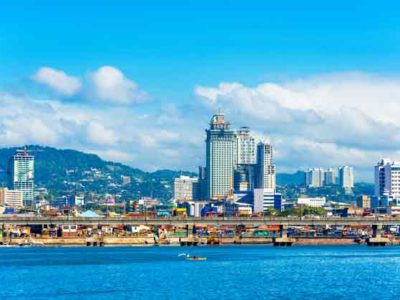
The Best Things to do in Cebu City – Philippines
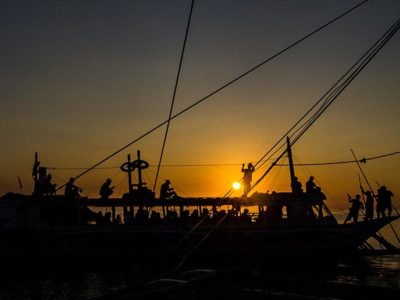
Carabao Island Philippines – Why it is Not Just a Boracay Island Side Trip

Ultimate PHILIPPINES Travel Guide
The Philippines is a country located in Southeast Asia . It is often the most overlooked and missed country in the entire region and we can’t figure out why! We hope to share our love for this country in this ultimate Philippines travel guide.
It is gorgeous, the people are friendly, the travel within the country is cheap, and the free 30-day visa is not long enough to get into the real joy of a visit to this country.
As an island nation, the Philippines is made up of more than 7,000 islands. You can find secluded beaches, lush jungles, sprawling rice terraces and a wide range of cultures as you explore them.
It is also a nation located within the Pacific coral triangle, making it a scuba diving mecca. You’ll find lush soft coral, massive coral gardens, thousands of reef fish species and even WWII shipwrecks in it’s waters. You don’t have to be a diver to experience it either, the snorkeling is just as good.
We’ve spent more than three months traveling around the Philippines during three visits and try to work in a scheduled visit to the country every two years. It’s paradise and one of our favorite places in the world.
Destinations
Philippines travel: quick tips, don’t visit the philippines without:.
UNIVERSAL TRAVEL ADAPTER

GET A GUIDEBOOK

REUSABLE WATER BOTTLE

PHILIPPINES BUCKET LIST
Coron & kayangan lake.
Coron has some epic lagoons, lakes, and beaches to visit and among them is the most famous photo spot in the Philippines, Kayangan Lake . Read more: Coron Palawan: Itinerary & Things to Do
SNORKELING & SCUBA DIVING
The Philippines is located with the Pacific coral triangle, making scuba diving all across the country spectacular. Additionally, there are numerous WWII wrecks to dive on near Coron.
PALAWAN KAYAKING EXPEDITION
This is hands down our favorite Philippines activity. Paddle the waters between Coron and El Nido, visiting the Calamianes Islands, and camping on beaches. Read more: 15 Stunning Things to Do in Palawan
MORE THINGS TO TRY IN THE PHILIPPINES
There is no shortage of great things to do in the Philippines during your visit and the biggest problem you’ll face is fitting them all into your itinerary.
Each city has it’s own offering and unique things to check out during a visit, so be sure to look at our city guides once you decide where you’re itinerary will take you.
SEE THE INTRAMUROS DISTRICT IN MANILA: Nobody visits the Philippines without transiting through the capital of Manila. To recover from the jet lag, make it a point to tour the city, especially the Intramuros district. This area is full of Spanish architecture and forts to explore.
CLIMB TAAL VOLCANO: A solid day trip from Manila to Tagaytay will give you the opportunity to visit the beautiful Taal Volcano. Unique in that it is a volcano in a lake, with a crater lake with an island, the hike is well worth the effort.
SEE THE CHOCOLATE MOUNTAINS: One of the top Bohol tourist spots is the beautiful chocolate mountains. Getting their name from the brown color they take on during the dry season, these mountains feature soft, yet prominent, rolling hills.
VISIT KAWASAN FALLS: Located in Cebu, this is the most famous and photographed waterfall in the Philippines. Plan a full day to play in the water and take your photos at this spot.
LEARN ABOUT LEPROSY IN CULION: Located in Palawan, between the famed spots of Coron and El Nido, is the island of Culion . Once a notorious leprosy colony and place of exile, today you can visit to enjoy not only being off the beaten path but to learn the history. The original town still stands and there is also a museum.
WATCH A SUNSET IN BORACAY: This island is famous for its sunsets. Each day crowds gather on the beach to watch the sun melt into the ocean while sailboats sail along the shore serving sundowners. This is the place to capture those quintessential sailboat sunset photos you see everywhere.
SNORKEL WWII SHIPWRECKS: All throughout the Calamianes Islands, you can find Japanese warships that were sunk by the Americans during WWII. Many of them are in shallow water, close to the beach. This means that you can snorkel right above them.
TRY SURFING IN SIARGAO: The surfing capital of the Philippines takes up residence on the outlying island of Siargao. Offering opportunities from beginner to advanced, it is the perfect place to learn how to surf.
GO ON SAFARI: That is not a typo. There are, in fact, African animals wandering wild on the small island of Calauit off the coast of Busuanga. Here you can hop in a safari truck and spend a few hours observing giraffes and zebra, while also learning how they got there.
HEAD TO NORTH LUZON: If you’re seeking something other than island life, head to North Luzon where you’ll find towering rice terraces, tribal villages, ancient tattoo traditions, mummies and more.
FOODIE BUCKET LIST
The Philippines isn’t exactly known as a culinary destination, and the food often gets a bad rap in comparison to nearby countries such as Thailand or Malaysia .
There are a lot of specialties to try though and be prepared to eat a lot of rice, as it’s served for breakfast, lunch and dinner. Breakfast is known as a Silog meal and you’ll get rice and eggs with a portion of meat.
Each region has its own dishes, in the north, they use lots of vegetables, in Bicol chilis are king while in Coron and Palawan you can eat fresh fish every day.
The food is meat-heavy , so vegetarians might suffer a little. If you’re a meat-eater though then try the Sisig , a Sizzling dish of pork face that’s more delicious than it sounds.
The national dish is often seen as Adobo , usually, chicken or pork that’s marinated and cooked in a delicious soy and vinegar sauce.
FILIPINO FESTIVALS
The Philippines is a country of Fiestas, and locals love any excuse to party and celebrate.
ANNUAL FIESTAS: Each town, or Barangay, has its own annual Fiesta, most of them dedicated to their local patron Saint, a tradition inherited from the Spanish and popularised during the Spanish colonial era. That means you could stumble upon a local street party and fiesta any time of the year.
CHRISTMAS: Filipinos are also very religious and family orientated, and that means that Christmas and Easter are both a big deal. Christmas preparations begin as early as September and go on well into January.
EASTER: Just as popular as Christmas, although more religious in nature. Travel to San Fernando, in Pampanga and you can even see the gruesome Crucifixion festival, where devotees test their faith by being crucified.
PLAN YOUR BUCKET LIST TRIP LIKE A PRO!
Popular regions in the philippines.
The capital is usually included on any Philippines travel itinerary, if not purely as a transport hub, but take a day or two to explore the sights rather than just passing through. Visit Intramuros, the old walled Spanish center of the city, take a food tour of Binondo, Manila’s diverse Chinatown, and watch the sunset over Manila Bay. This is the admittedly busy and chaotic capital, but it’s the heart of the Philippines, both old and new.
To the south of Coron, you can find the island of Palawan, a place that’s often labeled as the Last Frontier of the Philippines. While that’s still the case south of Puerto Princesa, tourism has kicked off massively in the north and El Nido and Nacpan are incredibly busy these days. Island hop, visit beautiful white sand beaches, remote villages, and islands, and don’t miss out on the iconic Puerto Princesa Underground River.
Coron is the most beautiful island-hopping destination in the Philippines, as you’ll find dramatic limestone cliffs, deserted islands, and spectacular white sand beaches. Visit freshwater lakes, lounge on the sun-drenched coastline and snorkel coral reefs and dive deep shipwrecks underwater. This is possibly the most up-and-coming destination in the country so get in quickly before things start to become too developed and over touristy.
Luzon is often overlooked by travelers who expect beaches and palm trees when they visit the Philippines. But nothing can compare to the natural beauty of the highlands of the Cordilleras. This is where you’ll find the spectacular UNESCO World Heritage listed Rice Terraces of Banaue, a series of remarkable rice terraces carved over hundreds of years from the steep slopes of the mountains.
Cebu is a great place for first-time travelers to the Philippines because there’s a great mix of culture and adventure. Explore the museums and historical sights of Cebu City. Head to Moal Boal for snorkeling and huge sardine shoals, then take a trip to the most iconic waterfall in the country, Kawasan Falls. After that, you can take the fast ferry to Bohol, where you can hang out on Alona Beach, snorkel at turtle sanctuaries and see the world-famous Chocolate Hills.
PHILIPPINES TRAVEL BUDGET
Setting a budget for travel to the Philippines is highly dependent on your travel style. It is possible to visit just about anywhere in the Philippines on any budget and still have a great trip. That said, you can make your trip as basic or as luxurious as you desire.
To help you set your budget, we’ve included some base range price estimations for travel within the Philippines. Of course, keep in mind that prices can fluctuate based on seasons, availability and festivals.
ACCOMMODATION: In the Philippines, accommodation costs are comparatively cheap although standards vary. There are hostels in touristy destinations, and a decent hostel will cost at least 10 USD . Budget hotels can be cheap but standards will be lacking, but you can get great resorts from 50 USD and upwards, with high standards.
FOOD: Also inexpensive when it comes to Philippines travel, however good food can cost more. Cheap street eats can cost just 1 or 2 USD but it’s worth spending more for a better meal in a restaurant from 5 USD upwards at least.
TRANSPORT: Buses are cheap and a 2 or 3-hour journey in an air-conditioned bus will cost as little as 4 USD, perhaps less. A 3-hour ferry ride will be around 10 USD while a flight from Manila to Cebu can cost as low as 20 USD if booked in advance.
ACTIVITIES: There are lots of great value things to do in the Philippines and even Island hopping day tours in places like Coron will cost as little as 20 USD per person, usually including food as well.
20 USD PER DAY
Shared dorm accommodation, no AC and few activities. 30 USD/day will allow a few flights and plenty of island hopping.
50 USD PER DAY
Private rooms. Restaurant meals. Lots of museums, attractions and a couple of day trips.
100 USD + PER DAY
Upscale hotels. Private transportation. Restaurant meals and bars. No limit on attractions or museums.
WHERE TO STAY IN THE PHILIPPINES
Below you will find some of the places we have stayed during our travels in the Philippines. These are individual properties that we enjoyed and would recommend to other travelers.
HOW TO GET AROUND IN THE PHILIPPINES
The Philippines is a vast archipelago and the distances between islands are in some cases huge, while many of the top tourist destinations are spread out across the country.
If you haven’t got too much time then don’t try to cram in too many destinations, as you’ll be surprised at how long you’ll spend traveling.
In Manila and Cebu City you are best getting around using Grab cars, as they are safe and reliable. Traffic is horrible in the capital so leave plenty of time to get between places. In the provinces, you can ride Jeepneys and tricycles to get around, and these are inexpensive.
All local transport, including flights, are at the mercy of the weather when it comes to Philippines travel, so always leave plenty of time if you need to connect onto other destinations, especially internationally.
FLIGHTS: For the most part, unless you have endless time to travel, then you’ll need to fly between major destinations, especially if you want to see Cebu and Palawan in the same trip, for example. There are budget flights between most major cities and islands, with Cebu and Manila acting as the flight hubs for the Philippines, from where you can connect to anywhere.
BUS: For intercity travel, there are plenty of buses although they vary by price depending on the quality. You can actually take buses between islands too, as they are loaded onto the Roro ferries.
FERRIES: You can also take ferries independently, and boat travel, of course, is a big part of travel around the Philippines. Ferries are, however, considered a form of slow travel and highly dependent on weather.
MOTORBIKES: Renting motorbikes or scooters during your visit for personal transport is highly popular. This will give you the freedom to explore at your own pace, while not spending money on taxis or tours. Be sure to wear a helmet and carry good insurance.
TOP PHILIPPINES TOURS
Philippines palawan adventure.
9 Days Manila to Puerto Princesa Adventure Options: Snorkeling, Hiking, Kayaking & Diving
PHILIPPINES ISLAND HOPPING TRIP
13 Days Manila to El Nido Adventure Options: Snorkeling, Hiking, Kayaking & Diving
NORTHERN PHILIPPINES & PALAWAN
16 Days Manila to Puerto Princesa Adventure Options: Snorkeling, Hiking, Kayaking & Diving
WHEN TO VISIT THE PHILIPPINES
The year is split between dry and wet seasons, and you’ll need to consider the weather when planning your Philippines travel itinerary.
The weather can be unpredictable, but generally speaking, the dry season runs from November through to April and the wet season from May through to October .
The high season is the dry season and the low season is the wet season.
The wet season is best avoided as this is when the Philippines is struck by fierce typhoons and it can be potentially dangerous and at the very least disruptive time of the year to visit.
Dry Season is beautiful, but busy, while February to April are scorching hot, as this is the Filipino summer.
For more information, check out the Best Time to Visit the Philippines: Month by Month Breakdown
DO YOU LIKE TO ISLAND HOP?
Safety in the philippines.
The Philippines is sometimes seen as a dangerous place and that’s because it makes the news for all the wrong reasons.
It’s true that there are insurgencies in the very far south and political instability on certain islands, but it’s also true that these problems rarely affect tourists and that Filipinos are the most hospitable and friendly people in Southeast Asia.
Petty theft in tourist destinations can be a problem, as with anywhere in the world, so always keep an eye on your belongings. In Manila, theft can be an issue late at night in certain areas but as a tourist, you’re unlikely to be in these places in the first place.
Natural disasters can and do occur in the Philippines, and typhoons, earthquakes, floods and volcanic eruptions are all part of daily life here. Keep an eye on the news and avoid the rainy season and you should be fine though.
As with any destination, we recommend learning and adhering to certain safety practices when you travel. Be sure to read our personal travel safety tips , compiled from our travels across 7 continents.
PHILIPPINES TRAVEL: BOOKING RESOURCES
Philippines travel guide: related articles.
Looking for more info? Check out all the articles we’ve written on travel to the Philippines and start planning your dream trip.
Essential El Nido Palawan Guide: What You Need to Know
Ultimate philippines itinerary for 10 days, 2 weeks or 3 weeks, 21 incredible things to do in the philippines, 15 essential things to do in boracay, 15 stunning things to do in palawan, philippines, ultimate puerto galera, philippines guide: diving & beaches, busuanga island palawan: ultimate guide to the last frontier, culion island palawan: is this the next philippines hot spot, best time to visit the philippines: month by month breakdown, kayangan lake in coron: the philippines most famous photo spot, 15 incredible islands in coron you must visit in the philippines, 20 beautiful places in the philippines for your bucket list, 15 awesome things to do in manila (itinerary for first time visitors), 24 bohol tourist spots & things to do that you cannot miss, coron palawan: itinerary & best things to do, best places to visit in the philippines – 30 of the best tourist spots, 30 philippines pictures to inspire your next vacation, 25 amazing drone photos of the philippines, backpacking the philippines: 4 week recap & travel tips, philippines trip of a lifetime: sea safari from coron to el nido, calauit safari park: african animals roam free in the philippines, how to get from manila to puerto galera: step by step guide.

- Search Please fill out this field.
- Newsletters
- Destinations
Philippines Travel Guide for First-Time Visitors
:max_bytes(150000):strip_icc():format(webp)/mike_borobudur-5b6d3ea446e0fb0025fcb683.jpg)
The Philippines is part of Southeast Asia , and yet apart from it. It is the only Southeast Asian country with no land links to neighboring countries, meaning that any visit from the mainland is an out-of-the-way one.
But the paths leading to the Philippines are increasingly well-traveled: Manila is now an indispensable stop for many low-cost carriers, and intrepid travelers are discovering the Philippines' beaches, jungles, and culture for themselves... and spreading the word. Find out why you should visit this fun island group... and how you can go about it.
Why Visit the Philippines?
Mike Aquino
The 7,000+ islands that constitute the Philippines makes it difficult to pin down the singular Philippine travel experience. Dancing and drinking-all-you-can during Cebu's Sinulog festival ? Beach fun in Palawan ? Mountain biking in Davao ? Or getting lost in Manila's walled city of Intramuros ?
All of them are so different, yet so typical of the Philippines: a country that needs little excuse to party, a bit laid back, messy and inefficient, and yet so open to fun and adventure.
The vibe is worlds apart from the scene in Cambodia or Indonesia: the Philippines was a former Spanish colony ruled from Mexico, and a Latino vibe still persists in the local culture. Towering Catholic churches still loom over the heart of the Philippines' oldest cities, and are still packed to the rafters on Catholic days of obligation.
Visas and Other Travel Requirements
US passport holders visiting the Philippines do not need to secure a visa before flying in. Citizens of countries that have diplomatic relations with the Philippines may enter visa-free for no more than 30 days, but must present a passport valid for at least six months after arrival and proof of onward or return passage.
Weather in the Philippines
Located close to the equator, the Philippines is a consummately tropical country; the northern island of Luzon shows three distinct seasons (a somewhat chilly cold season from November to February, a hot, dry summer from March to June, and a torrential typhoon season from July to October).
As you go further south, the distinctions vanish and the weather becomes uniformly warm and humid, with year-round rainshowers. North or south, the same principles apply when packing your baggage : bring rainwear and lightweight cotton clothing, particularly when visiting during monsoon season. .
Typhoons are a big enough deal here, that the Philippines follows its own naming system (the world may call it typhoon "Bopha", but the Philippines knows it as typhoon "Pablo"). The reasons for this idiosyncratic rule can be found here: Tropical Cyclones in the Philippines.
Transportation Options
Tom Cockrem
Travelers can fly from Singapore's Changi Airport, Hong Kong International Airport and other regional hubs into either Manila or Cebu, two transport hubs that serve international flights from all over the region.
The great majority of travelers fly in via Manila's NAIA Airport, but the capital's less-than-savory reputation might be a turn-off. Luckily, you can fly into the Philippines and avoid Manila and NAIA completely.
The Philippines is an archipelago, so getting around isn't as simple as boarding a bus from Manila to Boracay. Thankfully, crossing the islands is cheaper and easier than it looks: three major low-cost airlines (AirAsia Philippines, Cebu Pacific, and PAL Express) use Manila and Cebu as domestic hubs that connect to smaller airports throughout the country.
Visitors can also travel by sea: travelers from Manila's Eva Macapagal Super Terminal (location on Google Maps) can sail on RORO ferries to most major seaside cities in the Philippines. Once on the island of your choice, you can go around on the Philippines' ubiquitous jeepneys, or traverse longer distances by inter-provincial bus.
The Philippine Peso (PHP; divisible into 100 centavos) can easily be changed at money changers at the airport and in one of the nation's ubiquitous shopping malls, if you're within one of the bigger cities. These malls are also chock-full of ATMs, in case you want to withdraw cash from your own ATM-card-equipped bank account instead.
A word on travel insurance : the southern part of the Philippines is often mentioned in U.S. State Department warnings. While that does not legally prevent you from traveling to Mindanao, your insurance policy may refuse to cover you while you're traveling in these banned areas.
Food & Drinks
What Philippine food lacks in spice and nuance, it makes up for in heartiness and freshness. Take a look at the Philippines' top ten foods, and you'll find a wealth of influences from Western colonizers (Spain and the U.S.) and Asian neighbors (China and Indonesia), melded into a sublime whole.
Foodies looking for the absolute best of the local cuisine should book a food tour of the Philippines' Pampanga province to get their fix, or follow the path set by this 15-hour Filipino food frenzy .
Travelers are often introduced to the not-so-best part of Philippine cuisine on the street - the oddly grotesque Filipino street food known as balut . Eat at your own risk.
The Philippines also enjoys a robust drinking culture - it brews at least one of the best beers In Southeast Asia , and travelers should expect to be invited to drink by the locals at least once.
Using Your Smartphone
Bring your GSM-compatible phone to the Philippines - the country's major cities and travel destinations benefit from strong GSM cellular network coverage.
If you have an "unlocked" phone - i.e. it's not locked to your home cellphone provider - you can buy a SIM (Subscriber Identity Module) card from one of the Philippines' two major mobile telecoms brands, Globe and Smart - these cards are on sale at the airports, malls, seaports and even in small neighborhood stores.
Mobile internet use is generally faster in the cities - 4G speeds are available in Manila, Cebu, Davao and Boracay, with 3G and lower as you go further afield.
Traveler Safety
Is the Philippines safe to travel in? Ah, there's the rub. The cities are as safe as most U.S. cities, assuming you follow a number of commonsense tourist precautions. Some dangers are particular to major tourist hubs in the Philippines, such as the "Ativan gang" scam where friendly-seeming locals slip a roofie in your drink and rob you while you're out cold.
Like the rest of the region, the Philippines' laws look harshly on illegal drug use. While the death penalty has been indefinitely suspended, the Philippines Dangerous Drugs Act will still come down hard on any proven drug users - you could be sentenced to at least 12 years in prison for possession of as little as .17 ounce of marijuana.
Related Articles
More related articles.

In collaboration with

In compliance with Ease of Doing Business Law (R.A. 11032), an act promoting ease of doing business and efficient delivery of government services.

Entry Guidelines
As per IATF Resolution No. 2 (s. 2022) on the ENTRY, QUARANTINE and TESTING Requirements of inbound travelers to the Philippines
A. FULLY VACCINATED (Filipino and Foreign Travelers)
- No pre-departure COVID-19 Test requirement - Must have received the 2nd dose in a 2-dose series or a single dose COVID-19 vaccine more than fourteen (14) days prior to the date and time of departure from the country of origin/port of embarkation.
B. UNVACCINATED or PARTIALLY VACCINATED (Filipino and Foreign Travelers)
1. Travelers 15 years and older shall present a remotely supervised/laboratory-based Rapid Antigen Test administered and certified by a healthcare professional in a healthcare facility, laboratory, clinic, or other similar establishment taken 24 hours prior to the date and time of departure from country of origin/first port of embarkation in a continuous travel to the Philippines, excluding lay-overs; provided that, he/she has not left the airport premises or has not been admitted into another country during such lay-over. 2. Travelers 15 years and older who fail to present a negative pre-departure testing shall be required to undergo a laboratory-based Antigen Test UPON ARRIVAL at the airport. 3. ACCOMPANIED minors below 15 years of age who are NOT VACCINATED for any reason whatsoever shall follow the quarantine protocols of their parent/s or an accompanying adult/guardian traveling with them. 4. UNACCOMPANIED minors below 15 years of age who are NOT VACCINATED for any reason whatsoever shall follow the protocols set forth in Section B (1) and (2) above. NOTE:- Any inbound traveler, whether Filipino or Foreign national, who shall test positive for COVID-19 through rapid antigen test shall be subjected to the latest prevailing quarantine and isolation protocols of the DOH.
Philippine Travel Information System
Simplify your travel with eTravel
eTravel is FREE
Download eGovPH app

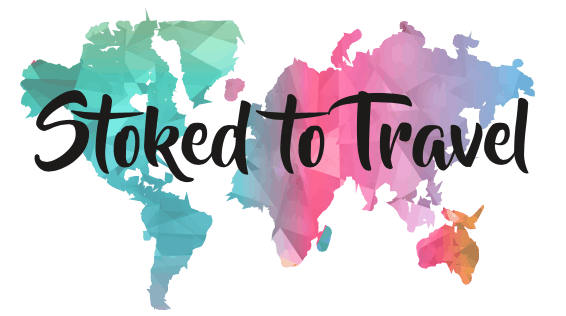
Philippines Travel Guide: Everything You Need to Know Before visiting
The Philippines – home to beautiful beaches, chilled island vibes, an interesting history and some of the most wonderfully kind people. It’s one of the very best places I’ve been to. In fact, I love the Philippines so much that I can’t wait for a return visit. However, having been to the Philippines twice now, I thought I’d share all of the useful information and vital tips I’ve gathered on my trips in this Philippines travel guide.
Philippines Travel Guide: Essential Things to Know
In this post, I’ve tried to detail everything you could need to know before visiting the Philippines, with the advice ranging from handling poor weather, unexpected hassles to tips to save money and to help you stay safe. I wish I had known some of these useful tips before my travels through the Philippines– as many of these tips and tricks are completely specific to the country!
Take a read below and let me know if you have any questions or thoughts. I hope you find these useful whilst planning your Philippines itinerary!
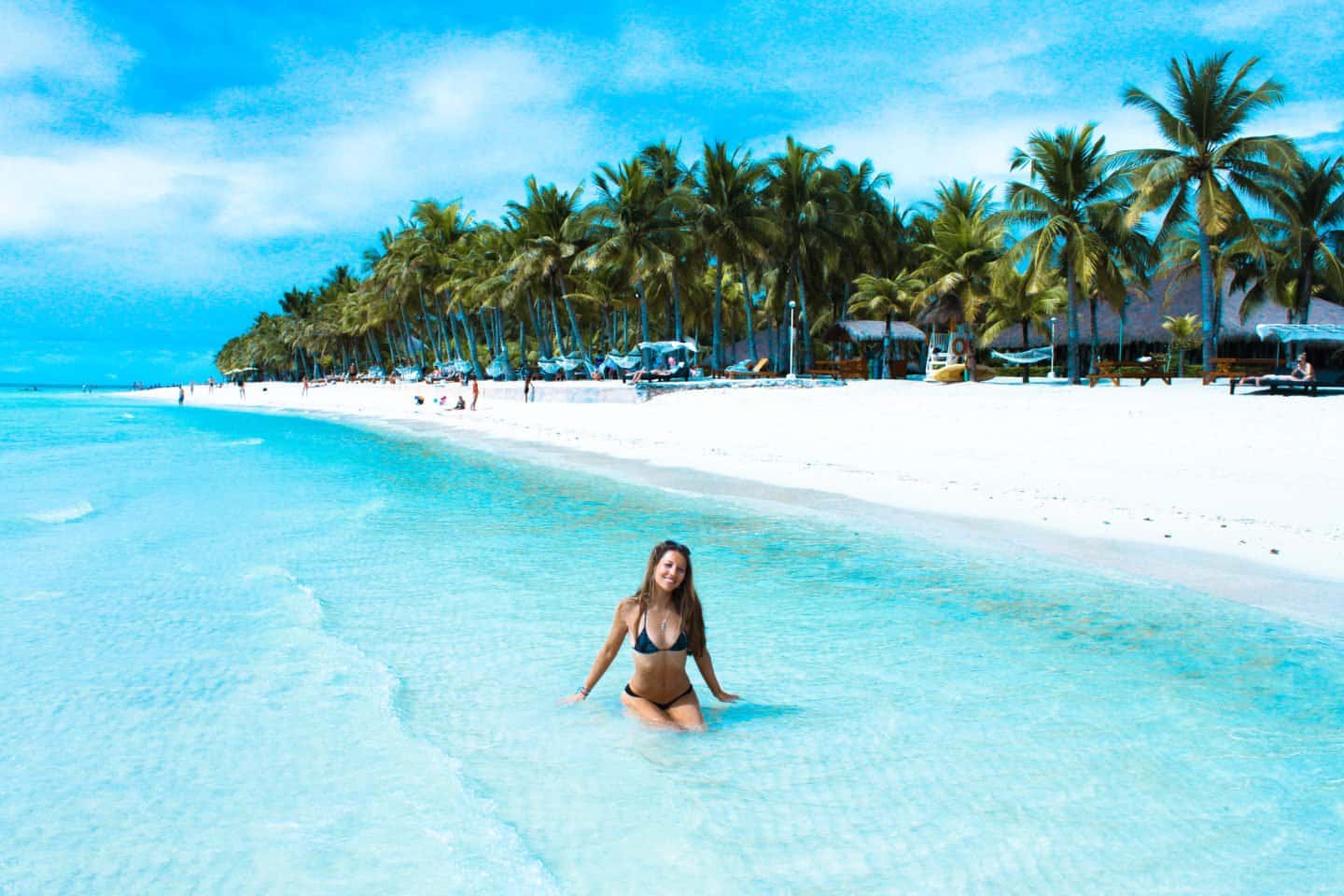
Check for ATMs on the islands in the Philippines’
As you fix up your travel plans around the islands of the Philippines, don’t assume there’ll be an ATM where you’re staying.
Either research ahead of time or ask your hostel/hotel. Places like Manila , Cebu and Boracay have plentiful ATMs but many of the smaller Philippines islands do not have ATMs.
El Nido in 2014 didn’t have an ATM, but by January 2017 there was one ATM. However, it often ran out of cash. To be on the safe side, always try and keep a reasonable amount of the local currency (Philippine Pesos – PHP) on you. You really don’t want to be stuck anywhere without cash – many hostels etc will not take card payments either.
On the same note, not all ATMs in the Philippines take international cards so always think ahead about your money needs. You may need to stock up on Philippine Pesos a little way ahead.
To be honest, this may well be the most useful of my Philippines travel tips as you can’t get that far without some money!
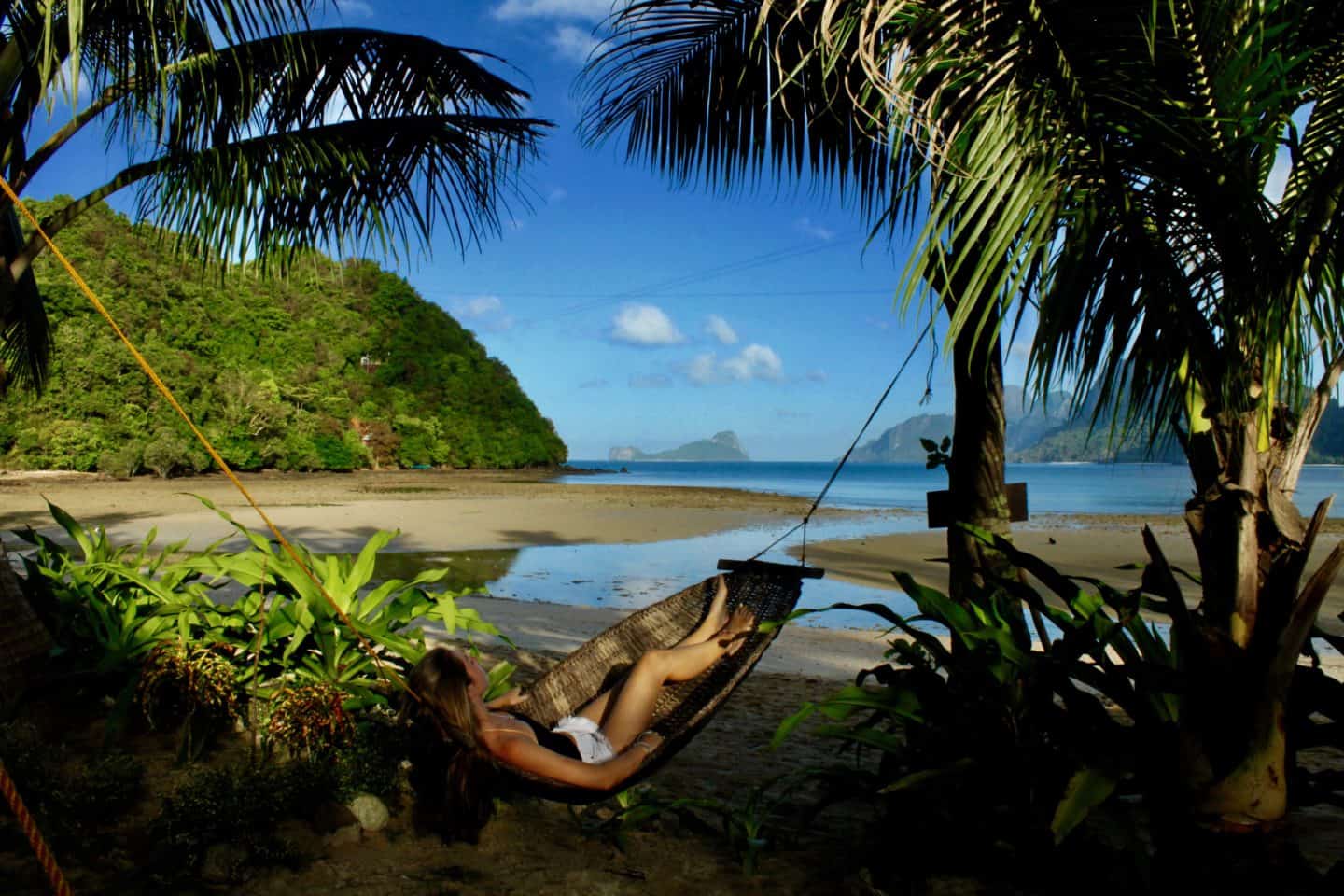
Keep Pesos at hand for the airport departure fees
Many of the airports around the Philippines have domestic or international terminal fees. These can change ahead of time but are normally around 200PHP. You pay these after check-in but cannot continue to the rest of the airport until you have this receipt of this fee stapled to your ticket.

Do not drink the water in the Philippines
Just don’t. El Nido is particularly known for poor sanitation and water quality. On my first trip there, both my friend and I got really sick from the water.
I would even go as far as say to clean your teeth with bottled water. On some occasions, I have even sanitised my cutlery as this is likely to have been washed in tap water.
Bottles of water around the Philippines are mostly cheap and plentiful – in fact, many hotels will offer complimentary bottles each day.
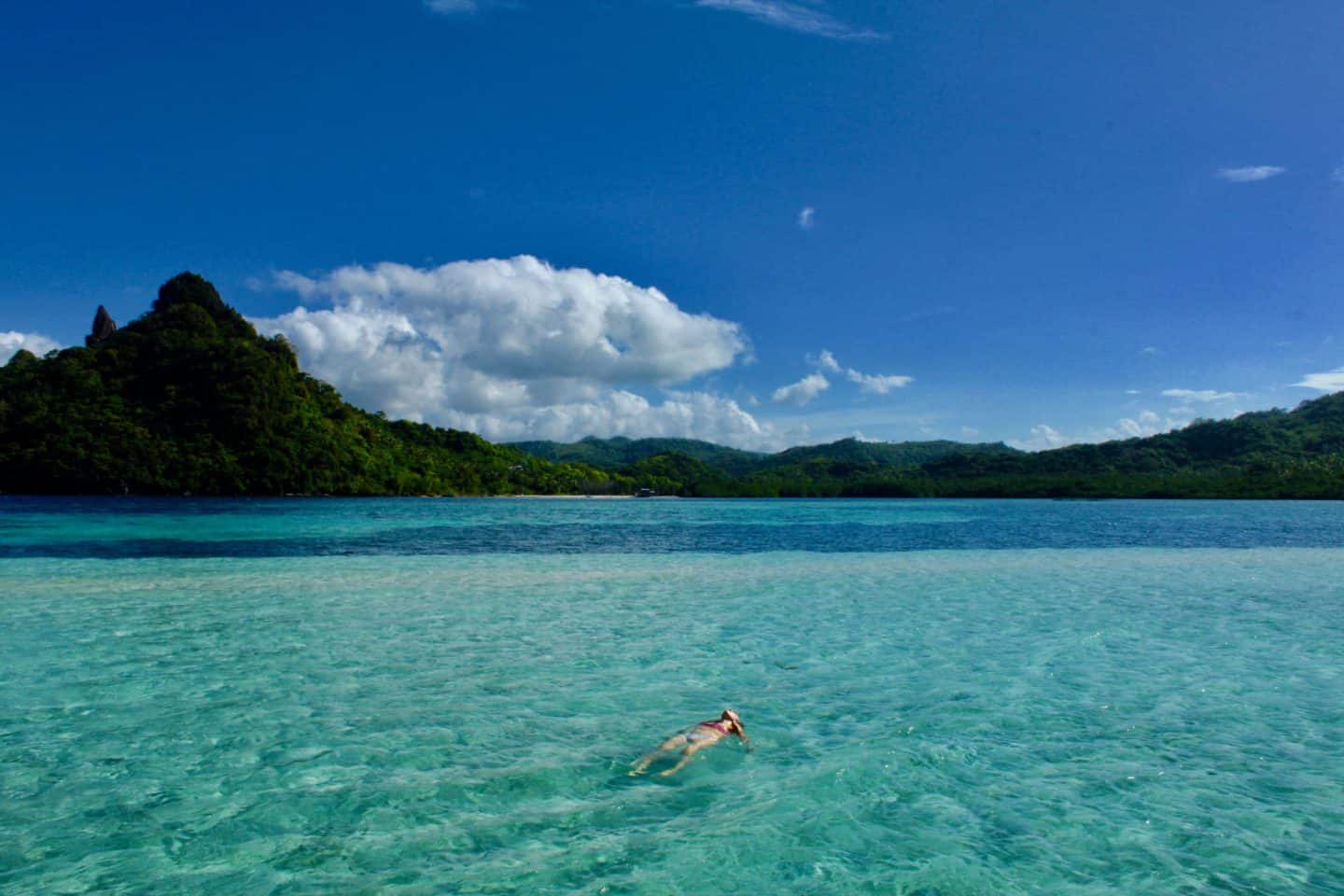
Take mosquito repellent
And use it regularly. Whilst malaria is now uncommon on most islands in the Philippines, Zika is still prevalent in some places. Many hostels will offer mosquito nets and when they do – use them. Direct the fan over yourself to keep yourself as cool as possible.
Pack lightly
The Philippines consists of more than 7,000 islands, so it’s likely you’ll be island hopping. Too many bags will just irritate you. There can be a lot of journey segments too – perhaps a tricycle, a bus, a boat, a tricycle – and that might be just to get you to the airport.
Leaping in and out of these, it’s easiest with as few luggage pieces as possible and then there’s less chance of forgetting items too!
Make sure to check out my guide to the best travel luggage options here .
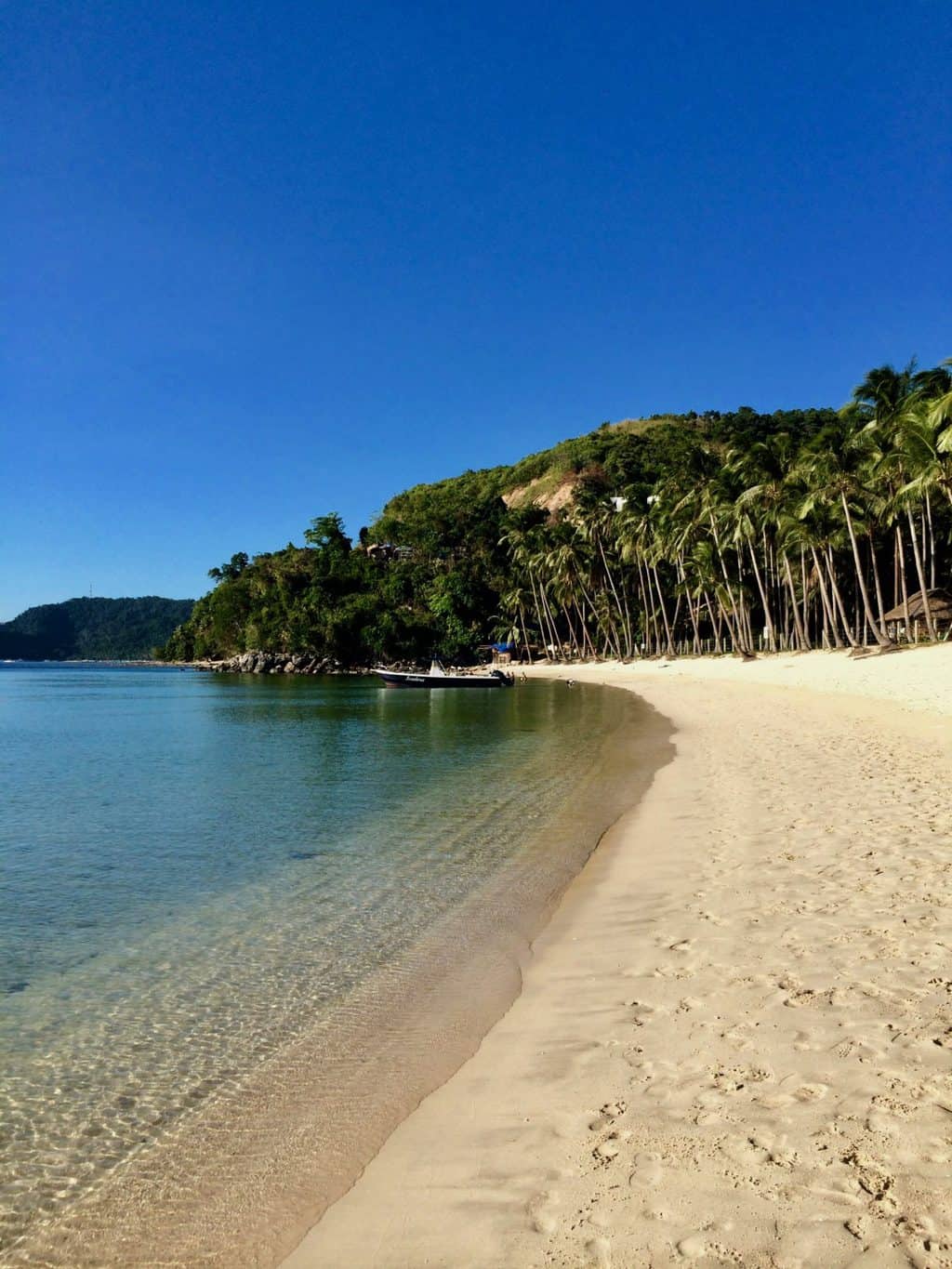
Leave plenty of time for travelling between islands in the Philippines
This is really important advice for travelling around the Philippines.
In the planning stages, it can be wise to dedicate an entire day to travelling between islands in the Philippines. All the segments can add up, or sometimes the only option is to fly back to Manila to catch another fight to the next island.
Generally, you should leave as much time as possible whilst moving around on travelling days. Weather, cancellations, traffic – all these things can have a big impact on travel in the Philippines.
A cyclone meant that a huge backlog of passengers were trying to get a ferry from Tagbilaran (Bohol) to Cebu, and this meant (despite arriving hours ahead of time) that the first ferry we could get departed after our scheduled flight time out of Cebu.
We were booked on the only direct flight out of Cebu to Puerto Princesa but we missed it. Therefore, we had to wait many hours before flying back to Manila to connect and fly back down. It took us 30 hours in the end (to travel about 400km).
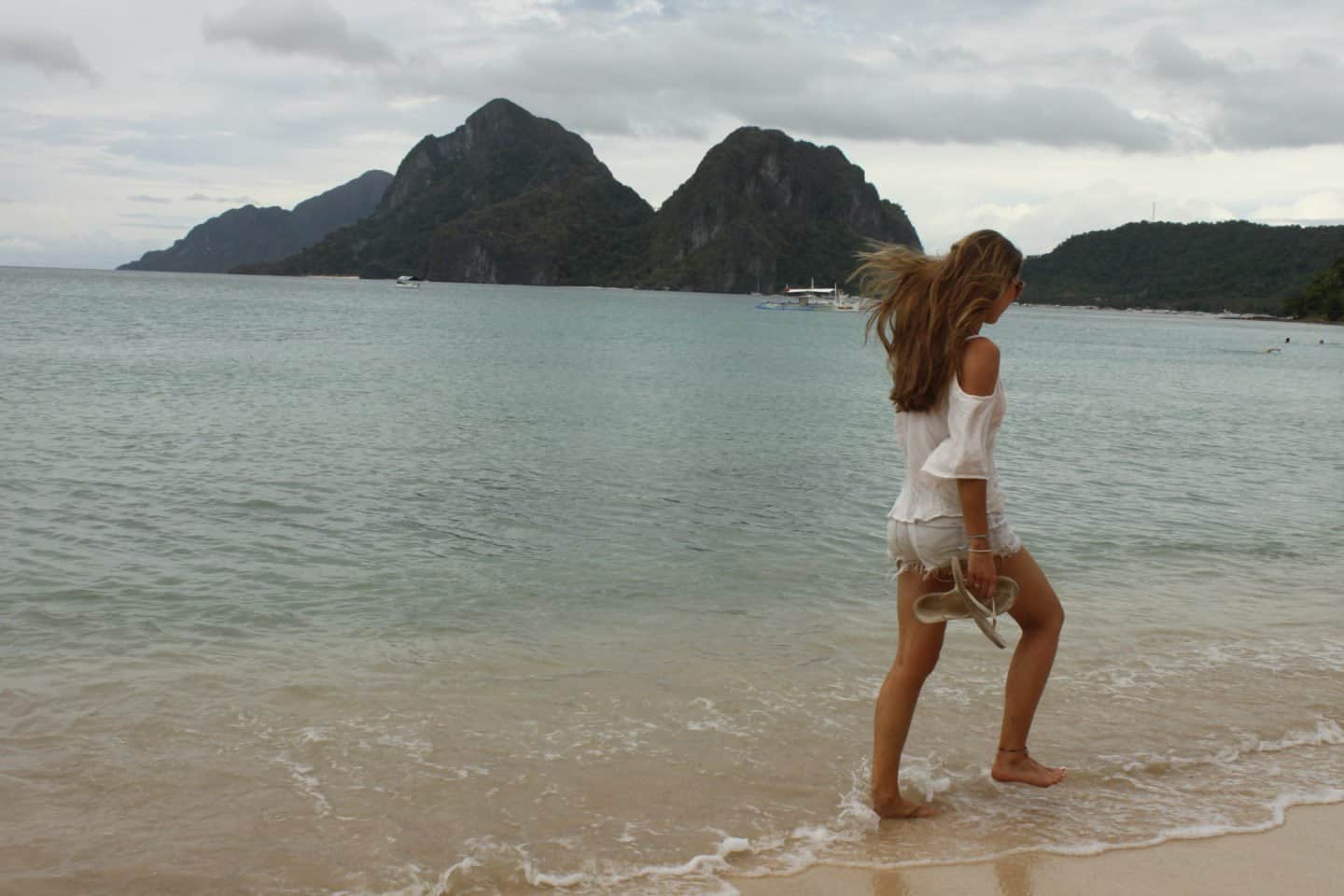
Get proof of any delays/cancellations at the time
I wouldn’t have known to do this had we not found ourselves in the above situation.
In order for Cebu Pacific to allow us to get on a later connecting flight without a penalty, we had to go back to the port and get the coastguard to write and sign a letter confirming the delay/cancellations.
The return taxi at 10pm was an extra cost, and the worrying that the coastguard had closed for the night was not pleasant.
So my top travel tip for the Philippines would be to always ask for some signed proof from an official to avoid frustrating implications and expensive penalties!
Always try and get a window seat
Always! Seeing the Philippines’ many islands from the sky is quite something. Volcanic islands, dense jungle or stretches of twinkly turquoise seas and amazing sand bars – you won’t want to miss the photo opportunity.
The same goes for buses, you’ll be winding through villages, mountains and rice paddies and the scenery is stunning.
Take a jumper, leggings and socks
Filipinos like air-con. A lot!
On planes, ferries, buses and unforgettably in Manila airport. I found it absolutely, unbearably cold.
One time, I found myself at the airport when all my belongings waiting for a 12 hour delay(!) I had been checked in so my luggage was nowhere near. The zircon was freezing so I tried to bury myself under a few pairs of shorts and some tops. It was impossible to sleep! Even better, keep a silk sleeping bag at hand!
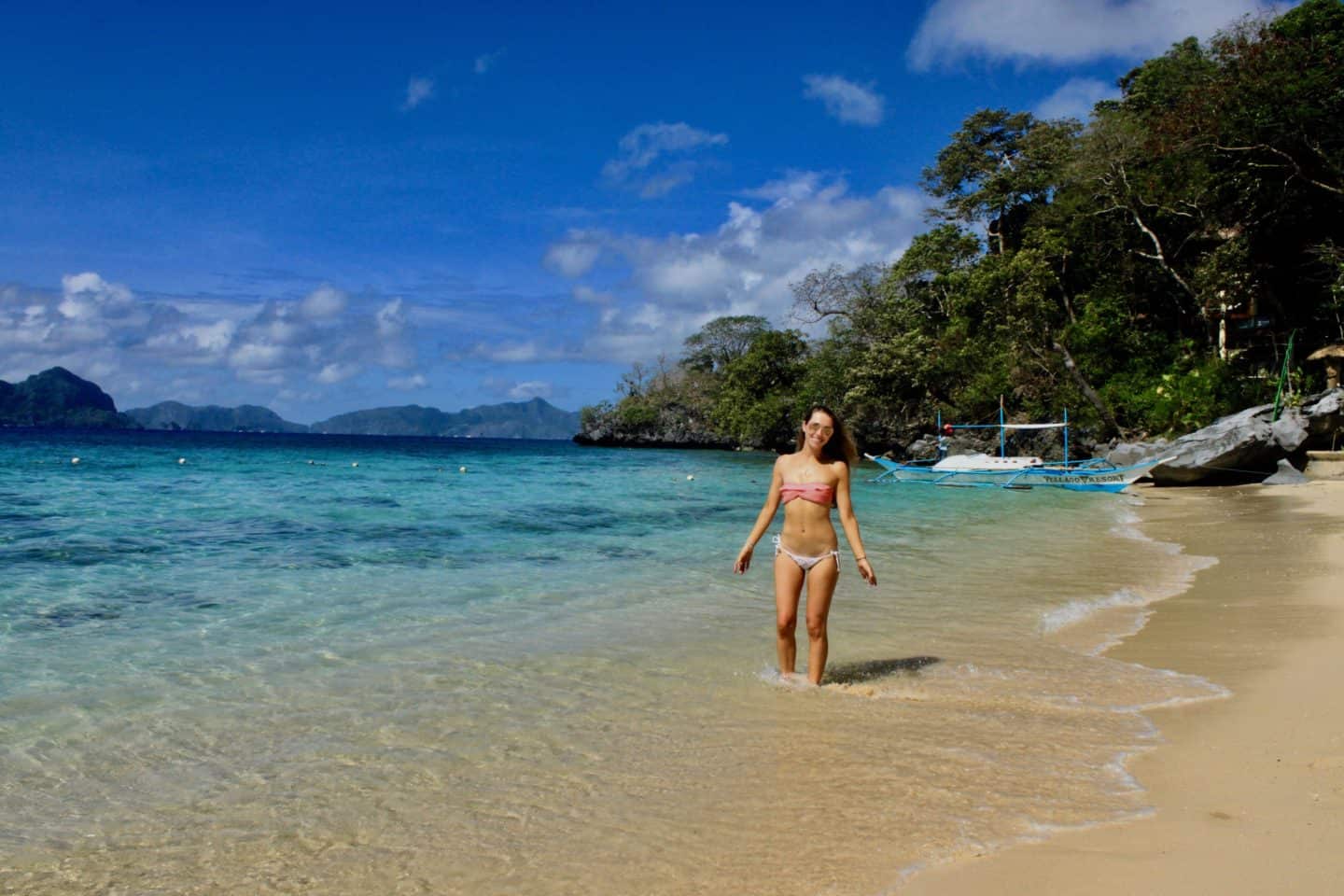
Befriend the Filipino locals
Everyone in the Philippines speaks English!
Some more basic than others, depending on which island you’re on, but generally you can converse with some ease with anyone. The Filipino culture is extremely friendly and people really want you to enjoy your time. Filipinos are not suspicious or greedy, but are kind and nearly always happy to help. They love to smile too and it’s likely you’ll find it infectious!
The only time you may experience any feelings of frustration is perhaps whilst travelling around the islands in the Philippines. We found (only sometimes) that the tricycle drivers could be a little deceiving in order to get our custom. For example, one night on Cebu, as the night crept on and no local buses passed for over 2 hours, the tricycle and scooter drivers would tell us that the last buses had been and gone. Yet, we knew having spoken to other locals that they were still running. For hours they persisted and even laughed at us – but a bus did eventually come.
As with many countries and unregulated taxi-style services, in some areas in the Philippines they really may try to charge exorbitant prices, but stay firm and smile. They normally give in once you hold your ground for long enough. Otherwise generally speaking, no other people will try and take advantage as may be the case in countries like Thailand.
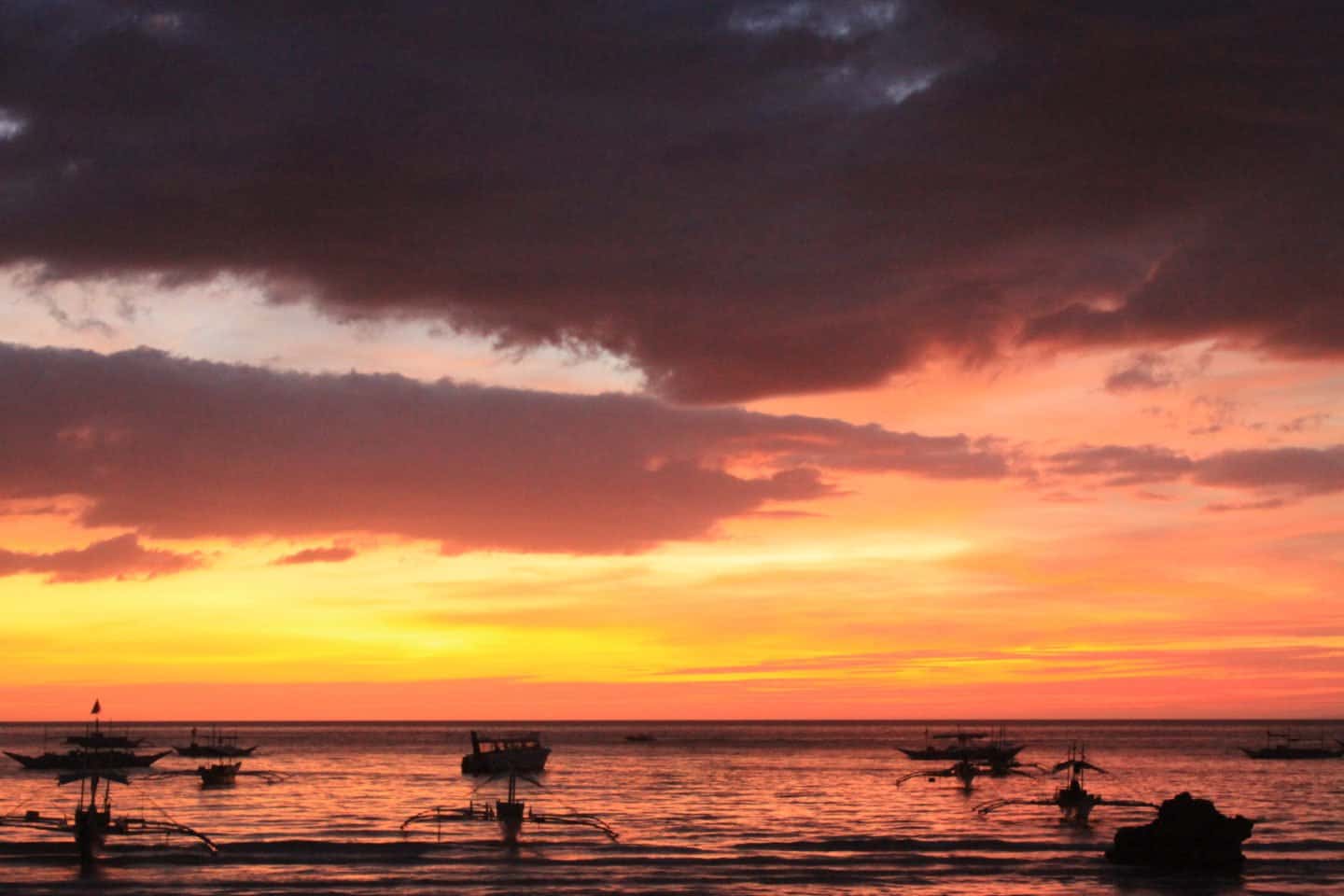
Take all the medication you might need
There are pharmacies in the larger cities and islands around the Philippines, but as with travelling to many countries in the world, you can’t expect them to have exactly what you need and when you need it. It’s always better to be safe than sorry.
Buy a sim or a portable wifi hotspot
If you need to go online in the Philippines, do not expect there to be decent wifi everywhere. Places like Boracay and Manila have readily available fast wifi, but many of the islands might be very hit and miss.
As a top travel tip, the internet in El Nido is poor throughout the town. It’s not about which café or hotel you visit, the actual internet provided to the town is very poor. It works best at about 4am. I couldn’t even get on Instagram!
On the other hand, we found the wifi at every airport in the Philippines to be very good (and free). At Manila’s airport, we found it to be exceptionally fast!

If you’re low on budget or time, book everything ahead
It pains me to say it, as nothing is better than travelling with absolute freedom and flexibility, but it can save a lot of money and time in the Philippines.
As it’s likely you’ll be travelling between some of the Philippines’ many islands, you’ll need planes and ferries at some point.
Plane tickets (AirAsia, Cebu Pacific etc) far ahead of time can be really cheap – I’ve got flights for as low as £12 one way. But a day or two ahead, they can be well over £100/£150.
On many routes, they sell-out too. So you cannot be afforded the same level of complete freedom that other countries can offer where you can rock up to the station on the day to get a bus to the other end of the country.
I didn’t think to book ferries ahead in the Philippines, but they can also fill up completely or only have seats in the much more expensive Business Class. This is particularly so on popular routes and the ferries that ply these.
On the other hand, always ask locals about less official boats going between islands. From Oslob, we took a local wooden boat direct to Alona Beach. It cost a lot more (1000PHP), but for the speed and complete convenience of avoiding tricycles, buses and any hassle, it was worth every penny. We sat on the wooden bow of the boat for whole journey, enjoying the sea spray and sunbathing opportunity! Much better than a huge commercial ferry!
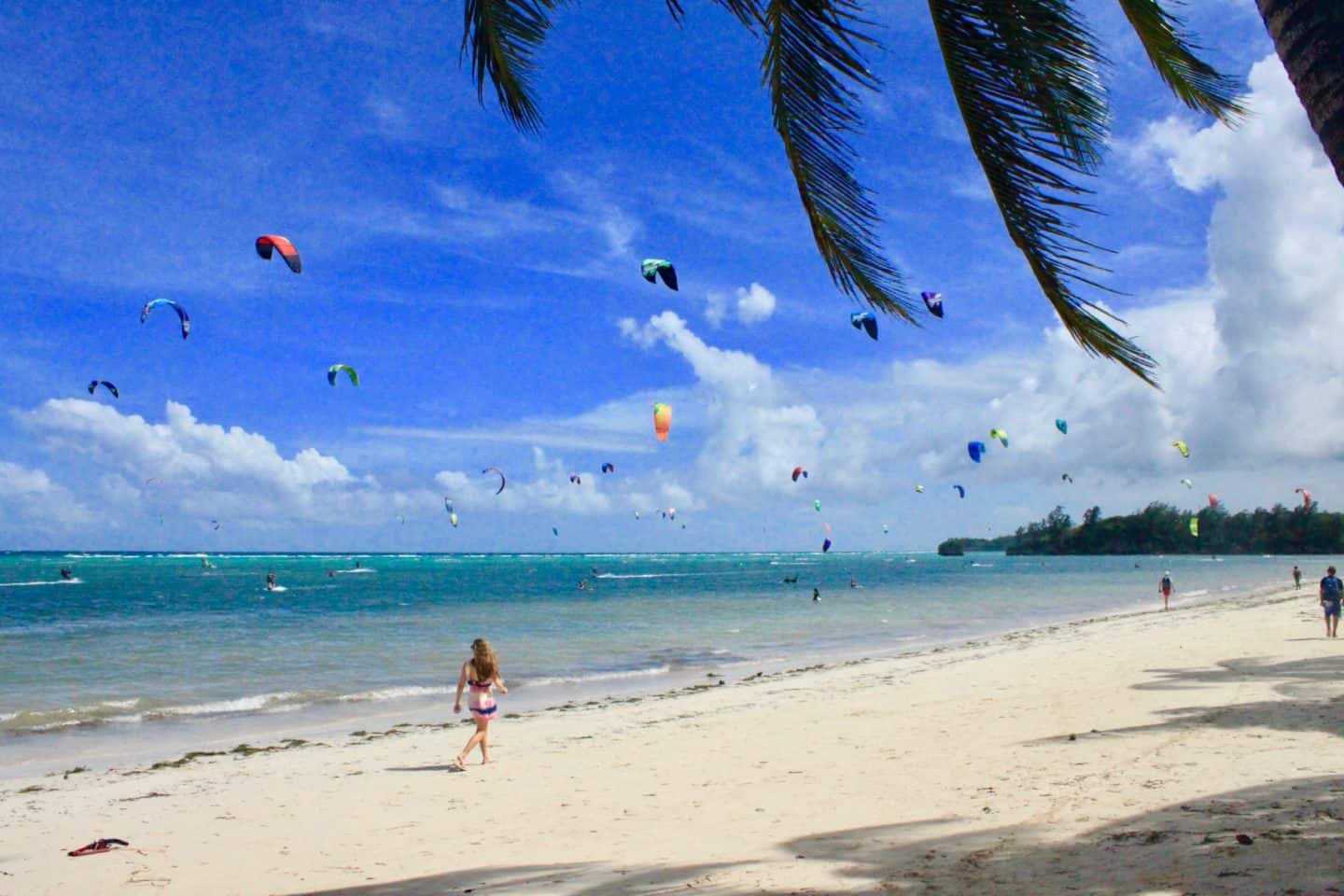
Take flip flops and expect to ruin them
The Philippines is a very tropical country and torrential downpours can happen at any time. Whilst flip flops can make walking in heavy rain and very slippery, any other shoes will be even more impractical. But the mud has permanently stained my white flip flops forever so don’t take your favourite shoes.

Use an umbrella not a raincoat
It’s not a bad idea to keep an umbrella at hand to whip out in the occasion of a torrential downpour in the Philippines.
Raincoats are far too hot and sticky, and a waste of your precious luggage space. Stick to umbrellas – oh and waterproof backpack covers can be useful too. When it rains, it really does rain!
However, if you’re visiting areas in the Philippines that are at high altitude such as Banuaue, the temperature can be considerably lower and you may want a light jacket here.
Invest in a waterproof diving bag
I wish I had one of these for my trip for both the beach days and the boat trips in the Philippines. Especially while out on snorkelling trips or island hopping, my day sack was a constant source of worry and I had to keep re-positioning to stop its contents getting soaked. A waterproof diving bag keeps all your valuables safe and dry so you can relax even when it’s on the wooden decking of the boats where the floor always gets soaked.
Bring comfortable water shoes
Considered a bit of fashion crime in the UK, I seriously wished I had a pair whilst exploring.
Many of the islands in the Philippines are surrounded by shallow water and you can often find you can out from the shore really far and still only have water come to your hips.
You’ll be warned of pesky sea urchins even at the dreamiest of white sand beaches. A prick from one of these leaves you in serious pain and in need of urgent medical help.
I’m fairly certain they’d been removed from Boracay’s main beaches, but I needed water shoes for Bulabog Beach where we spent our days kitesurfing . In fact, even in El Nido in the famous lagoons!
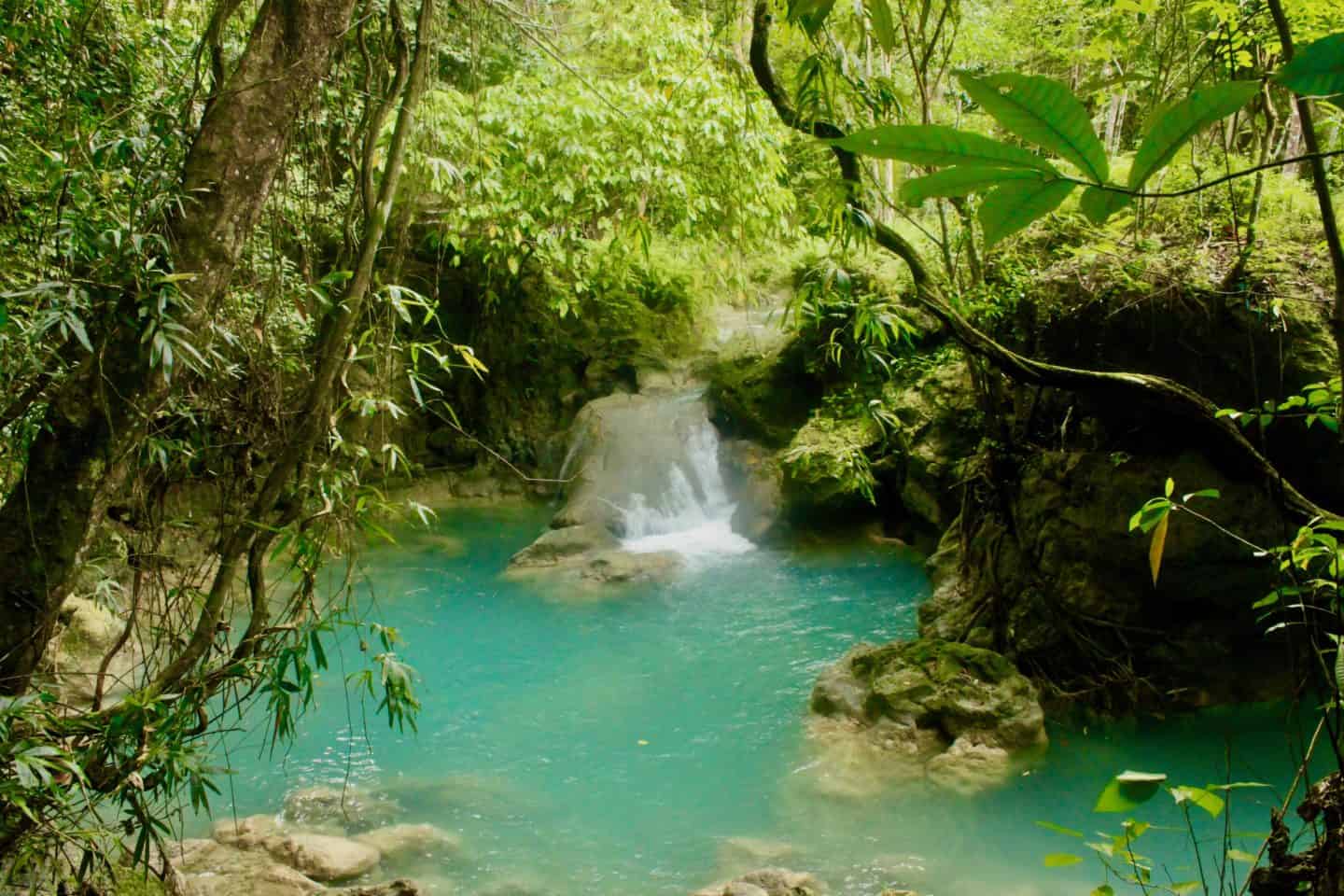
Philippines Travel Guide
Have you been to the Philippines? Are there any other key tips or tricks I’ve missed in this travel Guide? Let me know!
Otherwise, I hope that this guide to the Philippines and all of my top travel tips prove useful for planning your own trip. You might also find some of my other posts useful, including my 3 week itinerary for the Philippines , as well as my guides to Boracay , Bohol , Kawasan Falls , El Nido and Manila . Make sure to also check this guide on 15 must-eat dishes in the Philippines too , featuring lechon – my favourite Filipino dish!
If you’ve enjoyed this post, feel free to share using the below links!
Wanna see more? Check my Instagram here , my Facebook here or my Twitter here !
Disclaimer: This visit to the Philippines was entirely paid for by myself and there was no involvement from the tourism board or a hotel. This is an independent guide.
Enjoyed my Philippines Travel Guide? Pin it!
You may also enjoy:
Thailand travel guide: the best places …, the best vegan and plant-based cafes …, ella travel guide: the best things …, vietnam travel guide: the best places …, 22 comments.
These are some amazing tips! I don’t have a pair of water shoes but I definitely do NOT want to step on any sea urchins – a friend of mine stepped on one and had to have half her foot cut out! I can’t believe it took you guys 30 hours to travel from point to point because of a missed flight – what a bummer!
You have some really great tips here – I don’t know why I didn’t know about this before but duh waterproof backpack covers?! That would have helped me so many times while traveling. I’m definitely going to be investing into one of these.
Great tips. I hope to visit the Philippines sometime in the near future so your post has been invaluable. I will take into account the waterproof diving bag. This never even occurred to me.
Thanks for some great advice. Your photos are really good and make the place look really inviting.
This is quite an exhaustive and useful guide. All really sensible and practical tips. The Philippines is so vast and its islands and beaches so many, all seem to be better than the other. It would need quite some planning to travel across this beautiful country and your tips will really prove useful.
These tips are awesome. My friend is actually in the Philippines right now, too bad I couldn`t join her because judging from your photos you had a great time.
Some really great tips there! Also, 30 hours of travelling? That is insane!! I hope you had the window seats though (:
This is a really comprehensive list. Things like mosquito repellants, one can easily forget when packing. And Philippines has it’s own set of requirements. So, it’s essential to pack accordingly. I will refer back to it when I plan to visit here.
Love the tip about bringing proof of delays! We are heading to PH at the end of the year and will be doing a lot of island hopping!
Great tips! I would never think about many of these things. I definitely want to visit PH in the next couple of years; it looks like such a beautiful place!
I really want to visit the Philippines and this was such a helpful set of tips. I like to think that I think of everything…but, nope, you listed a bunch of things I would definitely take for granted! Super useful!
You have listed some incredible tips there! Poor water quality and carrying medication is essential to avoid health hazards on a trip. The shoes tip is great too. Hoping to visit Philippines soon. These would be handy. Thanks a ton for sharing!
Philippines looks like such an amazing place to visit, but thanks so much for providing so many “real” tips! I loved that you went beyond the typical “bring sunscreen and a hat” and really gave some insight into what the trip will be like … complete with vital warnings!
Thanks for this amazing guide to travel Manila. I love this place. I have visited it two times and I am planning to go there again. Your blog post is inspiring me a lot and you gave really beautiful photos.
Awesome, glad to hear it!
The Philippines is a great place to travel with family, friends as well as solo trips. In this article, you have presented an amazing guideline for traveling to the Philippines. Thank you so much for sharing this article with us.
Handy guide! A list of the COVID-19 travel guidelines would be a great supplement to this Philippine Travel Guide since foreign travelers are welcome in the country again! This list is extensive and regularly updated: https://guidetothephilippines.ph/articles/ultimate-guides/philippines-travel-covid-19
Thanks for sharing this blog comments help to inspire me to travel more and find the perfect comfortable water shoes for myself. Thanks!
I found this post very interesting. This is truly a complete travel guide, especially for first-timers visiting this tropical island. Straightforward travel tips are the ones that I am really looking for. You are right, we all have different travel experiences. To enjoy the Philippines to the fullest, it’s good to have an overview or idea of what to expect. I know, a minor incident can happen. Dealing with local transport is sometimes intimidating, but we know better now how to handle them.
Your travel guide didn’t simply cover the popular places; it also discovered some hidden gems! I adore the concept of venturing off the main road, and your suggestions have brought a new dimension to my travel bucket list.
This captivating exploration of the Philippines truly encapsulates the allure of its natural wonders. The author’s vivid descriptions and insightful narratives make me yearn for my own adventure in this breathtaking country. And for fellow explorers seeking the perfect camping spot, WildKamp is a must-visit directory to enhance your journey. Kudos to the author for inspiring wanderlust with every word!
This article on Philippines travel tips is a treasure trove for adventurers planning their next getaway! With insightful advice and practical recommendations, it offers invaluable insights for making the most out of your Philippine adventure. From cultural etiquette to must-visit destinations, each tip is thoughtfully curated to ensure a memorable experience. As someone with a passion for travel, I found this guide incredibly helpful and informative. Thanks for sharing these essential tips for exploring the beauty of the Philippines!
Leave a Reply Cancel reply
Your email address will not be published. Required fields are marked *
Let’s connect
Travel Guide Philippines
Book your individual trip , stress-free with local travel experts
Select Month
- roughguides.com
- Philippines
- Travel guide
- Itineraries
- Local Experts
- Travel Advice
- Accommodation
Plan your tailor-made trip with a local expert
Book securely with money-back guarantee
Travel stress-free with local assistance and 24/7 support
Graced by dazzling beaches, year-round sun and numerous opportunities for diving, island-hopping and surfing, the Philippines has long attracted a steady stream of foreign visitors. That said, if you're looking to get off the beaten track, there are plenty of b eautiful alternatives to the most famous Philippines beaches .
Where to go in the Philippines
Outdoor activities in the philippines, catholic nation, videoke crazy, travel ideas for philippines.
Created by local experts

Tropical Escape to Palawan
Only have a few days to discover the island paradise of El Nido? Fly into Manila and take a domestic flight the next day to enjoy the white sandy beaches. Take a full day boat tour to discover the Bacuit Bay before enjoying a last dinner on the island and heading out to Manila on Day 4.

Island Paradise Palawan
Explore the island paradise of Palawan: From the Underground River in Sabang to feeling like Robinson Crusoe on Flower Island to the popular dive and beach hang-out El Nido, this itinerary shows you the variety Palawan has to offer.

Paradise Islands: Boracay & Palawan
Discover two paradise islands in the Philippines: world-famous Boracay and El Nido on Palawan. Enjoy luxurious hotels, white sandy beaches, a fascinating underwater world and the hospitality of the local population.

A Palawan Beach Dream
Endless white beaches, a fascinating underwater world, snorkeling, kayaking, diving - this itinerary is a dream for all the beach bums out there. Discovering Modessa Island, El Nido and Coron, you will see highlights of Palawan with plenty of time to relax and sip coconuts on the beach.

Total immersion - Visayas
Explore the fascinating Visayas: First you will get to know Cebu with its waterfalls and islands before heading to Dumaguete to swim with turtles and over to Bohol: known for its chocolate hills and tarsiers, this island never ceases to amaze. A few more beach days in Siquijor conclude this trip.

A diving adventure in Palawan
A fascinating underwater world is ready to be explored. Coron is known for its wreck diving while El Nido has beautiful islands, hidden lagoons, and hundreds of species of coral and marine life. This itinerary allows you to discover both places, above and below the water.
In addition, there’s far more to these islands than sand and snorkelling. Beyond the coastline are places to visit of a different nature; mystical tribal villages, ancient rice terraces, jungle-smothered peaks and crumbling Spanish churches. Look closer and you’ll see the influence of the island’s rich stew of cultures – Islamic, Malay, Spanish and American – in an exuberant array of festivals, tantalizing food and elegant colonial towns that has more in common with Latin America than the rest of Asia.
Indeed, cut off from the main Southeast Asian overland route by the South China Sea, the Philippines is often misunderstood by travellers and its Asian neighbours, casually dismissed as a supplier of maids, tribute bands, mail-order brides and corrupt politicians, epitomized by the gaudy excesses of Imelda Marcos. Don’t be put off; while poverty and corruption remain serious problems, the Philippines is far more complex – and culturally rich – than the stereotypes suggest.
The Filipino people, who speak more than 150 languages and dialects, are variously descended from early Malay settlers, Muslim Sufis from the Middle East, Spanish conquistadors and friars, and later Chinese traders. It’s an old cliché, but largely true: Filipinos take pride in making visitors welcome, even in the most rustic barrio home.
Equally important is the culture of entertaining, evident in the hundreds of colourful fiestas that are held throughout the country, many tied to the Roman Catholic calendar. Never far behind partying is eating and Filipino food is heavily influenced by Spanish and native traditions – expect plenty of fresh fish, roasted meats (pork and chicken) and a plethora of addictive desserts, many utilizing the vast array of tropical fruits on offer. As delicious as this all sounds, the Philippines is also home to some more unusual food ...
Even the politics in Asia’s first democracy is rich in showmanship and pizzazz. From Ferdinand Marcos to the “housewife President” Cory Aquino to current paparazzi favourite Ninoy Aquino, the country’s leaders have never been short on charisma. But despite impressive economic gains in the last twenty years, all have conspicuously failed to rid the country of its grinding poverty, visible everywhere you go in shanty towns and rickety barrios. Ordinary people somehow remain stoical in the face of these problems, infectiously optimistic and upbeat. This determination to enjoy life is a national characteristic, encapsulated in the common Tagalog phrase bahala na – “what will be will be”.
Most flights to the Philippines arrive in Manila, the crazy, chaotic capital which, despite first impressions, is worth at least a day or two of your time. The city’s major historical attraction is the old Spanish walled city of Intramuros, while the best museums in the country can be found in nearby Rizal Park and skyscraper-smothered Makati. There are also some worthwhile day-trips from the city; top of the list is the island of Corregidor in Manila Bay, which was fought over bitterly during World War II and, with its now-silent guns and ruins, is a poignant place to soak up the history of the conflict.
Within easy striking distance of Manila – about two hours south by road – the province of Batangas features Tagaytay with its mesmerizing views over Lake Taal, the picture-perfect crater lake with Taal Volcano in the middle. Around the small coastal town of Anilao you’ll find the best scuba diving near Manila, while the adjacent agricultural province of Laguna is known for its therapeutic hot springs and luscious buko (coconut) pies.
To the north of Manila the theme parks, beaches and wreck dives of Subic Bay make a tempting break before the long bus ride to the extraordinary attractions and spell-binding mountain scenery of northern Luzon. From the mountain city of Baguio, it’s a rough but memorable trip north along winding roads to tribal communities such as Sagada, known for its hanging coffins, and Banaue, where you can trek through awe-inspiring rice-terrace countryside. Off Luzon’s northern tip are the alluring islands of Batanes, one of the country’s greatest secrets, while along Luzon’s west coast you can surf around San Fernando or explore the ravishing colonial town of Vigan, a UNESCO World Heritage site.
Head south from Manila through the Bicol region and you’ll reach perhaps the best-known of Philippine volcanoes, Mayon, an almost perfect cone that towers over the city of Legaspi and is a strenuous four- or five-day climb. Around Donsol you can swim with whale sharks, and in Bulusan Volcano National Park trek through lush rainforest to waterfalls, hot springs and volcanic craters. Even further off the tourist trail, Catanduanes offers excellent surfing while Marinduque is a pastoral island backwater that only gets touristy for the annual Moriones festival, held at Easter.
For most visitors, the myriad islands and islets of the Visayas, right at the heart of the archipelago, are top of the agenda. The captivating little island of Boracay, with its pristine beach, is on almost everyone’s itinerary. If Boracay’s a little too touristy for you, try Panglao Island off Bohol, the tantalizing beaches and waters of Malapascua off the northern top of Cebu Island or tiny Apo Island near Negros, a marine reserve where the only accommodation is in rustic cottages. For trekking and climbing make for Mount Kanlaon National Park on Negros, one of the country’s finest wilderness areas. The largest city in the Visayas, Cebu City, is the arrival point for a limited number of international flights – as well as a major hub for domestic flights – making it a good alternative base to Manila. It’s friendly, affordable and has a buzzing nightlife scene, with great restaurants and live music.
If you’re looking for some serious diving (see also Diving in the Philippines), head for Puerto Galera on the northern coast of Mindoro Island. It also boasts some excellent beaches, and trekking through the jungled interior to tribal communities. There’s more world-class diving off the west coast of Mindoro at Apo Reef, although you’ll have to join a liveaboard boat to get here.
To the west of the archipelago, out in the northern Sulu Sea, is the bewitching island of Palawan, most of it still wild and unspoiled. Many visitors come for the superb scuba diving, especially on the sunken World War II wrecks around Coron Town in the Calamian Islands to the north of Palawan proper. Palawan itself is home to the seaside town of El Nido and the Bacuit archipelago, hundreds of gem-like limestone islands with sugar-white beaches and lagoons. From Puerto Princesa, Palawan’s likeable capital, strike out for the laidback beach town of Port Barton or the Underground River, a entrancing cavern system only accessible by boat.
In the far south, the large island of Mindanao has long been the Muslim heartland of the Philippines, with enticing destinations ranging from the surf beaches and secret lagoons of Siargao Island, to the pristine waters of the Enchanted River and tribal homelands of the T’boli people around Lake Sebu in the south. Off the island’s northern coast, one of the area’s major attractions is the wonderfully friendly and scenic island of Camiguin. Mindanao’s biggest city is durian-capital Davao, from where you can head inland to Mount Apo, the tallest mountain in the archipelago and a tough ascent even for experienced climbers. Note that much of western Mindanao, including the Sulu archipelago, is dangerous to visit because of continuing Muslim separatist unrest.
Discover more places in Philippines

- Palawan, Philippines
- Southern Luzon, Philippines
- The Visayas, Philippines
- Philippines history and timeline
There are some superb wilderness areas in the Philippines and dozens of volcanoes and mountains to be climbed, from the tallest in the country, Mount Apo (2954m), to more manageable peaks close to Manila in Batangas and Rizal provinces, some of which can be tackled in a day-trip. The country also offers opportunities for caving, whitewater rafting, surfing and sailing. When it comes to sport, basketball and boxing are among the biggest passions in the Philippines.
But for a sizeable proportion of the tourists who visit the Philippines every year, the main attraction is the scuba diving. The abundance of exceptional dive sites and the high standard of diving instruction available have made the archipelago one of the world’s foremost diving destinations.
Scuba diving
Diving is one of the most popular activities in the Philippines and one of the best dive sites in the world. It’s possible year-round here, with surface water temperatures in the 25–28°C range, the warmest conditions being from February to June. On deeper dives temperatures can drop to 22°C due to the upwelling of deeper, cooler water, so a wet suit is essential. During the typhoon season from June to November, be prepared for your plans to be disrupted if a major storm hits and dive boats are unable to venture out. Visibility depends on water temperature, the strength of the current and wind direction, but generally lies in 10–30m range, as good as anywhere in the world. Popular locations include the coast around Palawan, the wrecks around Coron Town, Puerto Galera, Padre Burgos, Anilao and the more remote but scintillating reefs at Tubbataha and Apo.
Most dives cost around P1800 to P2000, including rental of the boat and equipment such as mask, booties, wet suit, fins, weight belt and air tanks. For night dives and more demanding technical dives, expect to pay around P500 extra. If you’ve booked a package, two dives a day will normally be included in the cost.
All PADI-accredited resorts offer a range of courses run by qualified professional instructors. If you haven’t been diving before and aren’t sure if you’ll take to it, try a gentle twenty-minute “discovery dive”, guided by an instructor for around P1500, or the longer PADI Discover Scuba Diving course for around P3000. The main course for beginners is the PADI Open Water Diver Course (from P18,000) which will allow you to dive at depths up to 18m. You might want to consider doing the pool sessions and written tests before you travel, then doing the checkout dives at a PADI resort in the Philippines. It saves time and means you don’t have to slave over homework in the tropical heat. If you choose this option, make sure you bring your PADI referral documents with you.
Once you’ve passed the course and been given your certification card, you are free to dive not just anywhere in the Philippines, but anywhere in the world. You might also want to take another step up the diving ladder by enrolling in a more advanced course. There are many to choose from, including Advanced Open Water Diver (from P14,000), Emergency First Response (from P6000), which is also suitable for non-divers and Rescue Diver (from P18,000).
Liveaboards
There are two great advantages to diving from a liveaboard (a boat that acts as a mobile hotel) – you can get to places that are inaccessible by bangka and once you’re there you can linger for a night or two. Liveaboards allow you to explore terrific destinations such as Apo Reef off the coast of Mindoro and Tubbataha in the Sulu Sea, arguably the best dive spot in the country. Packages include all meals and dives, but vary significantly according to destination; Tubbataha costs at least US$1200–1600 per week, while trips around Coron start at around US$130 per day. Most of the boats used have air-conditioned en-suite cabins for two. Packages often include unlimited diving and are always full board.
Diving dos and don’ts
Divers can cause damage to reefs, sometimes inadvertently. Be aware of your fins because they can break off coral heads that take years to re-grow. Don’t grab coral to steady yourself and always maintain good buoyancy control – colliding with a reef can be destructive. Don’t kick up sediment, which can choke and kill corals. For more information about reef conservation efforts in the Philippines, check out wwww.oceanheritage.com.ph, the website of the Ocean Heritage Foundation, a local environmentalist group. Below is a list of additional dos and don’ts:
- Collecting aquatic life - Resist the temptation to take home corals or shells, and never take souvenirs from wreck dives or remove anything dead or alive – except rubbish – from the ocean.
- Riding aquatic life - Hard to credit, but some divers still think it’s a great lark to hang onto the back of a turtle or manta ray. Simply put, there are no circumstances in which this is right.
- Spear-fishing - This has been outlawed in the Philippines, and environmental groups are increasingly reporting spear-fishers to the authorities for prosecution.
- Touching and handling aquatic life - For many organisms this is a terrifying and injurious experience. Handling marine life is best left to people who have experience with the creatures concerned.
Trekking and climbing
The Philippines offer plenty of opportunities to explore pristine wilderness areas. Luzon, for example, has the Sierra Madre and the Balbalasang-Balbalan National Park in Kalinga, both rarely visited by tourists and offering exhilarating trekking through dense rainforest and across dizzying peaks. In Bicol there are some terrific volcano climbs (Mount Mayon and Mount Isarog, for instance), while Mindoro, Palawan and the Visayas between them have dozens of national parks, heritage areas, wildlife sanctuaries and volcanoes. Mount Kanlaon, an active volcano in Negros, is one of the country’s more risky climbs, while the nearby Northern Negros Forest Reserve is a raw, mesmerizing landscape of peaks, waterfalls and fumaroles, typical of wilderness areas throughout the archipelago.
The country actually has more than sixty national parks and protected areas, but because funds for their management are scarce, you won’t find the kind of infrastructure that exists in national parks in the West. While the most popular climbs – Mount Apo in Mindanao and Mount Pulag in Mountain province, for example – have trails that are relatively easy to find and follow, it’s important to realize that trails are generally poorly maintained and hardly marked, if they’re marked at all. There are seldom more than a few badly paid wardens or rangers responsible for huge tracts of land. Where accommodation exists, it will be extremely basic. Some national parks have administrative buildings where you might be able to get a bed in a dorm for the night, or where you can roll out a mattress or sleeping bag on the floor. They may also have basic cooking facilities, but the closest you’ll get to a shower is filling a bucket and washing outside. Deep within park territory, the best you can hope for is a wooden shack to shelter in for the night.
This lack of facilities means you’ll need to hire a reliable guide. Often, the place to make contact with guides is the municipal hall in the barangay or town closest to the trailhead. Fees range from P800–1500 per day depending where you are, plus food and water, which you’ll have to bring with you as it’s unlikely you’ll come across anywhere to buy anything once you’re on the trail.
There are some outdoor shops in big cities – mainly Manila – where you can buy a basic frame-tent for P3000 and a sleeping bag for P1500. Other essentials such as cooking equipment, lanterns and backpacks are also available, and you may be able to rent some items, though the range of gear on offer is limited even in the best shops.
It’s hardly surprising that caving – spelunking – is a growth industry, as there are huge caves to explore throughout the country. The largest cave systems are in northern Luzon – in Sagada and in Cagayan province near Tuguegarao, where the Peñablanca Protected Area has three hundred caves, many deep, dangerous and not yet fully explored. The other exciting caving area is the Sohoton Natural Bridge National Park in Samar.
Whitewater rafting
Whitewater rafting is becoming more popular in the Philippines, notably along the Cagayan River and Chico River in northern Luzon and Cagayan de Oro River in Mindanao. Zip lines have mushroomed all over the islands, but some are much tamer than others – some of the best are near Cagayan de Oro and Davao. You can also take a thrilling ride in a microlight near Cagayan de Oro.
Surfing is also becoming popular, with good waves in eastern Bicol, Catanduanes, eastern Mindanao (especially Siargao Island and Tandag), and around San Fernando in La Union. There are also any number of hard-to-reach areas in the archipelago that are visited only by a handful of die-hard surfers, such as Baler in northern Luzon, or around Borongan in eastern Samar.
The Filipinos embraced basketball as they did everything else American, from pizza to popcorn. Every barrio and town has a basketball court, even if all it consists of are a couple of makeshift baskets nailed to wooden poles in the church plaza. The major league – the equivalent of the NBA – is the Philippine Basketball Association (PBA; wwww.pba.com.ph), founded in 1975. Ten teams compete for honours, all of them sponsored by a major corporation and taking their sponsors’ name. You might find yourself watching Meralco Bolts play Powerade Tigers, or San Miguel Beermen take on Talk ’N Text Tropang Texters. PBA games are all played in Manila for details.
The San Miguel Beermen is the most successful team, while the Barangay Ginebra Kings is the most popular. The players are household names to most Filipinos; James Yap (with the Derby Ace Llamados), Jayjay Helterbrand (Barangay Ginebra Kings), Kelly Williams (Talk ’N Text), Willie Miller (Barangay Ginebra Kings) and Dondon Hontiveros (San Miguel Beermen) command huge attention.
Boxing has been big business in the Philippines since the Americans introduced the sport in the early twentieth century. In recent years, one name stands out in particular: Manny “the Pacman” Pacquiao, the poor boy from Mindanao who became world champion. Though you are unlikely to see the great man himself, fights are held almost every week, with major venues in Caloocan (Manila), Cebu City, Mandaluyong (Manila), Tagaytay City, Victoria (Negros) and Taytay in the Luzon province of Rizal. Tickets are cheap and often sell out; whenever there’s a bout of any significance Filipinos gather around every available television set. You can check schedules for fights at wwww.philboxing.com.
In addition to Manny Pacquiao, at the time of writing the Philippines could boast another four world champions: Nonito “The Filipino Flash” Donaire, Gerry Peñalosa, Donnie “Ahas” Nietes and Brian “Hawaiian Punch” Viloria.
Every town and city in the country has some sort of billiards hall, even if it’s just a few old tables on the pavement, where games are played by kerosene lamps, between locals, for the price of a few San Miguels. The sport has always been popular – it’s cheap and reasonably accessible – but has boomed over the past decade because of the success of Efren Reyes and Francisco Bustamante. Reyes, sometimes called “The Magician”, is one of the pool world’s great characters; a diminutive fellow with a toothy grin, he picked up the nickname “Bata” (“The Kid”) while helping out in his uncle’s pool halls in Manila as a child. He was born in Pampanga province, to the north of Manila, and can still occasionally be found on a Friday or Saturday night shooting pool in his hometown bars around Clark, good-naturedly scalping unsuspecting tourists’ drinks. In 2006, Reyes and Francisco “Django” Bustamante represented their country as Team Philippines and won the inaugural World Cup of Pool by defeating Team USA – a victory of major significance for a country with few global sporting heroes. They repeated the feat in 2009.
Cockfighting
Cockfighting is the Filipino passion few Westerners get to see or understand, for obvious reasons. It’s a brutal blood sport where fighting cocks literally peck and jab each other to death as onlookers make bets on the outcome. The fight begins when the two roosters are presented to each other in the pit. Both have a razor-sharp curved blade three inches long strapped to their leg. The fight is over in a burst of feathers in no more than a few minutes, when one rooster is too bloodied and wounded, or simply too dead, to peck back at its opponent when provoked. To make the evening last, most major cockfights feature seven contests. Anyone who likes animals should definitely stay well away.
If you do attend a cockfight (sabong in Tagalog), you’ll be experiencing Filipino culture at its rawest – at the very least it might make you think again about how much “American influence” dominates the culture. It’s best to start at one of the major cockpits in Manila, or ask your hotel for the nearest place to see one. Entrance fees are minimal, but you’ll rarely see women attending – the cockpit is the exclusive preserve of men, who see it as an egalitarian refuge from the world’s woes, a place where class differences are temporarily put to one side and everyone wears flip-flops and vests. In Manila foreign females should be OK at the main venues, but in the provinces you’ll probably feel more comfortable with a male companion.
Cockfighting and the Filipino
Cockfighting has a long history in the Philippines. National hero José Rizal, martyred by the Spanish in 1896, once pointed out that the average Filipino loves his rooster more than he does his children.
Contrary to received wisdom, cockfighting was not introduced to the country by the Spanish. When conquistadors landed in Palawan shortly after the death of Magellan, they discovered native men already breeding domestic roosters to fight, putting them in shared cages and letting them scrap over small amounts of food.
Social scientists say cockfighting is popular in the Philippines because it reflects the national passion for brevity or a quick payoff, the trait of ningas cogon (cogon being a wild grass that burns ferociously and quickly). Part of the appeal is the prize money. For a P200 entrance fee, a struggling farmer from the backwoods could finish the day with P300,000 in his pocket, all thanks to a trusty rooster he has groomed and trained assiduously for months.
Catholicism was introduced to the Philippines in 1521 with the arrival of Magellan, and today around 80 percent of the population is Roman Catholic; just 10 percent is Protestant, 5 to 10 percent Muslim and the remainder Buddhist, animist and other religions. Every barangay, town and city has its patron saint, for whom grand fiestas are held annually, and churches, many beautifully weathered colonial relics, are well attended. Daily life, too, is shot through with Catholic imagery, whether it’s government announcements in the press urging people to pray the rosary, or television footage of god-fearing presidential candidates appealing to the heavens for guidance.
Millions of Filipinos depend on jeepneys – a kind of informal minibus service – to get to school and the office, or to transport livestock to market. Jeepneys are able to operate where roads are too narrow for regular buses, and as a result most travellers end up using them at least once – despite the discomfort, for many it’s one of the highlights of their trip, a genuine slice of Filipino life.
The original jeepneys, cannibalized from vehicles left behind by departing Americans at the end of World War II, have evolved over the past five decades into the mass-produced versions that you see on the streets today, decorated with chrome trinkets, blinking fairy lights and images of celebrities. Others sport religious mottos, crucifixes and images of saints, perhaps understandable given the high accident rates they rack up.
Videoke - “video karaoke” - is a major fad in the Philippines, with cheap videoke bars in almost every town and neighbourhood. While it can be fun to participate in a Filipino singing session, being regaled by drunken wailings wafting through your hotel window in the early hours isn’t so amusing. Adding to the mix, most Filipino families own one (or more) karaoke machines that are used throughout the week, but especially on special occasions, birthdays and weddings. Incidentally, a Filipino inventor (Roberto del Rosario) actually holds the patent for the karaoke machine.
Travel advice for Philippines
From travel safety to visa requirements, discover the best tips for visiting Philippines
- Culture and Etiquette in Philippines
- Eating and drinking in Philippines
- How to get to Philippines
- Getting around Philippines: Transportation Tips
- Travel Health Philippines
- Sports and Outdoor activities in Philippines
- Shopping tips for Philippines
- Travel Tips Philippines for planning and on the go
- Best time to visit Philippines
- How to get a Philippines Visa
Find even more inspiration for Philippines here

Planning your own trip? Prepare for your trip
Use Rough Guides' trusted partners for great rates
- General Luna
written by Rough Guides Editors
updated 26.04.2021
Ready to travel and discover Philippines?
Get support from our local experts for stress-free planning & worry-free travels.
- Where to stay
- Travel advice
2024 U.S. Election September 23, 2024
Returning your absentee ballot from overseas, notice october 4, 2024, crisis support for u.s. citizens in lebanon.
- Travel Advisories |
- Contact Us |
- MyTravelGov |
Find U.S. Embassies & Consulates
Travel.state.gov, congressional liaison, special issuance agency, u.s. passports, international travel, intercountry adoption, international parental child abduction, records and authentications, popular links, travel advisories, mytravelgov, stay connected, legal resources, legal information, info for u.s. law enforcement, replace or certify documents.
Before You Go
Learn About Your Destination
While Abroad
Emergencies
Share this page:
Philippines
Travel Advisory May 16, 2024
Philippines - level 2: exercise increased caution.
Updated to reflect changes in the country summary and information on the Sulu Archipelago, Marawi City.
Exercise increased caution to the Philippines due to crime, terrorism, civil unrest, and kidnapping. Some areas have increased risk. Read the entire Travel Advisory.
Do Not Travel to:
- The Sulu Archipelago, including the southern Sulu Sea, due to crime, terrorism, civil unrest, and kidnapping .
- Marawi City in Mindanao due to terrorism and civil unrest .
Reconsider Travel to:
- Other areas of Mindanao due to crime, terrorism, civil unrest, and kidnapping .
Country Summary: Terrorists and armed groups have carried out kidnappings, bombings, and other attacks targeting public areas like tourist sites, markets, and local government facilities in the Philippines. Violent crimes are also common in the Philippines such as robbery, kidnappings, and physical assaults. Protests happen in the Philippines and could turn violent and/or result in traffic jams and road closures with limited capacity of the local government to respond.
There are stringent travel protocols and restrictions for U.S. government employees under the U.S. Embassy’s (Chief of Mission) security responsibility when traveling to certain areas of the country as stated below.
Read the country information page for additional information on travel to the Philippines.
If you decide to travel to the Philippines:
- Monitor local media for breaking events and adjust your plans based on new information.
- Avoid demonstrations.
- Enroll in the Smart Traveler Enrollment Program (STEP) to receive Alerts and make it easier to locate you in an emergency.
- Follow the Department of State on Facebook and Twitter/X .
- Review the Country Security Report for the Philippines.
- Visit the CDC page for the latest Travel Health Information related to your travel.
- Prepare a contingency plan for emergency situations. Review the Traveler’s Checklist .
The Sulu Archipelago and Sulu Sea – Level 4: Do Not Travel
Terrorist and armed groups in the Sulu Archipelago and the Sulu Sea have historically engaged in kidnappings for ransom on land and at sea, in addition to bombings and other attacks. These incidents often target foreign nationals, including U.S. citizens, local government entities, and security personnel.
The U.S. government’s ability to provide emergency services to U.S. citizens in this region is very limited. U.S. government employees under the U.S. Embassy’s (Chief of Mission) security responsibility are required to obtain special authorization to travel to these areas.
Visit our website for Travel to High-Risk Areas .
Marawi City in Mindanao – Level 4: Do Not Travel
Civilians face risk of death or injury from ongoing clashes between terrorist group remnants and Philippine security forces in Marawi.
The U.S. government’s ability to provide emergency services to U.S. citizens in Marawi City is very limited. U.S. government employees under the U.S. Embassy’s (Chief of Mission) security responsibility are required to obtain special authorization to travel to Marawi City.
Mindanao (except Davao City, Davao del Norte Province, Siargao Island, and the Dinagat Islands) – Level 3: Reconsider Travel
Terrorist and armed groups in Mindanao have historically engaged in kidnappings for ransom, in addition to bombings and other attacks. These incidents often target foreign nationals, including U.S. citizens, as well as civilians, local government entities, and security forces.
The U.S. government has limited ability to provide emergency services to U.S. citizens in large parts of Mindanao. U.S. government employees under the U.S. Embassy’s (Chief of Mission) security responsibility are required to obtain special authorization to travel to areas outside of Davao City, Davao del Norte Province, Siargao Island, and the Dinagat Islands.
Embassy Messages
View Alerts and Messages Archive
Quick Facts
Sufficient space for an entry visa stamp.
No (for tourist travel under 30 days).
Required for travelers from countries with yellow fever.
50,000 pesos/$10,000.
Embassies and Consulates
U.s. embassy manila.
1201 Roxas Boulevard Manila, Philippines 1000 Telephone: + (63) (2) 5301-2000 Emergency After-Hours Telephone: + (63) (2) 5301-2000 Fax: + (63) (2) 5301-2017 Email: [email protected]
U.S. Consular Agency - Cebu City Ground Level, Waterfront Hotel Salinas Drive Lahug, Cebu City Philippines 6000 Telephone: + (63) (32) 231-1261 Emergency After-Hours Telephone: Please contact the U.S. Embassy in Manila: + (63) (2) 301-2000 Fax: +(63) (32) 231-0174 Email: [email protected]
Destination Description
See the Department of State’s Fact Sheet on Philippines for information on U.S.-Philippines relations.
Entry, Exit and Visa Requirements
Visit the website of the Embassy of the Republic of the Philippines in Washington, D.C., for the most current visa information.
If you remain in the Philippines beyond the “admit until” date stamped in your passport by immigration authorities, you may be subject to fines and detention by the Philippine Bureau of Immigration (BI).
Certain foreigners must apply for an Emigration Clearance Certificate (ECC) from BI before they may depart the Philippines.
See the Philippine Bureau of Immigration (BI)'s website for information about Philippine visas, exit clearances, and Alien Certificate Registration (ACR).
See the Philippine Retirement Authority (PRA)'s website for information about the Special Retiree Resident Visa (SRRV).
U.S. citizens who intend to work in the Philippines should contact the Philippines Department of Labor and Employment (DOLE) for information.
The U.S. Department of State is unaware of any HIV/AIDS entry restrictions for visitors or foreign residents of the Philippines.
We advise all U.S. citizens against traveling with potentially prohibited items, such as firearms, on their person or in their checked baggage. While at the airport or traveling in country, possession of prohibited items such as live or spent ammunition or firearms, or anything resembling such items -- whether it be a souvenir, gift, or artifact – may subject the traveler to prosecution and stringent penalties by local authorities. Learn more about how to avoid problems when traveling abroad with firearms.
Check with your airline to determine whether a particular item is allowed for transport, as well as with the appropriate authorities in the Philippines – such as the Philippine National Police and Bureau of Immigration – as well as the appropriate authorities in any transit countries.
You can find information on dual nationality , prevention of international child abduction , and customs regulations on our website.
Safety and Security
Terrorism: Terrorist groups, and those inspired by such organizations, are intent on attacking U.S. citizens abroad. Terrorists are increasingly using less-sophisticated methods of attack – including knives, firearms, and vehicles – to target crowds more effectively. Frequently, their aim is unprotected or vulnerable targets, such as:
- High-profile public events (sporting contests, political rallies, demonstrations, holiday events, celebratory gatherings, etc.)
- Hotels, clubs, and restaurants frequented by tourists
- Places of worship
- Shopping malls and markets
- Public transportation systems (including subways, buses, trains, and scheduled commercial flights)
U.S. citizens should remain alert to the potential for explosions and bombings as part of pre-planned attacks, as well as the threat of kidnapping.
Terrorist and armed groups continue plotting possible kidnappings, bombings, and other attacks in the Philippines. Terrorist and armed groups may attack with little or no warning, targeting tourist locations, markets/shopping malls, and local government facilities.
For more information, please visit our website here .
Crime: Confidence games (con games), pickpocketing, Internet scams, and credit/ATM card fraud are common. Be wary of unknown individuals who attempt to befriend you, especially just after you arrive in country. Do not accept food, drinks, or rides in private vehicles from strangers, even if they appear to be legitimate. Solo travelers have been drugged and robbed by strangers after accepting an invitation to visit a tourist destination.
Kidnappings, physical assaults, murder-for-hire, and other violent crimes occur in the Philippines. Philippine government law enforcement agencies are engaged in a nationwide counter-narcotics campaign that has resulted in a sharp increase in violence between police and individuals suspected of involvement in the drug trade. As part of this campaign, law enforcement is engaged in aggressive search and buy-bust operations that could affect foreigners.
Taxis or ride-sharing applications are the recommended form of public transportation. However, taxi drivers and/or individuals using stolen taxi cabs have committed robberies. Ask the hotel, restaurant, and/or business establishment to call a reliable taxi service for you.
- Do not enter a taxi if it has already accepted another passenger.
- Request that the taxi driver use the meter to record your fare.
- Wait for another cab if the driver is unwilling to comply with these requests.
- Make a mental note of the license plate number of your taxi, or text it to someone, should there be a problem.
When driving in the city, make certain that vehicle doors are locked and windows are rolled up.
Travelers have been stopped and robbed shortly after leaving Manila Ninoy Aquino International Airport in a taxi or private vehicle.
One common form of credit/ATM card fraud involves an illicit electronic device attached to ATM card readers that retrieves and records information, including the PIN, from a card's magnetic strip. Refer to the Overseas Security Advisory Council (OSAC) website for more information .
International Financial Scams: See the Department of State and the FBI pages for information on scams.
Internet romance and financial scams are prevalent in the Philippines. Scams are often initiated through Internet postings/profiles or by unsolicited emails and letters. Scammers almost always pose as U.S. citizens who have no one else to turn to for help. Common scams include:
- Romance/online dating
- Money transfers
- Lucrative sales
- Gold purchase
- Contracts with promises of large commissions
- Grandparent/relative targeting
- Free trip/luggage
- nheritance notices
- Work permits/job offers
- Bank overpayments
Victims of Crime: U.S. citizen victims of sexual assault are encouraged to contact the U.S. Embassy for assistance.
Report crimes to the local police at the 911 hotline and contact the U.S. Embassy at +(63)(2) 5301-2000. Remember that local authorities are responsible for investigating and prosecuting the crime.
See our webpage on help for U.S. victims of crime overseas .
- Help you find appropriate medical care.
- Assist you in reporting a crime to the police.
- Contact relatives or friends with your written consent.
- Provide general information regarding the victim’s role during the local investigation and following its conclusion.
- Provide a list of local attorneys.
- Provide our information on victim’s compensation programs in the U.S.
- Provide an emergency loan for repatriation to the United States and/or limited medical support in cases of destitution.
- Help you find accommodation and arrange flights home.
- Replace a stolen or lost passport.
Domestic Violence: U.S. citizen victims of domestic violence are encouraged to contact the Embassy for assistance.
Tourism: Please check with the Philippine Department of Tourism before traveling. The safety standards you might expect of transport and tour operators, including adventure activities such as diving, are not always met. Sufficient safety equipment may not be provided, and recommended maintenance standards and safety precautions may not be observed. Always use available safety equipment, such as lifejackets or seatbelts, even if others do not. If appropriate safety equipment is not available, use another provider. In the event of an injury, appropriate medical treatment is widely available throughout the country. Outside of a major metropolitan center, it may take more time for first responders and medical professionals to stabilize a patient and provide life-saving assistance. U.S. citizens are encouraged to purchase medical evacuation insurance . If you are planning to dive, the Diver’s Alert Network (DAN) provides information on diving accident management.
Local Laws & Special Circumstances
Criminal Penalties: You are subject to local laws. If you violate local laws, even unknowingly, you may be expelled, arrested, or imprisoned. Individuals establishing a business or practicing a profession that requires additional permits or licensing should seek information from the competent local authorities, prior to practicing or operating a business.
The judicial process in the Philippines typically is lengthy, extending for years rather than weeks or months, and individuals charged with a crime can be held in indefinite pre-trial detention as their case makes its way through the judicial system. Penalties for possessing, using, or trafficking in illegal drugs in the Philippines are severe.
Convicted offenders can expect long jail sentences and heavy fines.
If a traveler is found to have any amount of drugs on his or her person, or nearby, when arriving or departing from the Philippines, he or she will be charged with trafficking. Trafficking is a non-bailable charge, and the maximum penalty is life imprisonment. If you intend to enter the Philippines with a prescribed controlled substance (e.g., medical marijuana), obtain clearance from the Philippine government first.
Since June 2016, Philippine authorities have conducted a public campaign against illegal drugs. This has resulted in armed confrontations between authorities and suspected drug dealers and users.
Always carry a copy of your passport in the event that you are asked about your citizenship. You may be questioned by authorities if you take pictures of certain buildings, especially government buildings or military installations. Driving under the influence of alcohol or drugs could land you immediately in jail.
The Philippine Bureau of Immigration (BI) may consider the participation of foreigners in demonstrations or political rallies in the Philippines to be a violation of the terms of admission. Foreign nationals who participate in demonstrations, political rallies, or other activity deemed anti-government in nature may be detained and deported for violating Philippine immigration laws.
In the Philippines, any adult in the company of a minor under 12 years old who is not related within the “fourth degree” may be subject to a severe penalty. U.S. citizens should be aware of this law both to avoid unlawful behavior and to protect themselves against potentially frivolous accusations.
Furthermore, some laws are also prosecutable in the United States, regardless of local law. For examples, see our website on crimes against minors abroad and the Department of Justice website.
Arrest Notification: If you are arrested or detained, ask police or prison officials to notify the U.S. Embassy immediately. See our webpage for further information.
Counterfeit and Pirated Goods: Although counterfeit and pirated goods are prevalent in many countries, they may still be illegal according to local laws. You may also pay fines or have to give them up if you bring them back to the United States. See the U.S. Department of Justice website for more information.
Faith-Based Travelers: See the following webpages for details:
- Faith-Based Travel Information
- International Religious Freedom Report – see country reports
- Human Rights Report – see country reports
- Hajj Fact Sheet for Travelers
- Best Practices for Volunteering Abroad
LGBTQI+ Travelers: There is no prohibition on entry into the Philippines by LGBTQI+ individuals. Transgender travelers should be aware that immigration officials may require supporting documents if the gender in the traveler’s passport does not reflect the gender expression of a transgender person. According to Philippine law, an individual’s sex must match that assigned at birth as reflected on the official birth certificate, even in cases of post-operative sex reassignment.
Same-sex relationships are not illegal in the Philippines, but they lack legal recognition. No federal law prohibits discrimination against LGBTQI+ individuals. Several cities, however, have passed local ordinances protecting LGBTQI+ rights. Despite these legislative efforts, LGBTQI+ individuals continue to face discrimination and harassment.
See our LGBTQI+ Travel Information page and section 6 of our Human Rights Report for further details.
Travelers with Disabilities: Streets, buildings, and public transportation may lack facilities for persons with disabilities. Most public buildings are inaccessible to persons with physical disabilities or mobility impairments. Government efforts to improve access to transportation for persons with disabilities are limited due to weak implementing regulations.
There are local stores in the Philippines for durable medical equipment (DME) and some pharmacies also carry limited medical supplies and equipment.
- For information regarding disability laws, please visit the Philippines National Council on Disability Affairs website.
Students: See our Students Abroad page and .
Women Travelers: See our travel tips for Women Travelers .
For emergency services in the Philippines, dial 911.
Ambulance services are not widely available, and training and availability of emergency responders may be below U.S. standards. Not all ambulances are equipped with state-of-the-art medical equipment.
We do not pay medical bills. Be aware that U.S. Medicare/Medicaid does not apply overseas. Most hospitals and doctors overseas do not accept U.S. health insurance. For more information about TRICARE medical services overseas (a health care program for uniformed service members, retirees, and their families), including possible vaccinations, please visit their Tricare-overseas website .
Medical Insurance: Make sure your health insurance plan provides coverage overseas. Most care providers overseas only accept cash payments. See our webpage for more information on insurance overseas. Visit the U.S. Centers for Disease Control and Prevention for more information on type of insurance you should consider before you travel overseas.
We strongly recommend supplemental insurance to cover medical evacuation.
Always carry your prescription medication in original packaging, along with your doctor’s prescription. Check with the Philippine Bureau of Customs to ensure the medication is legal in the Philippines.
Vaccinations: Be up-to-date on all vaccinations recommended by the U.S. Centers for Disease Control and Prevention.
Further health information:
- World Health Organization
- U.S. Centers for Disease Control and Prevention (CDC)
Air Quality: Visit AirNow Department of State for information on air quality at U.S. Embassies and Consulates.
The U.S. Embassy maintains a list of doctors and hospitals in the Philippines. We do not endorse or recommend any specific medical provider or clinic.
Health facilities in general:
- Adequate health facilities are available throughout the country but health care in rural areas may be below U.S. standards.
- Public medical clinics lack basic resources and supplies.
- Hospitals and doctors often require payment “up front” prior to service or admission.
- Patients bear all costs for transfer to or between hospitals.
- Psychological and psychiatric services are limited, even in the larger cities, with hospital-based care only available through government institutions.
- Hospitals usually require advance payment or proof of adequate insurance before admitting a patient.
- U.S. citizens have lodged a large number of complaints about unethical business practices, prices, and collection measures against some of the hospitals in the Philippines. Travelers should make efforts to obtain complete information on billing, pricing, and proposed medical procedures before agreeing to any medical care.
- Be aware that some hotels or resorts may have exclusive agreements with medical providers, which may limit your choices in seeking emergency medical attention.
- Medical staff may speak little or no English.
- Generally, in public hospitals only minimal staff is available overnight in non-emergency wards. Consider hiring a private nurse or having family spend the night with the patient, especially a minor child.
Medical Tourism and Elective Surgery:
- U.S. citizens have suffered serious complications or died during or after having cosmetic or other elective surgery.
- Medical tourism is a rapidly growing industry. People seeking health care overseas should understand that medical systems operate differently from those in the United States and are not subject to the same rules and regulations. Anyone interested in traveling for medical purposes should consult with their local physician before traveling and visit the U.S. Centers for Disease Control and Prevention website for more information on medical tourism.
- We strongly recommend supplemental insurance to cover medical evacuation in the event of unforeseen medical complications.
- Your legal options in case of malpractice are very limited in the Philippines.
- Although the Philippines has many elective/cosmetic surgery facilities that are on par with those found in the United States, the quality of care varies widely. If you plan to undergo surgery in the Philippines, make sure that emergency medical facilities are available and professionals are accredited and qualified.
Pharmaceuticals:
- Exercise caution when purchasing medication overseas. Pharmaceuticals, both over the counter and requiring prescription in the United States, are often readily available for purchase with few controls. Counterfeit medication is common and may prove to be ineffective, the wrong strength, or contain dangerous ingredients. Medication should be purchased in consultation with a medical professional and from reputable establishments.
- U.S. Customs and Border Protection and the Food and Drug Administration are responsible for rules governing the transport of medication to the United States. Medication purchased abroad must meet their requirements to be legally brought back into the United States. Medication should be for personal use and must be approved for usage in the United States. Please visit the U.S. Customs and Border Protection and the Food and Drug Administration websites for more information.
Water Quality:
In many areas, tap water is not potable. Bottled water and beverages are generally safe, although you should be aware that many restaurants and hotels serve tap water unless bottled water is specifically requested. Be aware that ice for drinks may be made using tap water.
Adventure Travel:
- Visit the U.S. Centers for Disease Control and Prevention website for more information about Adventure Travel .
The following diseases are prevalent:
- Tuberculosis
- Chikungunya
- Visit the U.S. Centers for Disease Control and Prevention website for more information about Resources for Travelers regarding specific issues in the Philippines.
Air Quality:
- Air pollution is a significant problem in several major cities in the Philippines. Consider the impact seasonal smog and heavy particulate pollution may have on you and consult your doctor before traveling if necessary.
Travel and Transportation
Road Conditions and Safety: Vehicle traffic is dense and unpredictable. The road system is frequently congested, and drivers are often undisciplined. Consider the risks of driving your own vehicle if you are not used to Philippine road conditions. Avoid driving off the national highways and other paved roads, especially at night. Be extra vigilant when crossing the street. Do not expect vehicles to stop.
Traffic Laws: If you are involved in an accident, contact the local police, and attempt to stay inside your car until the police arrive before engaging with the other driver. Do not attempt to negotiate with drivers until police arrive. Drivers often ignore or do not yield to emergency vehicles, which may delay their arrival to the scene of an accident.
Always have a valid driver’s license and relevant documents with you when driving. Please review the following notices circulated by the Metropolitan Manila Development Authority (MMDA) to avoid scams and requests for bribes from apprehending officers: List of Traffic Violations and Penalties, No Contact Traffic Apprehension Policy, and Procedure in Settling Traffic Violations The MMDA also publishes guidelines on what to do during vehicular accidents .
Public Transportation: Exercise caution while traveling by inter-island ferryboats or other public transportation. Avoid overcrowded or unsafe transport. There have been 19 major inter-island ferryboat accidents since 2012, two with significant loss of life. U.S. government employees are advised not to use inter-island ferry boat services unless they are the only means of transportation available. There have also been a series of bus accidents due to poor bus maintenance or driver error. While taxis are the recommended form of public transportation, there have been safety issues using taxis. Please refer to our Safety and Security section for more information.
See our Road Safety page for more information. Visit the Philippine Department of Tourism website , the national authority responsible for road safety.
Aviation Safety Oversight: The U.S. Federal Aviation Administration (FAA) has assessed the government of the Philippine’s Civil Aviation Authority as being in compliance with International Civil Aviation Organization (ICAO) aviation safety standards for oversight of the Philippine’s air carrier operations. Further information may be found on the FAA’s safety assessment page.
Maritime Travel: Mariners planning travel to the Philippines should also check for U.S. maritime advisories and alerts . Information may also be posted to the U.S. Coast Guard homeport website and the NGA broadcast warnings .
For additional travel information
- Enroll in the Smart Traveler Enrollment Program (STEP) to receive security messages and make it easier to locate you in an emergency.
- Call us in Washington, D.C. at 1-888-407-4747 (toll-free in the United States and Canada) or 1-202-501-4444 (from all other countries) from 8:00 a.m. to 8:00 p.m., Eastern Standard Time, Monday through Friday (except U.S. federal holidays).
- See the State Department’s travel website for the Worldwide Caution and Travel Advisories .
- Follow us on X (formerly known as "Twitter") and Facebook .
- See traveling safely abroad for useful travel tips.
Review information about International Parental Child Abduction in Philippines . For additional IPCA-related information, please see the International Child Abduction Prevention and Return Act ( ICAPRA ) report.
Travel Advisory Levels
Assistance for u.s. citizens, philippines map, learn about your destination, enroll in step.

Subscribe to get up-to-date safety and security information and help us reach you in an emergency abroad.
Recommended Web Browsers: Microsoft Edge or Google Chrome.
Check passport expiration dates carefully for all travelers! Children’s passports are issued for 5 years, adult passports for 10 years.
Afghanistan
Antigua and Barbuda
Bonaire, Sint Eustatius, and Saba
Bosnia and Herzegovina
British Virgin Islands
Burkina Faso
Burma (Myanmar)
Cayman Islands
Central African Republic
Cote d Ivoire
Czech Republic
Democratic Republic of the Congo
Dominican Republic
El Salvador
Equatorial Guinea
Eswatini (Swaziland)
Falkland Islands
France (includes Monaco)
French Guiana
French Polynesia
French West Indies
Guadeloupe, Martinique, Saint Martin, and Saint Barthélemy (French West Indies)
Guinea-Bissau
Isle of Man
Israel, The West Bank and Gaza
Liechtenstein
Marshall Islands
Netherlands
New Caledonia
New Zealand
North Korea (Democratic People's Republic of Korea)
Papua New Guinea
Republic of North Macedonia
Republic of the Congo
Saint Kitts and Nevis
Saint Lucia
Saint Vincent and the Grenadines
Sao Tome and Principe
Saudi Arabia
Sierra Leone
Sint Maarten
Solomon Islands
South Africa
South Korea
South Sudan
Switzerland
The Bahamas
Timor-Leste
Trinidad and Tobago
Turkmenistan
Turks and Caicos Islands
United Arab Emirates
United Kingdom
Vatican City (Holy See)
External Link
You are about to leave travel.state.gov for an external website that is not maintained by the U.S. Department of State.
Links to external websites are provided as a convenience and should not be construed as an endorsement by the U.S. Department of State of the views or products contained therein. If you wish to remain on travel.state.gov, click the "cancel" message.
You are about to visit:
We’re sorry, this site is currently experiencing technical difficulties. Please try again in a few moments. Exception: request blocked

Philippines Travel Guide – All You Need To Know To Plan Your Trip

Are you looking for a comprehensive Philippines travel guide? You are in the right place. Consisting of 7,107 islands, the Philippines is a dream destination for all tourists in the countries in Southeast Asia.
The country, nicknamed the pearl of the orient seas, gives tourists plenty of opportunities to explore and many natural wonders to see.
The historical past and cultural heritage of the country are legendary and incomparable.
Whether looking for the best natural attractions for active pursuits or uncover a century-filled diversified culture, the Philippines can offer all that. It is an excellent destination for people of all ages and interests.
When planning your trip to the Philippines, it is essential to obtain more information to ensure you have a hassle-free trip.
After all, it can be overwhelming since you have 7,000 islands waiting for you to explore.
This Philippines travel guide will help you with the things to know, itineraries to plan, and the best places to visit. Also, check out some helpful travel tips and packing essentials for your Philippines trip in this guide.
Please note: This post contains affiliate links, meaning I may earn a commission if you make a purchase by clicking a link (at no extra cost to you). Learn more .
PHILIPPINES TRAVEL GUIDE – THINGS TO KNOW BEFORE YOU GO
Communication is not a problem.
You should have no problem getting around if it’s your first time in the Philippines. Most Filipinos can understand and speak English, plus road signs and over the speak announcements are in English.
Thus, communicating with the locals should be easy. Filipinos are very hospitable and respectful, especially to foreigners visiting the country.
Cash is still the primary mode of payment when paying in the Philippines. But don’t worry because plenty of ATMs are available for you to take cash.
Hotels and restaurants accept bank card payments, especially in big cities and touristy places.
The information below will help you plan and write an exciting itinerary .
PHILIPPINES TRAVEL GUIDE – WHEN TO VISIT
One of the most frequent questions and emails I get from those looking for the Philippines travel guide is the best seasons to visit the country.
Thanks to the distinct location and the climate conditions, the best time to plan your trip varies from other countries.
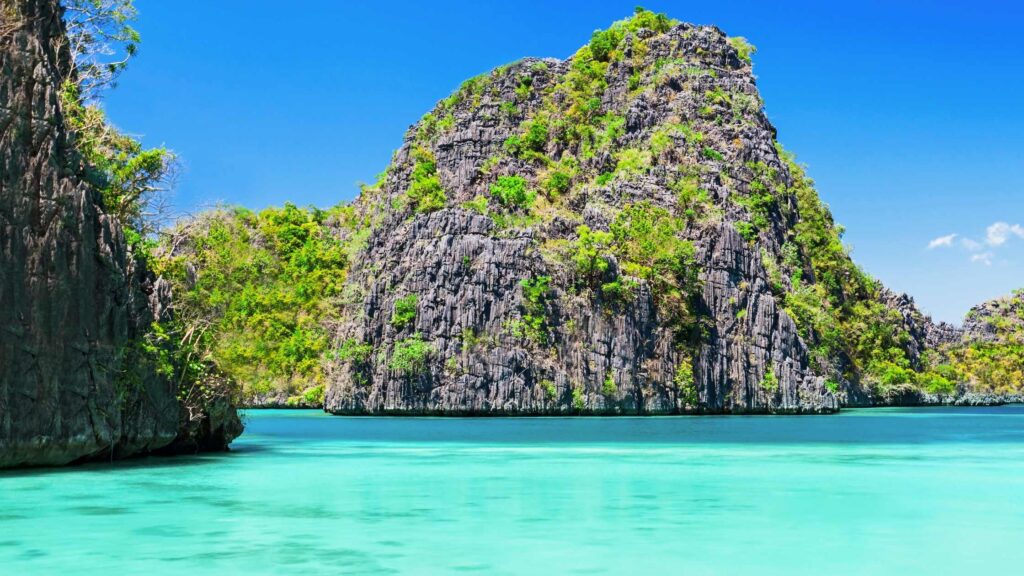
There are two seasons in the Philippines: dry and rainy. You would want to avoid travelling during the rainy season, and this season often starts in August and ends in late October or early November.
The best time to visit is from November until February when the temperature is more relaxed. From March until June, it gets scorching hot.
- When is the summer: March to May
- When is the typhoon season/winter season: August to October
- Biggest national holidays: National Heroes’ Day (last Monday of August), Bonifacio Day (November 30), Rizal Day (December 30), Holy Week/Easter (between mid of March or mid of April, can last up to 7 days)
PHILIPPINES TRAVEL GUIDE FOR SECURING A VISA
No visa is required for foreign travellers in the Philippines for a maximum 60-day stay. But travellers must provide a return ticket and a passport.
This passport must be valid for at least six months from arriving in the Philippines. You can extend your visa by visiting any immigration office.
WHAT SHOULD BE YOUR DAILY BUDGET – PHILIPPINES TRAVEL GUIDE FOR MANAGING YOUR EXPENSES
The average cost per day for travel in the Philippines will vary according to where you are staying.
If you stay in big cities, your average daily cost will go up compared to when you are in rural areas.
It would help if you prepared your peso in cash for every transaction to avoid inconveniences.
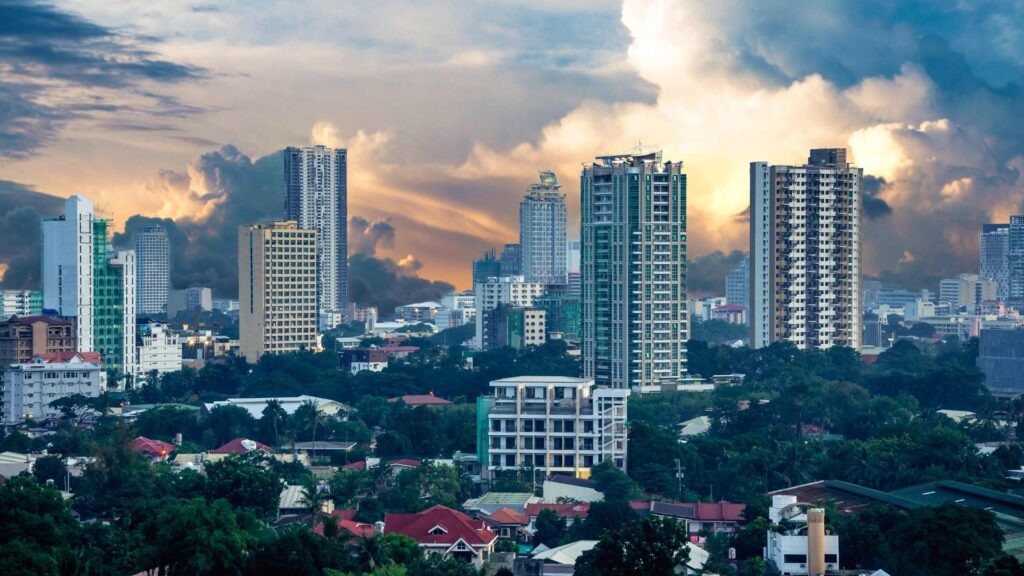
Many accommodations, dining, and transportation options would facilitate budget travel .
Accommodation is significantly more expensive , but lower quality in the Philippines compared to its neighbouring Southeast Asian country.
The Philippines is still one of the cheapest countries to backpack in South East Asia.
- On the budget: $30-$45
- In the mid-range: $50-$80
- On luxury: $90-$150
PHILIPPINES TRAVEL GUIDE FOR PACKING
When you travel to the Philippines, you need to pack lightweight clothes.
The days are sweltering and sunny and, in some cases, humid. It can still get humid even at night (especially in summer).
When packing for a trip to the Philippines, it’s best to bring breathable and lightweight clothes.
Unless you travel during the rainy season, you might want to pack light fabric such as cotton or linen, and it will help keep you cool during your stay.
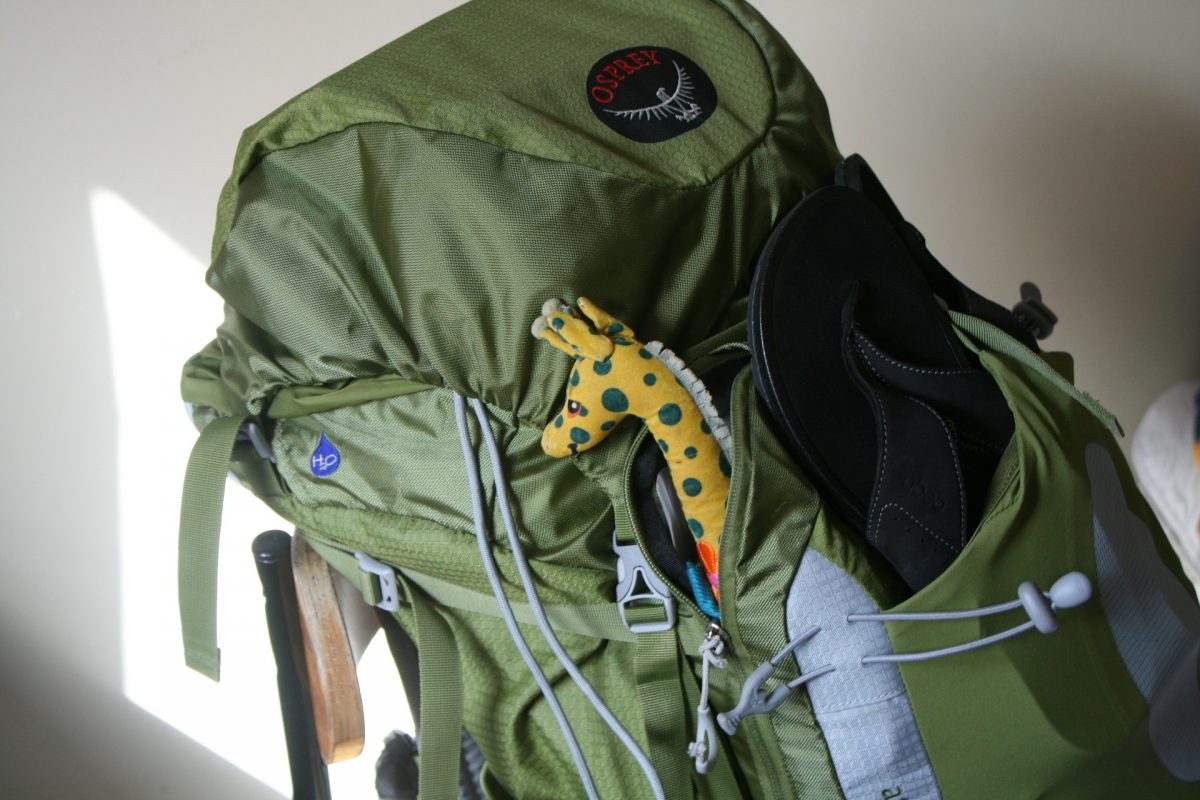
HERE ARE SOME OF THE THINGS I RECOMMEND ADDING TO YOUR TRIP.
Female Packing List
- Three shorts – Carry 1 to 3 shorts, a mix of loose, denim and athletic shorts.
- Four dresses – Carry light weighing cotton dresses , which go just up to the knees or below. Maxi and midi summer dresses in vibrant colours would do the job.
- One pair of jeans
- Two skirts – Skirts are another great fashionable option to team up with cute tops. Avoid skirts that are too short or above your knees if you plan to visit temples.
- 5 T-shirts & 2 Tank Tops – Have a mix of regular cotton t-shirts with one or two having long sleeves along with two tank tops for indoors and hot weather
- One pair of cotton leggings – Could be used as an alternative to jeans.
- One cotton trouser – You can buy them in SE Asia, which are very cheap.
- 1 Cardigan – One multi-purpose light weighing cardigan .
- 1 winter jacket – Beneficial if you are traveling in the north amidst the mountains and also from high AC.
- 2 Bikinis/swimsuits – You’ll need these on the beaches and islands, even if indulging in water sports.
- 1 Rain jacket – Carry one lightweight raincoat or a poncho
- 4-5 pairs of socks – Carry ankle-length and high-length woollen socks that are easy to dry and don’t smell! I would recommend these.
- 1 Sarong or lightweight travel scarf
- 1 lovely hat for protection from the sun and to look cool
- One microfibre travel towel
- Two polaroid sunglasses (one as a backup)
PHILIPPINES TRAVEL GUIDE – THE BEST PLACES TO VISIT
The Philippines is known for its paradise beaches and gorgeous islands.
These are reasons why tourists flock to the country every year. But the Philippines also offer diversity in the things you can see or do.
You can visit many historical sights and attractions to learn about its storied past.

At the same time, water activities are one of the best features of the Philippines. You can go diving, snorkelling, and sign up for boat tours.
It’s so easy to spend two weeks in the Philippines or even go for a month, as many visitors do.
Your trip will include hiking, enjoying crystal clear water, and learning about its fascinating history.
As the capital city of the Philippines, Manila is also one of the oldest cities in the world, not just in the Philippines. It is a bustling metropolis filled with skyscrapers and modern architecture.
Manila is home to various attractions that offer both the old and new mix. It is also where the country’s busiest international airport is located – the Ninoy Aquino International Airport.

Location – Manila is located on the eastern shores of Manila Bay, with the Pasig River flowing through the city’s centre.
Getting there – There are many non-stop flights from various parts of the world to the Ninoy Aquino International Airport. You can also get to Manila via bus from other provinces outside Metro Manila.
There are numerous departures every day that will take you to the city.
Top attractions – Intramuros, Manila City Hall, Quiapo Church, Rizal Monument, Anilao Beach, Arroceros Forest Park.
How long to stay – 2-3 Days
As the second central metropolitan area in the Philippines, next to Manila, Cebu is known as the “Queen City of the South”.
It is a favourite tourist destination for domestic and international travellers alike. This major island in the Philippines consists of 7 cities and six municipalities.
It serves as the Central Visayas region’s centre for commerce, trade, business processing services, tourism, and heavy industry. It is also known for its gorgeous beaches and world-class dive sites.
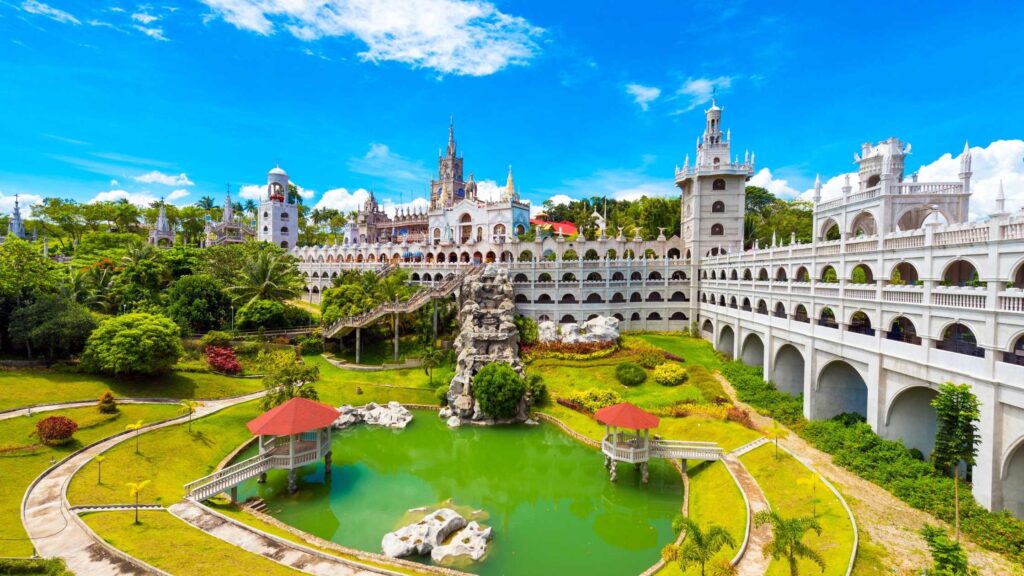
Location – Cebu is the main metropolitan area of the Central Visayas region .
Getting there – To get to Cebu, you can take a flight via Mactan-Cebu International Airport . There are also daily flights from Manila for those who book a connecting flight.
Since Cebu is an island, you can also get to it via ferry from neighbouring islands such as Bohol.
Top attractions – Lapu-Lapu Shrine, Magellan’s Cross, Cebu Taoist Temple, Bantayan Island, Malapascua Island, Sinulog Festival
How long to stay – 3-4 Days
Where to stay – All types of accommodations, ranging from hostels to apartments and seaside resorts are available. Check out the options here .
Known as the Land of Promise, Davao is also the fruit basket of the Philippines, and Davao is a haven for natural abundance.
It is predominantly agricultural land, so raw materials and fruits are widely available.
Aside from fruits, Davao is abundant in biodiversity and natural resources.
It is also part of why Davao’s tourism industry has been gaining traction over the last few years.
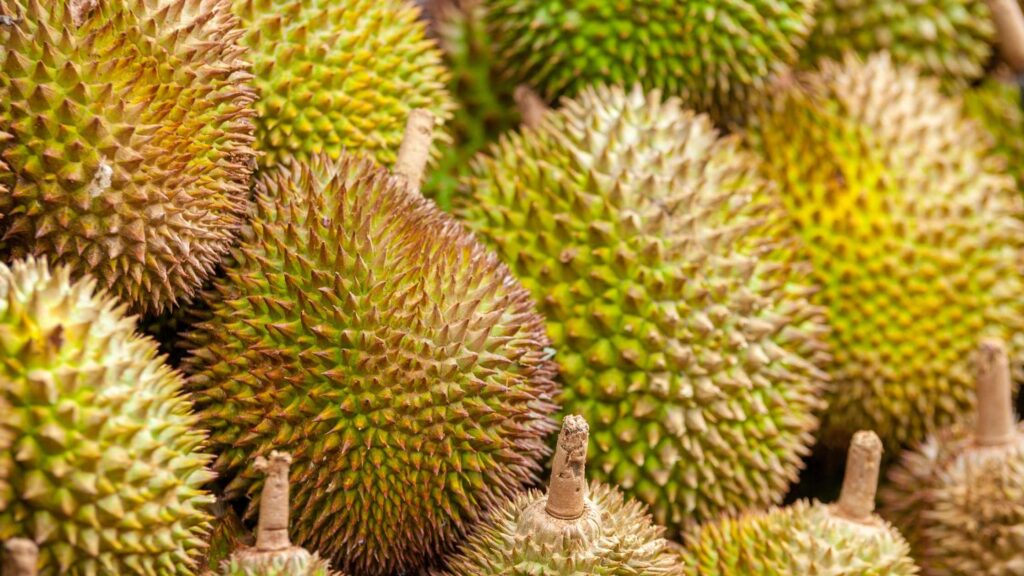
Location – Davao City is located in the southeastern portion of Mindanao island and west of the Davao Gulf.
Getting there – The Francisco Bangoy International Airport is the main international airport in Davao. To get here, you can book flights to this airport as there are many direct international flights from Hong Kong, Singapore, and Thailand .
You can also travel to Davao via bus if you are travelling from other parts of Mindanao.
Top attractions – Mount Apo , Eden Nature Park, Samal Island (filled with many beaches such as Canibad, Kaputian, or Isla Reta), Davao Crocodile Park
How long to stay – 2-3 Days
Where to stay – You can choose from budget hotels to BNB’s at affordable ranges. Find out more here .
Another province in the Central Visayas Region of the Philippines is the beautiful island of Bohol. The province consists of the main island and a few other smaller islands.
It is best known for its diving sites and gorgeous beaches like Cebu.
It is also a favourite tourist destination among locals and foreigners, especially those seeking out the country’s best beaches. It is home to various unique geological formations and coral reefs.
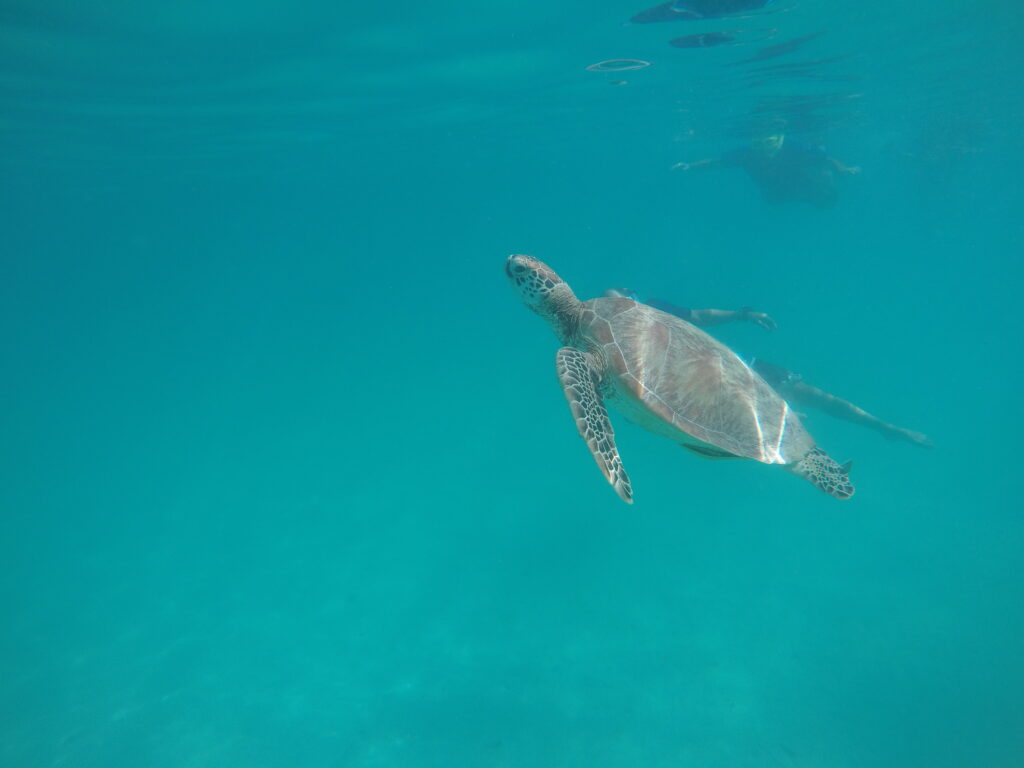
Getting there – The newly opened Panglao International Airport is the best way to access Bohol from various parts of the world.
There is also another airport on the island, which is the Tagbilaran Airport.
If you travel from other parts of the Philippines, you can also reach Bohol via boat or ferry (those coming from Cebu).
Top attractions – Chocolate Hills, Hinagdanan Cave, Panglao Island , Alona Beach, Loboc River
As one of the most popular tourist destinations in the Philippines, Palawan is the spot for snorkelling and diving.
It is also abundant in gorgeous beaches and natural attractions. You will have to use ferries and boats to get from one island to another.

You also don’t want to miss visiting Puerto Princesa underground river, going to the best location for diving, and exploring the Twin Lagoons and Barracuda Lake.
Location – It is located in the westernmost portion of the Philippines in the province of Palawan.
Getting there – Major airlines such as Cebu Pacific and AirAsia offer daily flights to and from Puerto Princesa from Manila or Cebu. If you are travelling from Manila, it is also possible to get to Puerto Princesa via boat via SuperFerry with weekly trips.
Top attractions – Puerto Princesa Subterranean River, Coron, El Nido, Port Barton
Located within the mountainous areas of Luzon , Baguio City is the summer capital of the Philippines, specifically the province of Benguet.
This city is situated 4,810 feet above sea level, so Baguio City maintains a cool temperature all year round.
Many locals travel to Baguio during summer to escape the heat. It is also known as the City of Pines because the tropical pine forest ecoregion provides the perfect conditions to grow pines and moss trees.

Location – Baguio is located within the mountain province of Benguet.
Getting there – There is no airport in Baguio City, and the best way to get here is via bus or car. If your jump-off point is Manila, it will take 4-5 hours (when traffic is light).
Top attractions – Burnham Park, Mines View Park, Strawberry Farm, The Mansion, Baguio Cathedral, Baguio Botanical Garden
How long to stay – 2-3 Days
OTHER RECOMMENDED OPTION
If you want to get away from the main destinations to experience Spanish culture and heritage, one of the fun places to visit is Vigan city, Ilocos Sur .
For those interested in getting glimpses of the past, including pretty traditional homes, Vigan City, a Unesco World Heritage site, is the perfect spot.
The easiest way to get to Vigan City is by flying from Manila to the closest airport at Laoag.
PHILIPPINES TRAVEL GUIDE FOR WHAT TO EAT
Filipino cuisine isn’t as famous as other cuisines in Southeast Asia, such as Thai or Vietnamese cuisine. But if you give it a chance, you will find out why celebrity chef Andrew Zimmern called it the “next big thing”.
When you travel to the Philippines, sampling one of many Filipino delicacies is something you must add to your itinerary.
Discover what dishes are a must-try during your stay.
If there is one dish that Filipino cuisine is known for worldwide, it’s adobo. Everyone in the Philippines loves adobo!
There are also many regional variations to the adobo recipe, which makes it fun to try them when you visit other parts of the country.
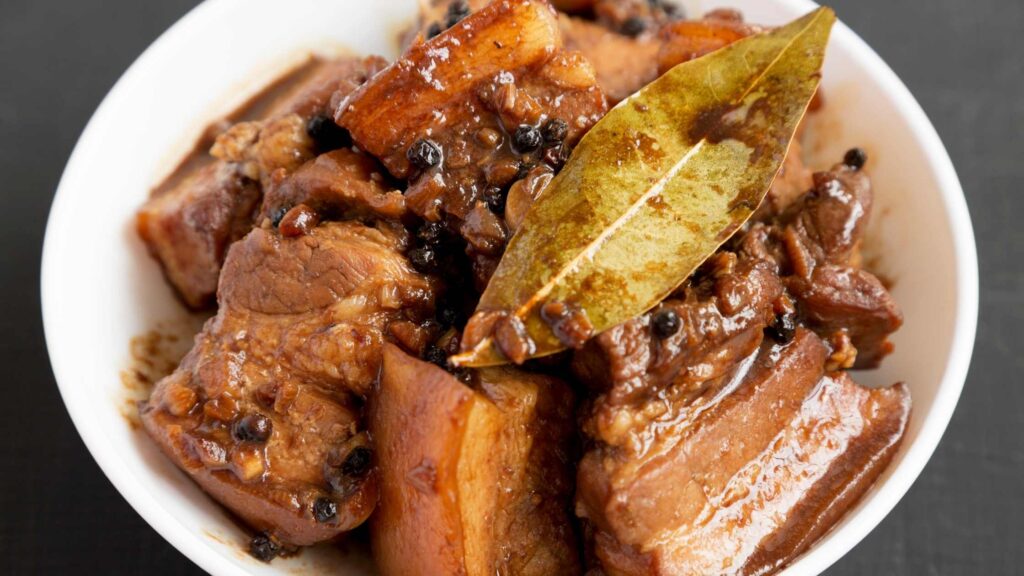
It can be made with chicken, pork, or a combination. The recipe uses soy sauce and vinegar as the main base for the sauce, along with bay leaves and pepper.
The dish is cooked for several hours to ensure the meat is fork-tender.
Where to try – Wooden Spoon in Manila, or Via Mare in Manila
How much does it cost (usually) – 49 to 150 Php (1-3 USD)
Kare-Kare is another homemade dish that is popular in the Philippines. This dish consists of a rich stew made with peanut sauce and oxtail.
But if oxtail is unavailable, other meatier beef cuts are used for this recipe. It is often served with fermented seafood paste (known locally as bagoong).

Where to try – Pampanga, or restaurants like Ombu Kusina in Tomas Morato or Abuela’s in Legaspi Village
How much does it cost (usually) – 100-300 Php depending on the serving size (2-6 USD)
As an iconic bar food served in the Philippines, pork sisig is often consumed during drinks at a bar.
This recipe originated in Pampanga, which is also known as the Culinary Capital of the Philippines.
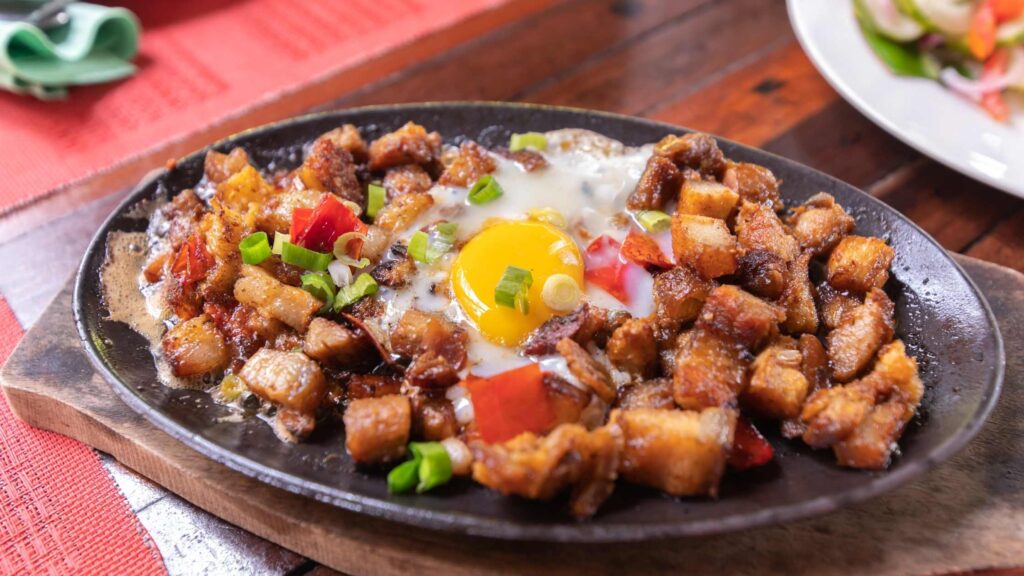
This dish is served on a hot plate and is made with a mixture of chopped pig’s face, ears, and liver, among other internal organs. It is also served with a drizzle of calamansi juice and egg.
Where to try – Pampanga, Razon’s of Guagua, Pampanga, and Gerry’s Grill.
How much does it cost (usually) – 70-250 Php (1.4-5 USD)
HALO – HALO
As the most popular dessert recipe in the Philippines, the Halo-Halo can chill.
It is called such because this frozen dessert is made with various ingredients, including tapioca and beans (like garbanzos, kidney beans), macapuno, and sweetened plantains.
It is an excellent choice of dessert for vegans because it is filling and makes with plant-based ingredients.
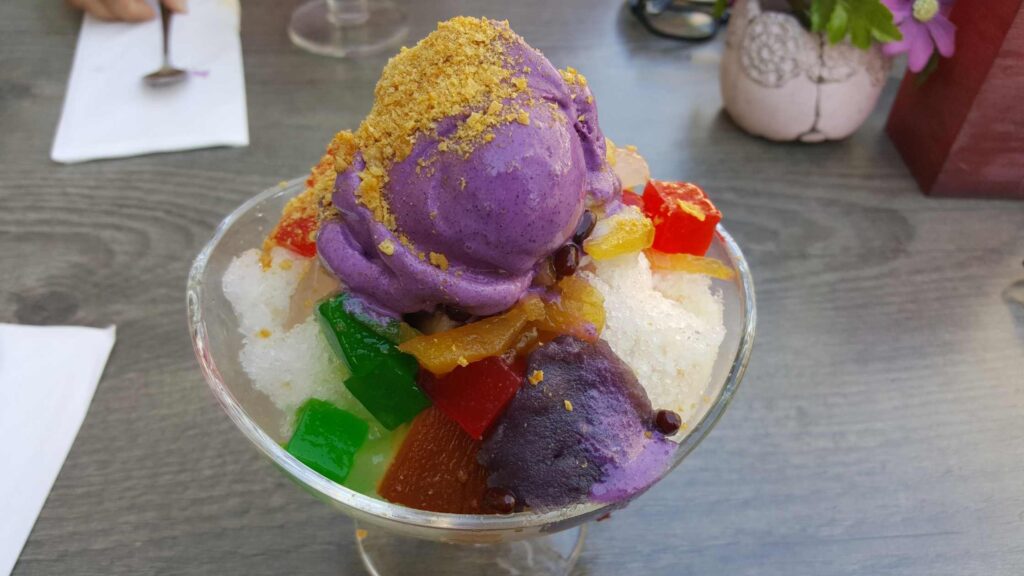
It is also the perfect dessert to quench your thirst in the heat of the Philippines.
Where to try – Aling Foping’s in Davao and Razon’s of GuaGua
How much does it cost (usually) – 90-150 PHP (1.8-3 USD)
PHILIPPINES TRAVEL GUIDE – FINAL THOUGHTS

The Philippines is composed of thousands of islands that form the archipelago, which explains why there is so much diversity on each island.
It is enough incentive to try and explore as many islands as possible. You will be able to experience plenty of unique experiences or sample individual tastes.
When visiting the Philippines, you will always feel like you are somewhat in a place where East Asia meets Latin America because of the Spanish colonisation.
- Recent Posts
- The Ultimate Bucket List for Adventure Travelers - September 13, 2024
- Backpacking in the USA: Top Tips to Know - May 26, 2024
- Exploring the Mystical Land of Ladakh - May 26, 2024
Related Posts

10 Best Siquijor Beaches That You Should Check Out

Sumilon Island – A Travel Guide to the Philippines’ Exotic Island

6 Free Things to Do in Manila – Exploring the Capital of The Philippines on a Budget
What a beautiful post – both the photos and imagery, and the writing. Philippines is one of the most beautiful and intriguing cities in the world, and you’ve captured it so well, and with some off the beaten path suggestions.
Write A Comment Cancel Reply
Save my name, email, and website in this browser for the next time I comment.
- SOLO TRAVEL
- ARUNACHAL PRADESH
- HIMACHAL PRADESH
- UTTARAKHAND
- THE PHILIPPINES
- UNITED STATES
- TRAVEL FACTS AND TRIVIA
- WORK WITH ME
Type above and press Enter to search. Press Esc to cancel.

Manila Travel Guide: Everything You Need to Know

Best Time to Go to Manila
- Holiday Season | September to December
- Dry Season | January to April
Climate and Weather
- What to Wear
- How to Get to Manila
- Getting Around Manila
From the Airport
- Public Transportation
- Where to Stay in Manila
Types of Accommodations
Neighborhoods and areas, accommodation highlights in manila, what to see and do in manila, explore intramuros.
- Go Museum-Hopping
- Go on a Food Trip in Binondo
- Shop in the Malls
- Experience the Nightlife in Poblacion
- What to Eat and Drink in Manila
Practical Information and Tips
Safety tips, what to pack, commuting tip, sample itinerary in manila, day 1: intramuros + food tour + museums, day 2: modern manila tour + modern museums + mall of asia + pub crawl.

Visit the bustling metropolitan center of the Philippines, Manila! Read about how to get around, top tourist spots that you should visit, the best places to stay in, and where to eat in this guide.
Manila serves as the center of culture, economy, education, and government in the Philippines . It is the most populous region of the country and one of the most densely populated in the world. It is also the main gateway for international travelers going to the Philippines by flight.
- Find the best Manila trips and experiences
- See cheap flights to the Philippines
When you say “Manila,” it can mean two things. First, it can refer to the City of Manila, the capital of the Philippines. Manila is made up of 16 administrative districts, including Binondo, Ermita, Intramuros, Malate, and Quiapo, among others.
Second, the greater Metropolitan Manila area is also referred to as Manila. It is officially known as the National Capital Region (NCR) or Metro Manila. It is made up of the City of Manila, Makati , Quezon City , Parañaque, Pasay, and Taguig, to name a few.
See our popular Manila Tours & Activities
Okada manila walking tour with foot massage at the sole retreat, poblacion makati street party with snacks & alcoholic drinks, game night at bgc with snacks, beer & bar activities.
It can be a bit confusing. Make sure to do your research beforehand, so you don't end up staying in an area far from the main attractions you want to visit.
In this ultimate guide, we’ll refer to Manila as not just the City of Manila but also Metro Manila and the other big cities in the Philippines' bustling urban center. You’ll learn about Manila’s top tourist spots , the best way to get around, where to stay, and where to eat.

But if you want to experience Manila's outdoor attractions fully, take note of the months with the sunniest days.
Holiday Season | September to December
The best months to go to Manila are during the -ber months of September, October, November, and December, when the city is full of festive lights and Christmas decorations.
It is also cooler during these months, which is great if you’re planning to do a lot of walking around. However, traffic can get worse than usual during the Christmas season. It is also during this time when a lot of people flock to the malls for their holiday shopping.
Dry Season | January to April
If you have a lot of outdoor destinations included in your Manila itinerary, it's best to explore during the dry months of January to April.
While there is rainfall throughout the year in Manila, January to April has the least chance of rain. Make sure to bring water bottles, caps, and an umbrella with you if you're planning to do a lot of walking in Manila.
During the dry season, the temperature in Manila is warm. Take note that the hottest months in Manila, are typically from April to May, with an average daily high temperature above 33°C.
If you plan to visit during these months, always bring a bottle of water to keep yourself hydrated while exploring Manila. Additionally, make sure to check for weather updates and the forecast on the days of your trip.
Here's an overview of the average monthly Manila temperature and rainfall

Source: NOAA

Source: Weather Spark
What to Wear
When visiting Manila, expect a tropical climate. So dress in casual breathable clothes, especially during the dry months. If you're in the malls or outdoors at night, especially during the holiday season or rainy season, it's best to bring a light jacket with you to keep you warm.
How to Get to Manila

Manila is accessible from both international and local destinations by flight. You will be landing in one of the four terminals of Manila Airport , depending on the airline.
- Dubai to Manila flights
- Singapore to Manila flights
- LAX to Manila flights
- Cebu to Manila flights
- Davao to Manila flights
- Tacloban to Manila flights
- Iloilo to Manila flights
- Bacolod to Manila flights
- Legazpi to Manila flights
- Boracay to Manila flights
- Bohol to Manila flights
- Read our guide on airports in the Philippines
Note that there are four terminals in Manila, which are not connected by subway systems. It can be confusing for many first-time visitors, so make sure to find out which airport you're landing in before making transfer arrangements.
See our popular Manila Transfers
Private manila airport (naia) transfer to philippine hot air balloon festival new clark city tarlac, private transfer between manila airport (naia) and any hotel in makati city, private airport transfer to any manila city hotel, getting around manila .

The Ninoy Aquino International Airport Terminal 1 is located in Parañaque City, while Terminals 2, 3, and 4 are in the neighboring Pasay City.
The metro or subway system does not connect these airport terminals at the moment. The only way to get there and out is via private transport, shuttle buses, or taxis.
There is a free shuttle bus going to all terminals that runs every 15 minutes, depending on traffic. Given the heavy traffic in Manila during the day and early evening, it may not be the best idea if you are pressed for time (e.g., if you have a connecting flight with a layover of less than 4 hours).
You can also take the Airport Loop buses from all terminals. It will take you from the airport to Baclaran, Pasay Rotonda, Taft Avenue station of the Manila Metro Rail Transit System (MRT), and Manila Light Rail Transit System (LRT) in Pasay. Taft Avenue is the closest light rail station to the airport. Both MRT and LRT1 have a Taft Station and are connected with each other by a walkway.
Another option is the P2P (Point-to-Point) buses called the UBE Express. Fares vary depending on your destination. These buses run on four fixed routes, stopping at selected hotels and shopping malls, while other buses stop at big bus terminals. Check the P2P bus schedules here .
By Taxi/Cabs
All Manila airports have taxi stands. You can ride the following:
Regular Taxi - White metered taxi/cabs with a fixed flag down rate and per kilometer fee.
Coupon Taxi- Blue-marked white taxi/cabs that are dispatched by airport personnel and charge a fixed price
Yellow Airport Taxi - Metered taxi with a fixed flag down rate and per kilometer fee, but almost double than the regular taxis.
Taxi scams at the airport are common. If the driver shows you a printed list of destinations and their corresponding prices, be warned that those rates are most probably overpriced.
Another red flag is when the driver doesn't use a meter and charges you ridiculous prices. To avoid the headache of getting scammed, use the official taxis (coupon taxis and yellow airport taxis).
When someone outside the arrival area offers you a ride, say no. Often, these drivers (or their middlemen) will overcharge you. They might offer to help you with your bags, keep a tight grip on your belongings and say no, or ignore them.
By Car Booking App
Another recommended way to get out of the airport and into the city is through Grab, a ride-hailing app similar to Uber (Uber is no longer operating in the Philippines).
Grab offers GrabTaxi (accredited regular metered taxi), GrabCar (private), and GrabShare (carpooling). Download the Grab App before arriving in the Philippines in case the airport WiFi fails.
By Car Rental
There are car rental services in Manila that you can avail of, including Manila van rentals , SUV rental in the Philippines , and luxury car rentals in the Philippines . Self-drive car rentals in the Philippines like budget car rental in the Philippines are also available in all Manila airports (except Terminal 4). Just make sure you have the requirements to rent a car in the Philippines . You can book a car rental in Manila in advance so you can pick up the car at the airport or their designated pick-up points in Manila.
If you're driving in Manila, we highly recommend using GPS navigation apps like Google Maps and Waze . Traffic in Manila needs a lot of patience and excellent driving skills, so make sure to prepare yourself if you're driving here for the first time.
Public Transportation

The fastest way of getting around is via train. Three lines are operating in Manila: Manila Metro Rail Transit (MRT), Light Rail Transit 1 (LRT1), and Light Rail Transit 2(LRT2). The other modes of transportation are the tricycle and jeepney, both unique to the Philippines.
You can also hail a taxi or use car booking apps or a motorcycle booking app if you want to explore Manila.
MRT and LRT
The Manila Metro Rail Transit (MRT) and Light Rail Transit (LRT) run across major roads in Manila and connect Manila's north and south areas. The MRT traverses Epifanio de Los Santos Avenue (EDSA), while LRT1 and LRT2 have routes crossing Pasay, Manila, Caloocan, and Quezon City.
If your hotel is somewhere in the city of Manila, Makati, Pasay, or even Quezon city, you can ride the MRT or LRT. Be warned though, that the MRT and LRT are very crowded during rush hour (7 AM to 9 AM and 5 PM to 9 PM on weekdays).
However, if you travel during the off-peak hours, the MRT and LRT offer the quickest way to slice through Manila's notorious traffic jams.
You can purchase single-journey tickets/cards (one way) or stored value cards (reloadable BEEP cards) in any station in MRT, LRT1, and LRT2. Reloading can be done at any station, as well.
The single-journey tickets are exclusively used in each line where you purchased them, while the reloadable BEEP cards can be used in all three lines. If you'll be riding the MRT and LRT a lot while in Manila, purchasing a BEEP card is highly recommended.

Source: Light Rail Transit Authority
MRT runs along EDSA, from Taft Avenue to North Avenue in Quezon City. This line gives travelers access to Roxas Boulevard, Makati, Mandaluyong, San Juan, and Quezon City. You can take this line if you want to explore Makati tourist spots and Quezon City attractions.
LRT1 and LRT2
There are two LRT routes, LRT1 and LRT2. LRT1 is the first among the three light rails in the Philippines, while LRT2 is the newest. A walkway in Doroteo Jose station connects LRT1 and LRT2.
LRT1 runs from Baclaran to Monumento. It lets you explore areas in Roxas Boulevard or Pasay area, Makati, Manila, and Caloocan. Beyond Caloocan are mainly residential areas not frequented by travelers.
LRT1 cuts through most of the city of Manila, which makes it the best transit to ride to get to popular Manila attractions such as Binondo, Intramuros, and Rizal Park.
LRT 2 has the shortest route. It runs through Metro Manila's East to West areas. It starts in Manila and ends in Marikina City, with stops along Quezon City and San Juan City. LRT 2 may be the shortest line, but it can still take you to Manila tourist spots. You can ride the LRT 2 to get to Binondo and San Sebastian Church in Intramuros, which is the only all-metal building in the country.

Jeepneys have become an iconic symbol of Philippine culture and art. These can accommodate up to 20 passengers, depending on the size of the jeepney. Riding these open-aired vehicles in the streets of Manila offers an interesting experience for first-time visitors.
You can hail these anywhere on most Manila roads, but take note if there are designated loading and unloading stations in the area. Each jeepney has a sign on its windshield that indicates its last stop and 1 or 2 other significant stops along its route. Find out first which route you need to take before riding a jeepney.
Payments are handed to the driver at the front during the ride. If you're seated at the far end of the jeepney, the other passengers can pass it to the driver for you.
Locals say "Bayad po, " (Here's my payment) when handing the money to the driver. It is so the driver can compute how much your fare is since it varies on your pick-up point and destination.
When you're about 5 to 10 meters away from your stop, locals will say "Para po!" (Please stop) to notify the driver to slow down and stop at the nearest unloading station.
Motorized tricycles, or simply tricycles, are the local form of the auto-rickshaw similar to Thailand’s tuk-tuk. These public utility vehicles ply a set route in inner roads. They are usually found in terminals where passengers line up to wait for their turn to board one.
These can also be hired like taxis in some areas if their route allows it. Built in a variety of styles that differ from city to city, these are usually made locally by building a sidecar affixed to a motorcycle. These can usually accommodate 2 to 4 passengers only.
Taxi or Car Booking App
For those who only have a short time in the city and want a hassle-free journey, the best option is to take a taxi or book Grab using the Grab App .
While Grab is usually more expensive than riding jeepneys or buses, these can ensure you can get around safely and in comfort. You don't have to do multiple transfers, which is convenient for travelers coming from and going to the airport.
Motorcycle Booking App
More adventurous travelers can choose to book with the Angkas app , which is similar to Grab Motorbike in other countries like Vietnam.
If you are traveling solo, you can use the app to hire a rider to pick you up and take you to your desired location. It is especially significant if you are in a hurry since motorcycles can navigate through heavy traffic easily.
Where to Stay in Manila

Photo from the Philippine Department of Tourism
Manila is made up of multiple cities, and traveling from one city to another can be time-consuming, especially during rush hour. It's important to plan where your home base will be in Manila so you can easily go to the attractions included in your itinerary.
This section will run you through the common types of accommodations you'll find in Manila for your staycation in the Philippines . Whether you're on a tight budget or you're someone who prefers to spend more on luxurious accommodations, it's always better to plan before traveling. Whichever you prefer, you're bound to find what you're looking for in a metropolis as big as this one.
It's essential to research Manila hotels and other types of accommodations before your visit. Be sure to check if the property accommodates the number of people you are traveling with. If you're looking for budget hotels in Manila, vacation rentals, or luxury accommodation, Manila has them all.
Whether you're staying for work or leisure, there are various hotels in Manila , ranging from budget to luxury. Luxury hotels in Manila offer amenities such as a swimming pool and a spa, while budget hotels in Manila provide basic amenities and furnishings. Make sure to follow the check-in procedure to avoid getting an extra charge.
- Crimson Hotel Manila package
- Ascott Bonifacio Global City Manila package
- Ascott Makati package
- Somerset Millennium Makati package
- Somerset Central Salcedo Makati package
- Somerset Alabang Manila package
- Citadines Salcedo Makati package
- Citadines Bay City Manila package
- The Belamy House Makati Manila hotel package
- City Garden Hotel Makati package
Vacation Rentals
If you're looking for privacy, renting a private condominium or house within Manila will work best. There are several vacation rentals throughout Manila, from Pasay City, Makati City, Mandaluyong City to Quezon City. It's better if you're in a group so you can share the expenses.
Perfect for solo backpackers, hostels in Manila usually offers dorm-type rooms and single rooms but with shared bathrooms. You can find several hostels in Makati. Hostel common areas are ideal for meeting new people, and some even have rooftop bars where you can chill at night.
Location is a significant factor when booking your hotel in Manila. The ideal location would either be one nearest to the airport or where most of the activities you plan will be concentrated around.
However, if you are planning to stay a little longer, then you should have ample time to explore Manila thoroughly. Your choice of where to book your accommodation depends on your budget and itinerary.
For business and leisure travelers who want modern conveniences, creature comforts, and luxury hotels, the best place to stay would be in the central business districts or CBDs. Manila has several central business districts to choose from, including Makati, Bonifacio Global City, and Ortigas Center.
Aside from the CBDs, cities like Quezon City, Mandaluyong City, Pasay City, and the city of Manila also offer an excellent selection of quality accommodations.

There are luxury hotels and budget hotels in Manila that are near the attractions mentioned above. The best views are in the hotels lined up at Roxas Boulevard, where you are treated to breathtaking sunset views of Manila Bay.

Pasay City in itself also offers fascinating attractions like The Dessert Museum, Lakbay Museo, and the Upside Down Museum. It also has entertainment hubs like Resorts World Manila, and the amusement park, Star City. If you want to go shopping, you can find the Mall of Asia, the fourth largest shopping mall in the Philippines, in Pasay City.
- Book a 2-hour Dessert Museum Ticket to 8 Themed Rooms & Complimentary Dessert
Makati CBD

Makati is a melting pot of international affairs and is quite famous for its multicultural lifestyle. Makati It is also known for its array of Makati hotels and luxury malls, most of which can be found in Makati's prime shopping and entertainment hub, Ayala Center.
Many international retail brands have made their home in department stores in Makati, located in Glorietta Malls and Greenbelt Malls.
Makati Poblacion
The hotels in Makati aren't just centralized in the CBD. You can also find accommodations in the revitalized hip neighborhood of Poblacion. This area boasts a vibrant nightlife that attracts the millennial workforce of Manila.
- Book a Sentro Spa massage in Manila
It is also where most backpacker hostels in Makati are located. A few minutes walk or drive from Poblacion will take you to Rockwell Center, most known for being the location of the Powerplant Mall.
It is reputed to be the best area in Manila for first-time visitors, since shops, nightlife, and sights are easily accessible. It also offers a wide range of accommodation options, from budget hostels to upscale hotels in Makati .
Bonifacio Global City

Additionally, BGC has several malls like the Market! Market!, SM Aura, and Uptown Mall. Bonifacio High Street is BGC's central retail and entertainment hub. It boasts open-air shopping blocks with several high-end retail outlets and features a diverse array of restaurants that offer international and local cuisine.
BGC is also home to upscale residential condominiums. So, if you’re looking for plush vacation rentals or luxury hotels in Manila that are close to restaurants, clubs, and shopping malls, then look no further than BGC.
Quezon City

Additionally, restaurants in Quezon City have become favorite eating spots for food lovers everywhere. Maginhawa Street is a well-known street where you’ll find some of the best restaurants in Manila . It has become a food haven that offers various delicious meals; from local cuisine to international gastronomical treats. If you’re into food trips, then book your accommodation in Quezon City.
Depending on your budget and preference, it's essential to note the following: location, price, and service. While it's okay to stay in a cheaper place, one should consider the number of people staying. If you're in a group, it might be better to rent a private house or stay at Manila hotels that offer family rooms.
Budget Accommodations
Manila has many options to fit the needs of backpackers or travelers who’d rather spend more on the sights than on the hotel. These two come highly recommended among budget-conscious travelers.
Lub D Hostel (Makati City)

Lub D Hostel in Makati Avenue is the largest hostel in Manila. This hostel prides itself on its casual and friendly vibe that inspires you to mingle with its local and international guests.
They offer mixed dorms, ladies' dorms, private rooms, and family or group rooms. Lub D Makati also boasts a stunning rooftop restaurant, a deli bar, a cafe, and even a co-working space. Other facilities include a 24-hour front desk, laundry facilities, a TV room, and meeting rooms.
Red Planet (Binondo, Manila and Poblacion, Makati)

Photo by Red Planet Hotels Philippines
Red Planet is a hotel chain with branches all over Manila. Red Planet Binondo and Poblacion are strategically located in the tourist hotspots in Manila. Red Planet Binondo in Manila is situated near the famous Chinatown and other historical places in Manila.
Red Planet Makati is right in the center of Poblacion, Makati’s lively nightlife hub. Red Planet boasts minimalist and modern private rooms at affordable prices. Although their rooms have basic amenities, you can expect maximum comfort during your stay.
Mid-range Accommodations
Manila is home to several 4-star and 5-star hotels offering world-class facilities and services. If you're looking for all the creature comforts of a hotel but still want bang for your buck, you should stay in this type of accommodations.
The Manila Hotel (Manila)
The Manila Hotel in One Rizal Park is a historic 5-star hotel that was built in 1912. This hotel showcases the elegance of authentic Filipino interior design in its 570 rooms and suites.
The Manila Hotel boasts a posh deli, an outdoor pool bar, a lobby lounge, and five high-end restaurants, including Cafe Ilang-Ilang, one of the best buffets in Manila , that offer a wide array of local and international cuisine. They also have a swimming pool, a garden area, a spa and sauna, and a gym equipped with state-of-the-art technology.
Luxury Accommodations
The Entertainment City, an area in Parañaque, is a gaming and entertainment complex. It is a top choice for business or luxury travelers as it is also near the airports. Here are two highly-recommended hotels in the area.
Okada Manila (Parañaque City)

Photo by Okada Manila
Okada Manila is a 5-star casino resort and hotel complex that offers a world-class luxury experience. Aside from their stunning private rooms and suites, they also have an outdoor swimming pool, a spa and wellness center, restaurants, an in-house casino, an indoor beach club, a day-to-night club, art galleries, meeting facilities, and retail shops.
City of Dreams - Nobu Hotel Manila (Parañaque City)
City of Dreams is the first-of-its-kind boutique Nobu Hotel in Asia. This top-notch hotel offers world-class facilities and luxurious amenities. They have an in-house casino, a fitness center, an outdoor swimming pool, a spa, and top-notch rooms and suites. The City of Dreams also boasts an excellent selection of Japanese cuisine.

For first-time visitors in the Philippines, the best thing to do is zero in on the famous historical places in Manila. Going on a museum tour and a food tour should be on top of your list of things to do in Manila. Whether it's history, food, culture, shopping, or nightlife you're interested in, you're sure to find something fun and unique to do in the metro. Here are a few of our top picks:
Video by the Philippine Department of Tourism
Intramuros is the oldest district and historic core of Manila. Known as the "Walled City," this landmark walled area within the modern city was the seat of government and political power when the Philippines was still under Spanish rule. What makes Intramuros fascinating is that it is the only remaining district in Manila where visitors can even see Spanish-era architecture.

- Book Intramuros tours
- Check out this San Agustin Church to Manila Cathedral tour
- Manila & Makati hop-on hop-off bus day pass
- Manila hop-on hop-off bus day pass
You will also get to visit the historic Manila Cathedral, which is the very first cathedral in the Philippines. You will also get to see Fort Santiago, one of the oldest Hispanic stone fortresses in the country, and the San Agustin Church, which has been rebuilt three times due to war and natural disasters and is part of the Baroque Churches of the Philippines that are collectively deemed as UNESCO World Heritage Sites . You won't run out of things to do in Intramuros .
Another option is to ride a horse-drawn carriage that will take you around the highlights of Intramuros.
See our popular Intramuros Tours
Manila intramuros half-day shared walking tour with guide, manila intramuros shared half-day walking tour with guide, 3 manila cities shared tour to top instagrammable attractions with guide & transfers, go museum-hopping .

It is divided into several sections: Fine Arts, Anthropology, Natural History, and a Planetarium, all located within the same complex in Rizal Park or Luneta Park. In the same area is where you can also find the Rizal Monument, a memorial for the Philippines' National Hero, Jose Rizal.
You can also check out The Metropolitan Museum of Manila. It is located in Bonifacio Global City in Taguig. The Metropolitan Museum boasts an impressive collection of modern and contemporary visual arts by local and international artists.
Besides historical museums and art galleries, Manila also offers unique exhibits such as The Dessert Museum, Lakbay Museo, and the Upside Down Museum in Pasay.
- Read more about the best museums in Manila
Go on a Food Trip in Binondo

Join a Binondo tour and get ready to chow down on Chinese and Filipino delicacies like dumplings, pork chop noodles, xiao long bao, lumpia, oyster cake, kampong, stir-fried tofu, and Wintermelon tea.

See our popular Binondo Tours
Manila binondo shared walking food tour with guide, 8-day cebu & bohol islands package to the best nature & historical sites from manila city, shop in the malls .
If you’re looking for a place where you shop, dine, and find entertainment in air-conditioned comfort, malls are the best places to go to in Manila. The SM Mall of Asia (MOA), in particular, a shopping mall in Pasay, is the most popular spot for foreign and domestic travelers who like to go on a retail spree.
MOA is the fourth largest shopping mall in the country, and it is home to numerous restaurants, bars, boutiques, cinemas, and an IMAX theater.
There's also a seaside esplanade and baywalk that offers a stunning view of Manila Bay during sunset. The Mall of Asia Eye, a 55-meter (180-foot) tall Ferris wheel by the bay, offers a spectacular view.
Another must-visit mall in Manila is the Venice Grand Canal Mall, also known as the Venice Piazza in McKinley Hill. Aside from being in an upscale neighborhood and having an impressive array of retail shops, the Venice Piazza is famous for its replica of the Venice Grand Canal.
The mall even has the signature turquoise water and gondolas of the iconic Venetian waterway. If you're looking for beautiful scenery to pose in for an Instagram photo, Venice Piazza is the perfect spot!
Experience the Nightlife in Poblacion
Poblacion, the old downtown area of Makati, has been revitalized into one of the hippest districts in the city. This trendy neighborhood is one of the top places to visit in Makati and is the cultural and entertainment heart of the city, catering to international travelers, ex-pats, and locals.
- Poblacion Makati rooftop hopping
- Poblacion Makati street party
- BGC game night
- Binondo Manila basic photography lessons
- Korean culture experience in Quezon City
Poblacion is also very popular with the backpacker crowd. It is home to many hostels and artsy boutique establishments like Z Hostel, Lokal Hostel, Junction Hostel, and MNL Boutique Hostel.
After sunset, Poblacion transforms into a vibrant club scene where you can do a pub crawl tour. The streetside restaurants, bars, and clubs in the area come to life. Within the vicinity, you can also find high-end shopping retail centers and venues for concerts and special events.
What to Eat and Drink in Manila
One of the best things to do for first-time travelers in Manila is to enjoy traditional Filipino cuisine and culture by patronizing dining establishments that offer a cultural experience. Manila is a foodie haven.
There's no one cuisine that best represents it as a whole since the region is such a melting pot of multicultural lifestyles. Thanks to its diverse community, you can find cuisine from various areas of the Philippines .
Barbara’s Restaurant

Guests can enjoy classic Filipino dishes like kare-kare (peanut sauce-based stew), caldereta (tomato-based meat stew), adobo, lechon (roasted pig), gulaman (grass jelly drink), and palitaw (rice cake). To make your experience more immersive, you will be dining in a beautifully restored 18th-century building that reflects the Spanish colonial period's best architectural design.
While dining, visitors are treated to dance performances from the Spanish era to the folkloric Philippines, including tinikling. The live music makes use of all local Filipino Instruments like rondalla and guitars.

Photo by Locavore Kitchen & Drinks
Locavore serves locally grown and produced Filipino dishes with a unique twist for those who want a more modern take on traditional Filipino dishes. With bestsellers like sizzling sinigang, lechon oyster sisig, and kare-kare wings, this modern and innovative restaurant is an excellent choice for adventurous foodies.
Locavore has several branches around Manila, including in Kapitolyo, Pasig, Taguig, Makati, and SM Mall of Asia in Pasay City.
Islas Pinas
Another place to check out is Islas Pinas, a fiesta-inspired Food Hall in the Double Dragon Plaza in Pasay City near Mall of Asia that features dishes from all over the Philippines.
It aims to bring Filipino cuisine to global prominence by showcasing regional specialties, local home-cooked dishes, and elevated street food in a unique cultural setting.
For a destination as comprehensive as Manila, it can get overwhelming with all the information you need to digest. Before you start planning your Manila trip, take note of these essential practical travel and safety tips for a hassle-free and safe vacation:
Major establishments in Manila accept credit cards. There are also several money changers and ATM throughout Manila. However, it's better to bring enough Philippine Peso (PHP) with you, in smaller bills in 20, 50, and 100 denominations for faster transactions.
Additionally, always carry loose change. They will come in handy when you are riding public transportation or buying food and small items from vendors.
Most Manila locals use Filipino when communicating. The majority of locals can speak and understand English. Make sure to greet the locals with a simple "Hello" to initiate a conversation. Don’t worry, they’re friendly and can accommodate most of your questions.
Watch out for pickpockets when commuting and keep your valuables safe, especially in crowded areas like Cubao, Binondo, and Makati Avenue. If you’re planning to walk alone at night, make sure to keep your bags close to you. Always be aware of your surroundings.
Wear light clothing when going to nature parks, and bring lots of water. It's best to bring a jacket or umbrella with you in case of rain. Don’t forget to bring a small bag when you’re going on a sightseeing trip! It will be more comfortable when you're walking along minor roads, especially if you plan to shop.
The weather in Manila can get quite hot and humid, so be sure to bring drinking water while going around. Although vendors are selling bottled water everywhere, it is best to bring your water bottle to stay hydrated and minimize plastic waste.
Like in most big cities, it’s best not to wear fancy jewelry and carry all your valuables with you when doing sightseeing trips in Manila . Secure all your essential items and money in anti-theft bags.
Make sure to do some research as well on standard costs of fares and other items. Most Filipinos can speak English. Don’t be afraid to ask for help from locals if you need information on the amount paid for jeepney fares or directions if you get lost.

06:00 AM - Arrival at Manila airport
06:30 AM - Taxi ride to the hotel
07:00 AM - Early check-in at the hotel
07:30 AM - Breakfast
09:00 AM - Explore Intramuros
10:00 AM - Intramuros Bike Tour
12:30 NN - Food tour in Binondo
02:00 PM - Museum-hopping at National Museums
05:30 PM - Watch the sunset by Manila Bay
06:00 PM- Dinner at Barbara’s Restaurant in Intramuros
07:00 AM - Breakfast
08:00 AM - Modern Manila tour
11:00 AM - Tour of Dessert Museum and Lakbay Museo
12:30 NN - Lunch at Isla Pinas
02:00 PM - Shop at the Mall of Asia
06:00 PM - Dinner at Locavore
08:00 PM - Pub crawl in Poblacion
Don’t Skip Manila!

- 2-day Manila freediving advanced workshop
- 4-day Manila freediving Zero to Hero program
Discover the many tourist attractions and activities in Manila . Start planning your trip by looking into Manila tours and activities that you can add to your itinerary.
Popular articles

Best Palawan Guide: Top Tours, Where to Stay, How to Get Around

20 Most Beautiful Sandbars in the Philippines: White Sand, Longest, Vanishing

11 Best Santorini-Like Resorts in the Philippines: Near Manila, Cebu, Palawan, Vigan
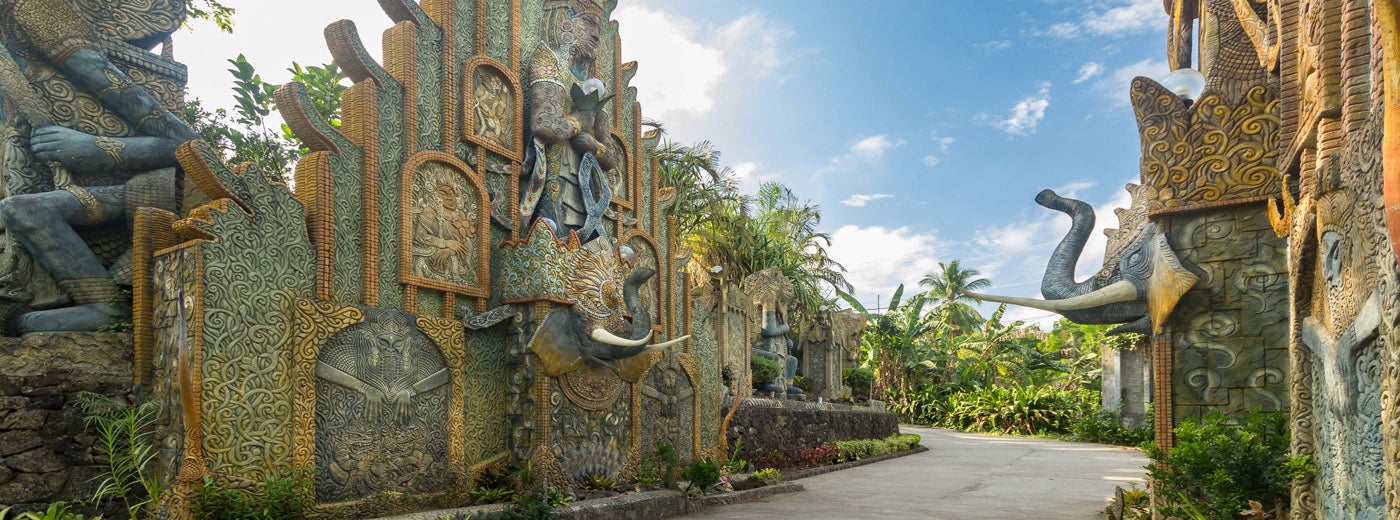
15 Best Tropical Bali-Like Resorts in the Philippines: Near Manila, Siargao, Cebu, Bohol

10 Best Treehouse Resorts in the Philippines for a Scenic Getaway at Mountains, Beaches & Rivers

15 Best Farm Stay Resorts in the Philippines: Batangas, Bulacan, Cebu, Iloilo

13 Best Resorts in Bohol Philippines: Beachfront, With Pool, Family-Friendly

12 Best Laguna Province Tourist Spots: Spring Resorts, Lakes, Falls
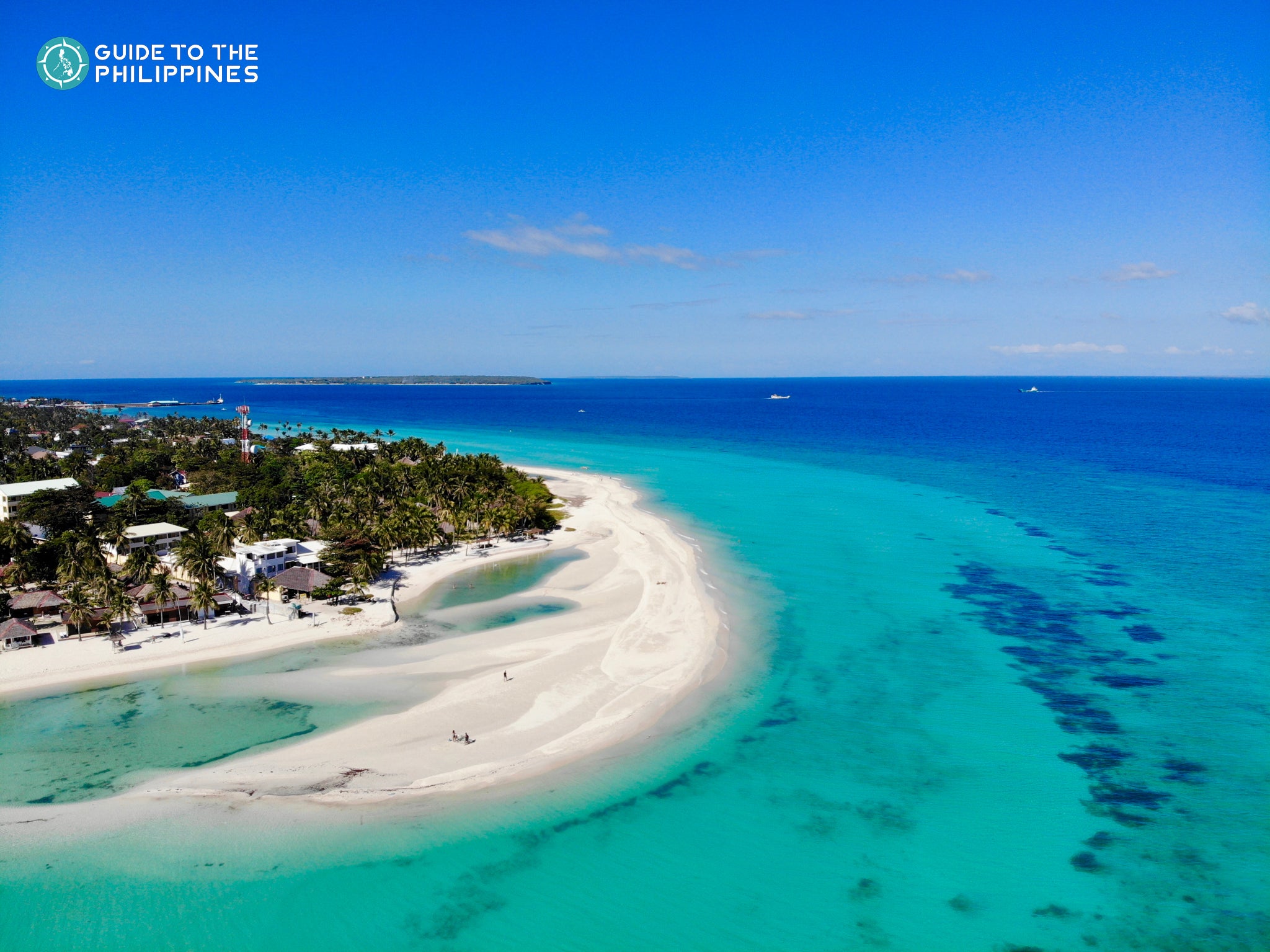
20 Best Beachfront Resorts in Cebu: Mactan, Moalboal, Oslob, Malapascua

10 Best Budget-Friendly Quality Resorts Near Manila: Batangas, Zambales, La Union, Bataan
Other interesting articles.

Top 11 Glamping Resorts in the Philippines: El Nido, Batangas, Siargao

April in the Philippines Travel Guide: Weather, Best Places to Visit, Holidays

10 Best Budget-Friendly Cebu City Hotels

Download the Philippines’ biggest travel marketplace to your phone to manage your entire trip in one place
Scan this QR code with your phone camera and press the link that appears to add the Philippines’ biggest travel marketplace into your pocket. Enter your phone number or email address to receive an SMS or email with the download link.
Top things to do in the Philippines
Discover all the adventures you can experience in the Philippines

Philippines Tour Packages

Boracay Island

Bohol Island

Cebu Island

Coron Palawan

El Nido Palawan

Siargao Island

Iloilo City and Nearby

IMAGES
VIDEO
COMMENTS
The dry season starts from November until June. These months are considered the best time to travel to most destinations in the Philippines. The wet season, on the other hand, is from July to October. During this time, an average of nine typhoons hit the Philippines and may cause flooding and landslides in some areas.
Here, you can go on an optional tour of the city's top attractions, including Camp John Hay, Mines View Park, Wright Park, and the Botanical Garden, before wrapping up your 8 days in the Philippines. Day 1: Arrival in Manila. Day 2: Arrival in Sagada. Day 3: Sagada Cave Connection. Day 4: Choose Your Tour.
Costs of Traveling in The Philippines. Travel on a budget in The Philippines, from $180 − $350 USD weekly per person, mid-range $320 − $180 USD, and high-end from $180 − $240 USD. However, costs depend on factors like accommodation, transportation, and activities. We did not include flights.
Asia. The Philippines is defined by its emerald rice fields, teeming megacities, graffiti-splashed jeepneys, smoldering volcanoes, bug-eyed tarsiers, fuzzy water buffalo and smiling, happy-go-lucky people. Best Time to Visit. Attractions.
10 Day Philippines Itinerary Overview: Day 1: Arrive in Manila - depending on time, do some afternoon sightseeing. Day 2: Fly to Coron in the morning - explore the area or book an afternoon tour. Day 3: Island Hopping tour around Coron Island. Day 4: Island Hopping tour around nearby islands. Day 5: Fly to Cebu in the morning.
The Philippines is an archipelagic country made up of over 7000 islands. It's made up of 3 main island groups: Luzon, Visayas, and Mindanao. Its capital is Metro Manila, which is located in the NCR Region in Luzon. This unique geography means several things: It has an abundance of natural resources. It has numerous islands which are ideal for ...
The Philippines is a relatively easy travel destination by Southeast Asian standards. English is widely spoken, and the country has an endearing don't-worry-be-happy vibe, soothing for first-time visitors. Alas, volatile weather and natural disasters can mess up trips in a hurry, while a menu of 7000-plus islands creates itinerary headaches for even the most seasoned travel planners.
This complete Philippines travel guide covers everything you need to know when it comes to traveling to this beautiful country. Having been born and raised in the Philippines, I decided to put together this ultimate resource to help travelers plan a trip of a lifetime to my home country. With over 7,107 islands to choose from, the Philippines ...
Backpacking, Best Beaches, Bohol, Boracay, El Nido, f9, Island Hopping, Luxury travel, Palawan, Paradise, scuba diving, Siquijor, The Philippines, travel blog, Travel Blogger, wanderlust, Whale Sharks. The Travelista shares her 3 week travel itinerary around The Philippines, including top tips and essential things you need to know before visiting.
The Philippines is a very budget friendly travel destination, with hostels available from 300 Philippine pesos ($5 USD) and private hotels from 600 pesos. Meals are also cheap, costing about 70 to 300 pesos depending on location. Transportation in the Philippines is generally by motorbike or car, and these can be rented, but hiring a driver is ...
The short answer is yes! Starting February 10, 2022, the Philippines opens it borders and allows foreign tourists in! It is mandatory for all travelers from abroad, be Filipino or foreigner, to register their arrival on https://etravel.gov.ph. Do it before your arrival date.
Budget - Budget hotels in the Philippines may cost you between $13-38 USD/night. Rooms within this category would come equipped with a fan or air-conditioner and a single bed. Mid Range - In the Philippines, a mid-range hotel may cost you around $40 USD. Rooms are equipped with a private bathroom with hot water.
Local Languages: English, Tagalog, Cebuano. Etiquette Tips: Do not flash valuables, do not give money to begging children, do not pay to hold a monkey, do not feed wild monkeys, do not litter. WIFI: Available in most, if not all, accommodation throughout the country. Many restaurants offer free WIFI too.
Philippines Travel Guide for First-Time Visitors. Hiking up from the Batad village. Photo: Mike Aquino. The Philippines is part of Southeast Asia, and yet apart from it. It is the only Southeast Asian country with no land links to neighboring countries, meaning that any visit from the mainland is an out-of-the-way one.
1. Travelers 15 years and older shall present a remotely supervised/laboratory-based Rapid Antigen Test administered and certified by a healthcare professional in a healthcare facility, laboratory, clinic, or other similar establishment taken 24 hours prior to the date and time of departure from country of origin/first port of embarkation in a ...
1.1 Check for ATMs on the islands in the Philippines'. 1.2 Keep Pesos at hand for the airport departure fees. 1.3 Do not drink the water in the Philippines. 1.4 Take mosquito repellent. 1.5 Pack lightly. 1.6 Leave plenty of time for travelling between islands in the Philippines.
A smile and a simple 'Salamat' (thank you) go a long way, so learning some Filipino phrases can be quite handy. Pack Your Bags for Unforgettable Adventures. ... Full Philippines Travel Guide: 4-week Travel Route - by Abroad Anna. Pin Now. Read Later. About the Author. Backpacker Guides. Australia (44) Cambodia (95) Indonesia (15) Laos (32)
Discover two paradise islands in the Philippines: world-famous Boracay and El Nido on Palawan. Enjoy luxurious hotels, white sandy beaches, a fascinating underwater world and the hospitality of the local population. view trip ⤍. 15 days.
Rough Budget. Although it is still considered cheap, compared to other Southeast Asian countries, the Philippines is still slightly more expensive with accommodation usually being the biggest expense. A comfortable budget would be around $35-40 a day, depending on your travel style.
There are stringent travel protocols and restrictions for U.S. government employees under the U.S. Embassy's (Chief of Mission) security responsibility when traveling to certain areas of the country as stated below. for additional information on travel to the Philippines. Monitor local media for breaking events and adjust your plans based on ...
U.S. Embassy Manila, Philippines. U.S. Consular Agency Cebu, Philippines June 8, 2022 Message for U.S. Citizens: Philippine Entry and Exit Requirements Entry to the Philippines: Although travel to the Philippines is now permitted, U.S. citizens should know and comply with arrival and departure requirements as promulgated by the Philippine government, which generally include the following as a ...
PHILIPPINES TRAVEL GUIDE - WHEN TO VISIT. One of the most frequent questions and emails I get from those looking for the Philippines travel guide is the best seasons to visit the country. Thanks to the distinct location and the climate conditions, the best time to plan your trip varies from other countries.
Install the Philippines' biggest travel app. Download the Philippines' biggest travel marketplace to your phone to manage your entire trip in one place. Explore the largest travel marketplace in the Philippines. Book now with the country's leading travel agency for a hassle-free vacation at the best rates!
When you say "Manila," it can mean two things. First, it can refer to the City of Manila, the capital of the Philippines. Manila is made up of 16 administrative districts, including Binondo, Ermita, Intramuros, Malate, and Quiapo, among others. Second, the greater Metropolitan Manila area is also referred to as Manila.